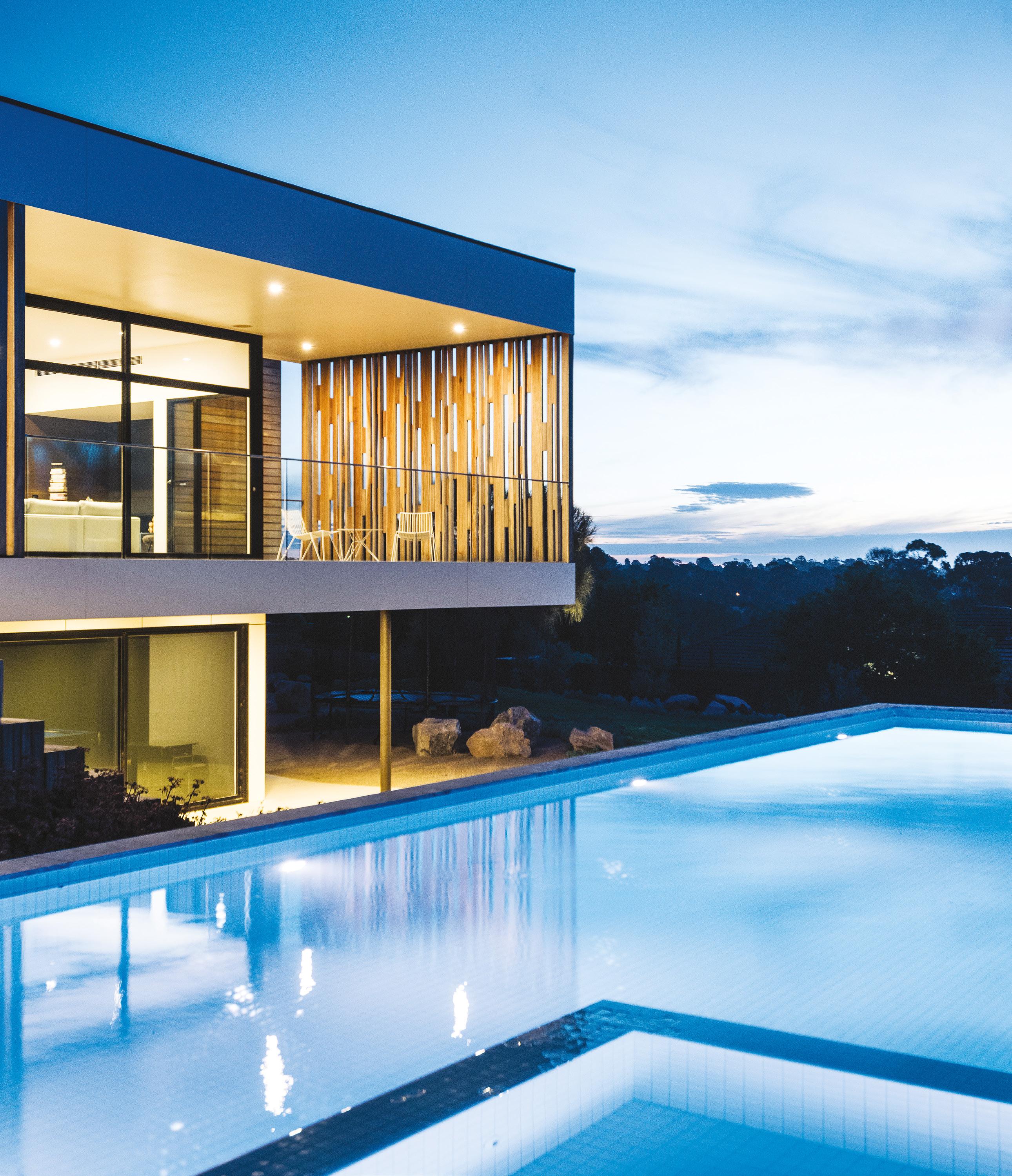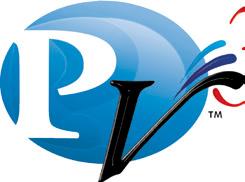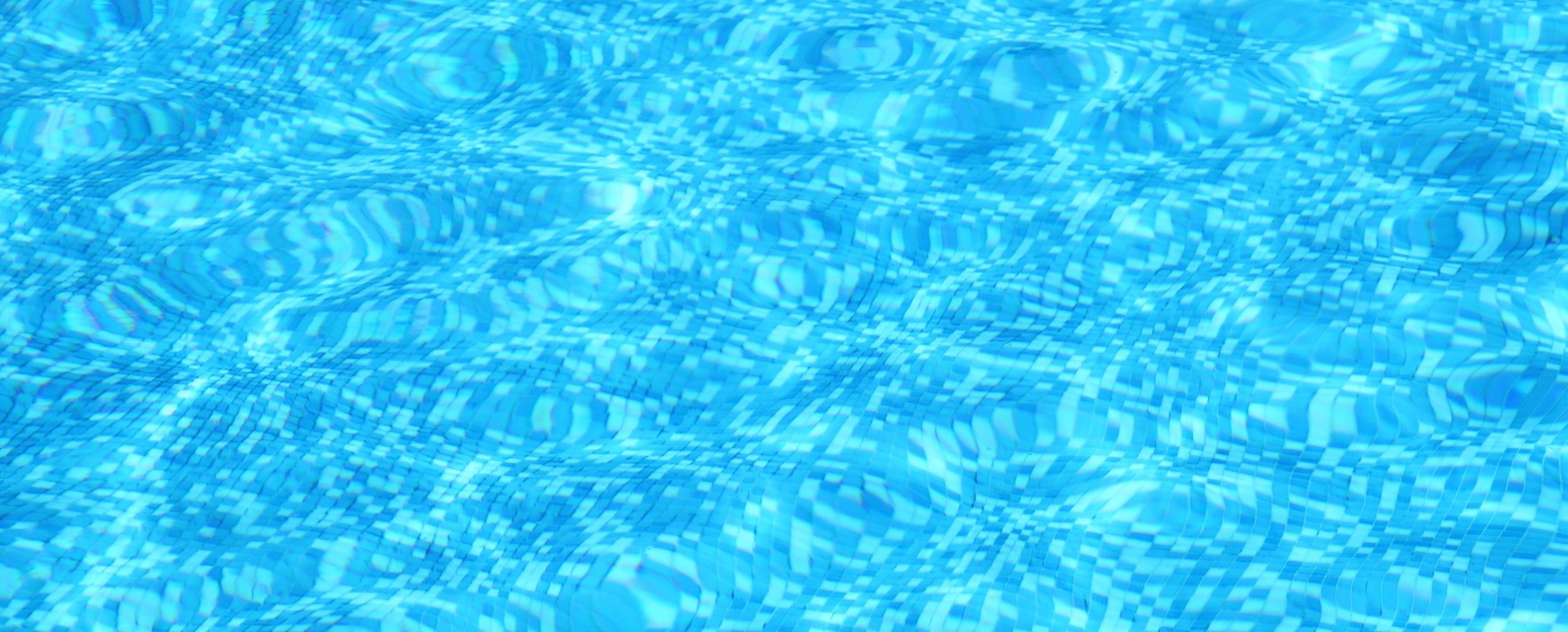IoT Empowering pool users

Australian manufacturing Surging ahead
The amazing versatility Of movable pool floors

IoT Empowering pool users

Australian manufacturing Surging ahead
The amazing versatility Of movable pool floors
For over 30 years AIS Water has been a leader in designing and manufacturing water disinfection technology for swimming pools.
Since 2000 we have manufactured our own quality anode material that forms the heart of our award-winning residential and commercial chlorinators.
AIS Water’s commitment to quality is not negotiable and means that our products, in particular our electrolytic cells, are renowned for their longevity.
We believe in collaboration, not competition. With the opening of our new, dedicated anode production facility in 2022, we can now proudly offer our Australian made anode material to fellow industry partners.

Please contact us today for all your anode material requirements, and make your supply chain issues and exorbitant freight costs a thing of the past.
Our new anode facility is further proof of AIS Water’s longterm commitment to our industry. It’s yet another reason to choose AIS Water.




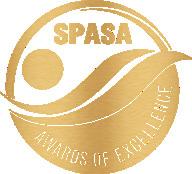
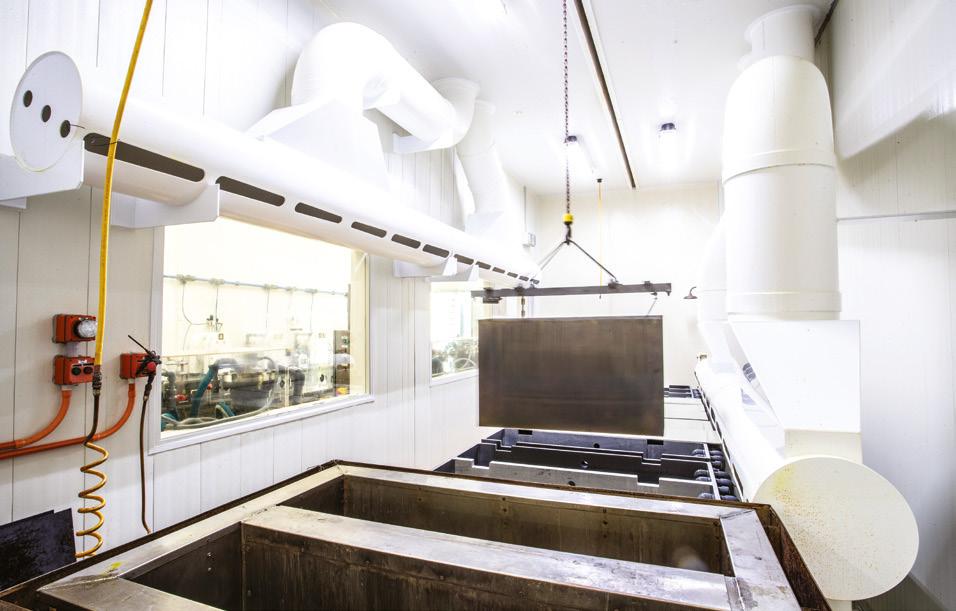





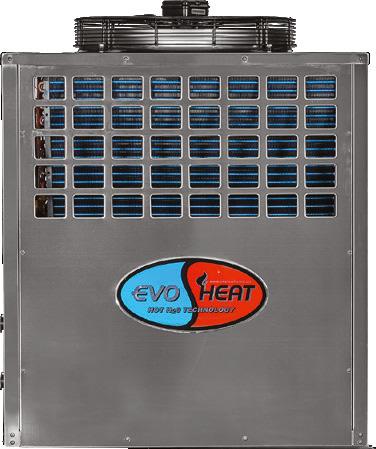




Ask us about our Evo Authorised Partnership today! Find out why we are the multi award winning heat pump supplier! Become an Evo Authorised partner and receive:

SHOULD HAVE DONE IT EARLIER!
Now able to enjoy the pool 24/7 and cost comparable to when we were using solar plastic pipe by using the same amount of electricity to power the pump. Well worth the investment and the model suits the size of our pool - Happy Days WA
EVO FORCE-I 19
Have never enjoyed the pool as much as when we had this heater installed. It is almost silent, keeping the pool perfectly heated all year round in Victoria. If you go to the expense of getting a pool, you want to use it as often as possible, and this is how you get the benefit - Damien C. VIC
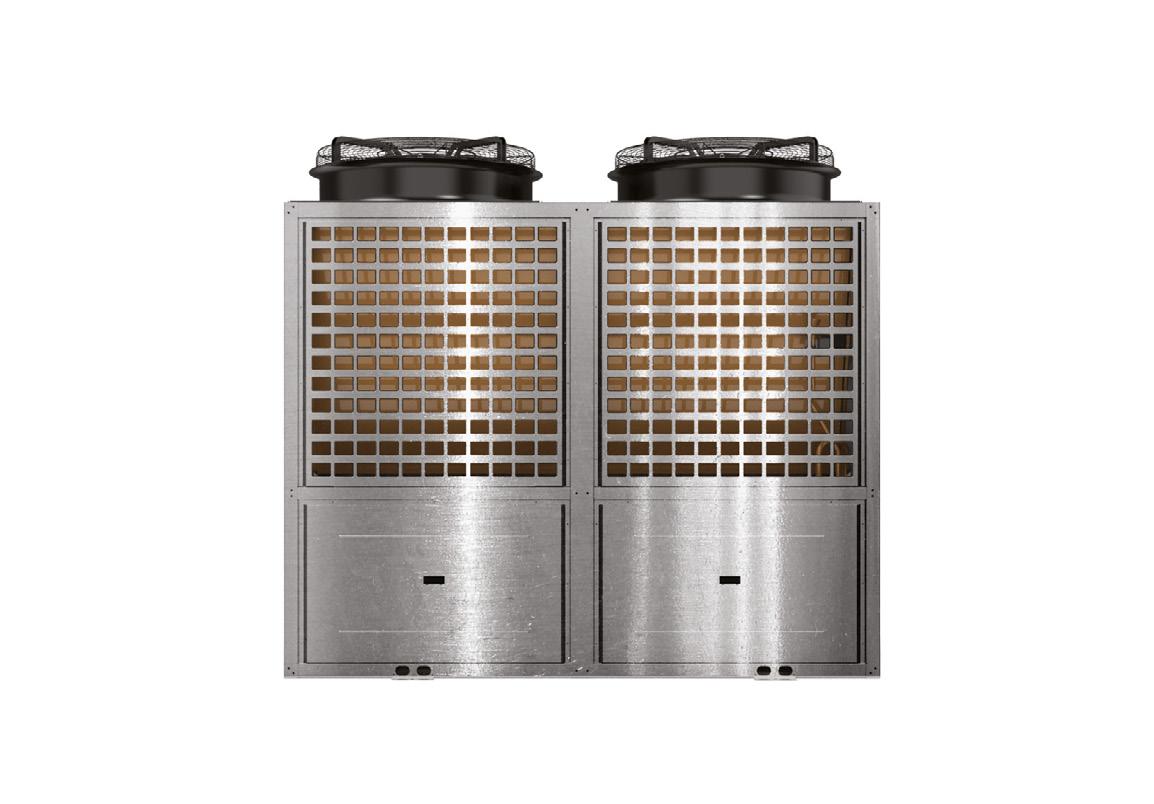

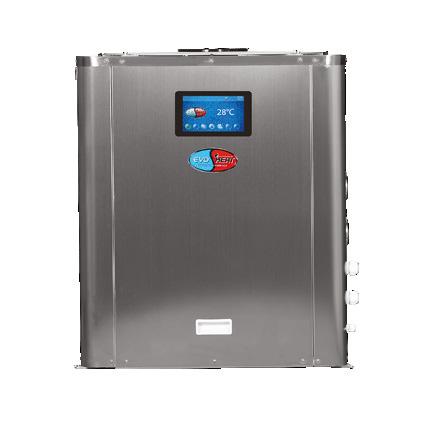
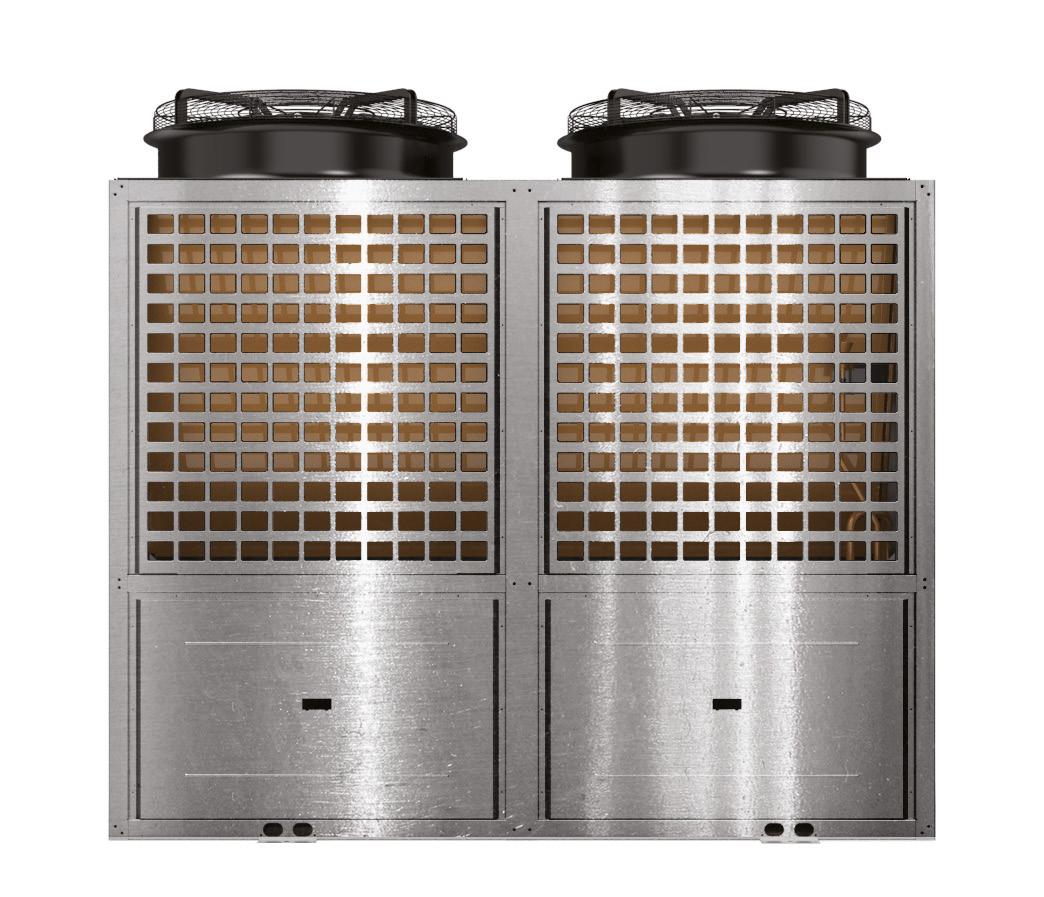

EXCELLENT

This is my third purchase of an EvoHeat pump (I move around a bit) and we love this product. It extends the use of your pool for many months. We previously lived in the tropics and used both the heat and cool features. Fantastic support provided by EvoHeat team - wouldn’t look anywhere else - Steve QLD

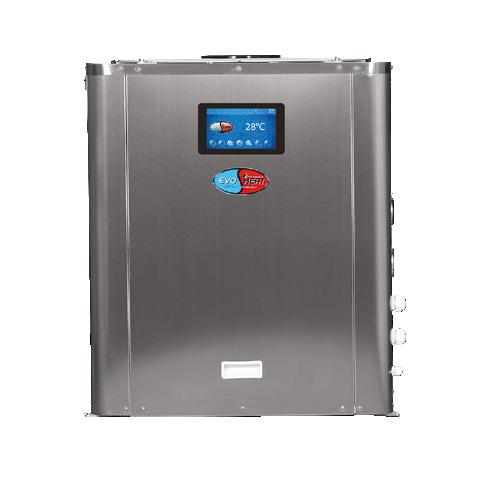
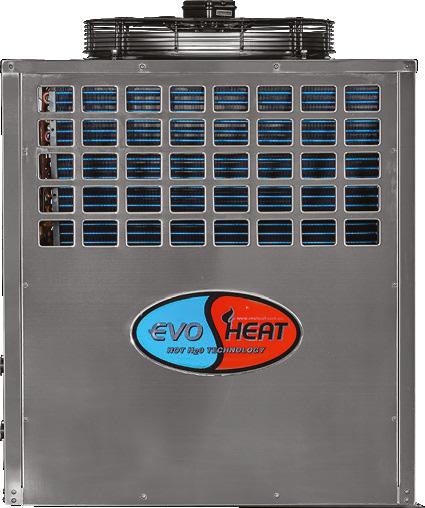
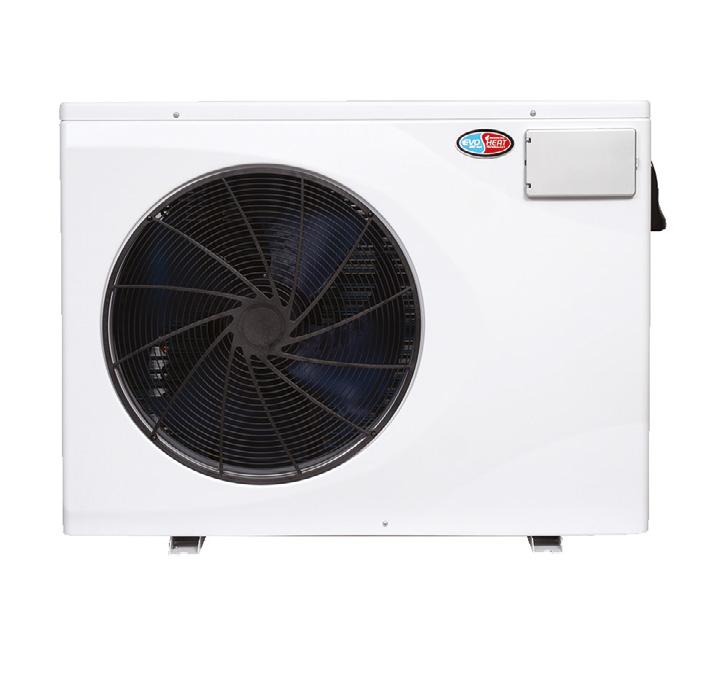
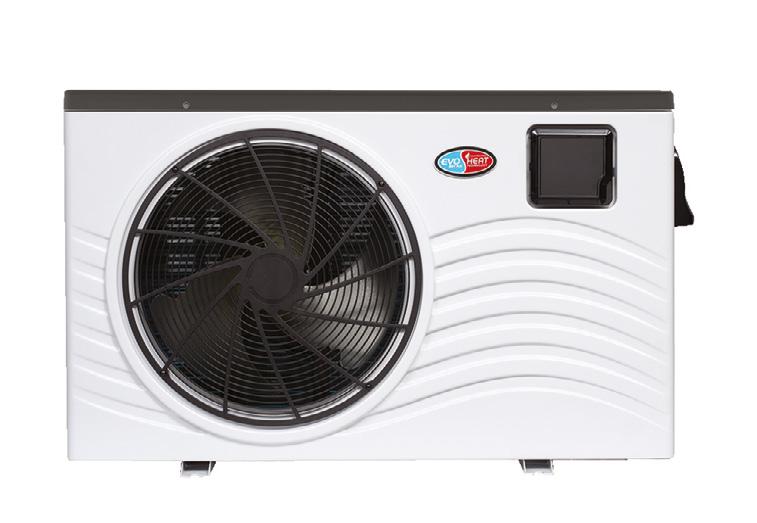
EXCELLENT CUSTOMER SERVICE




Absolute best customer service hands down, I feel extremely confident that EvoHeat won’t let me down. The fusion i9 is a quality build, its whisper quite and does a great job heating my small 12Kl plunge pool - Jaka WA






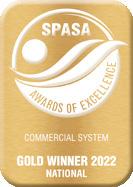
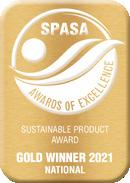




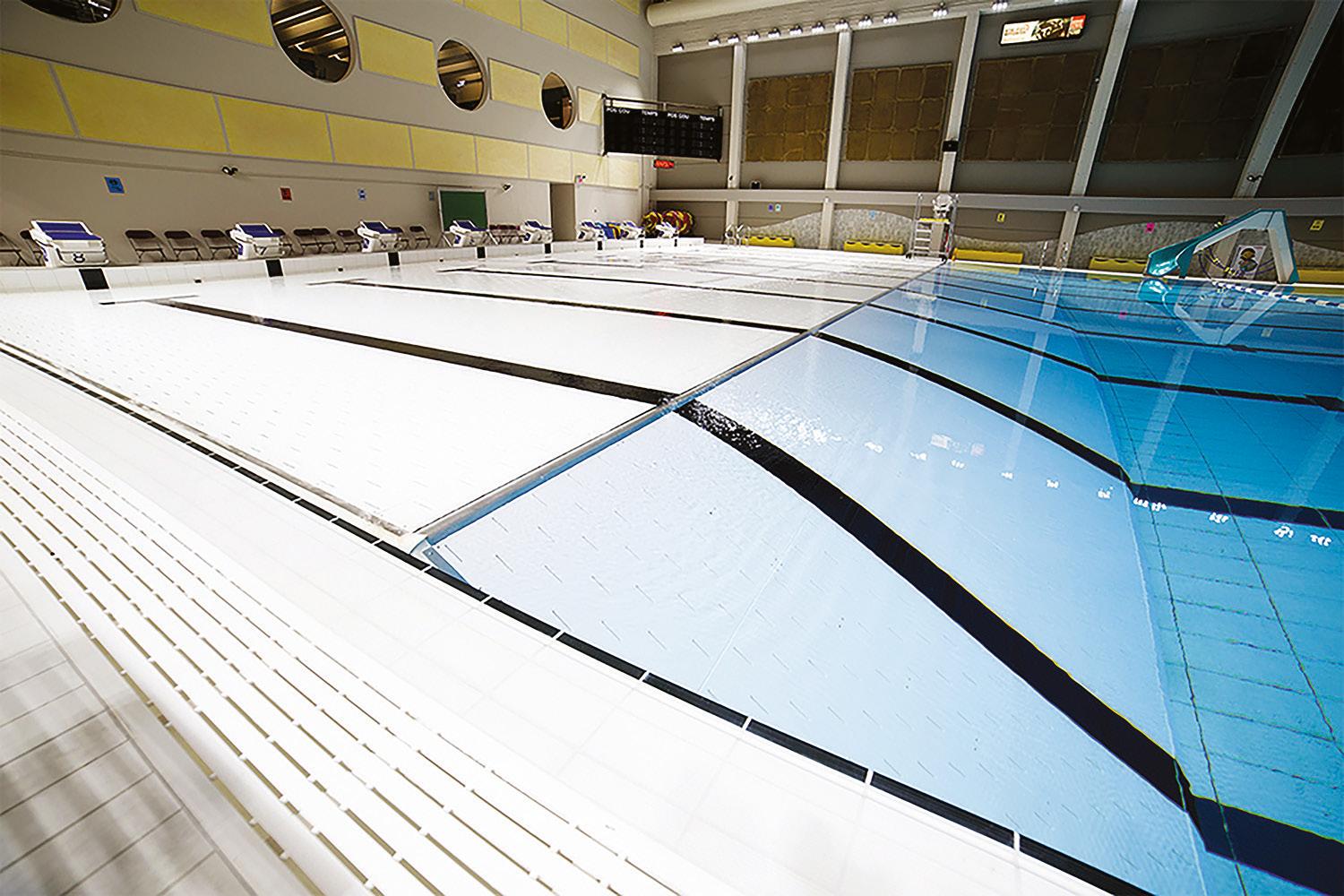
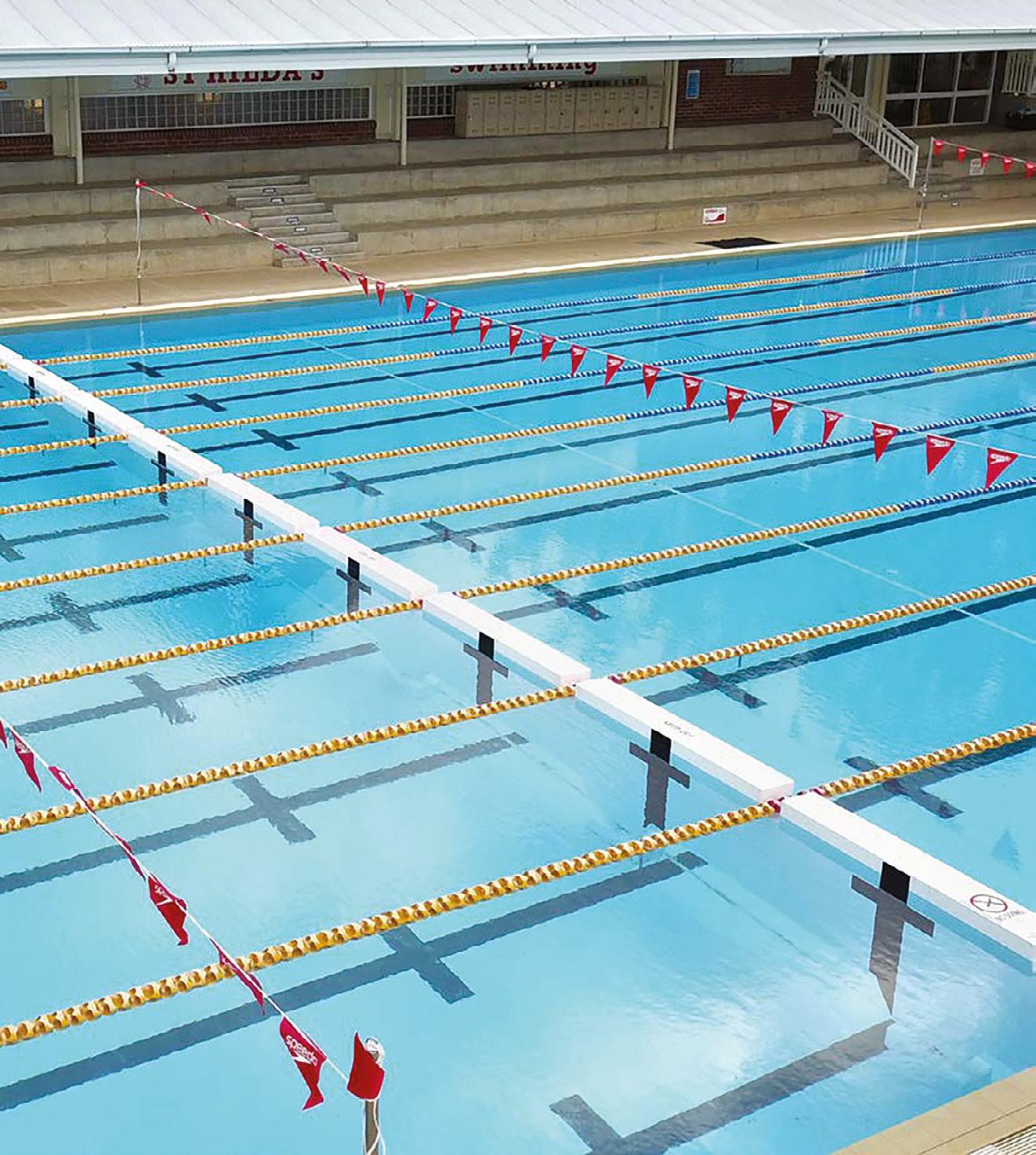
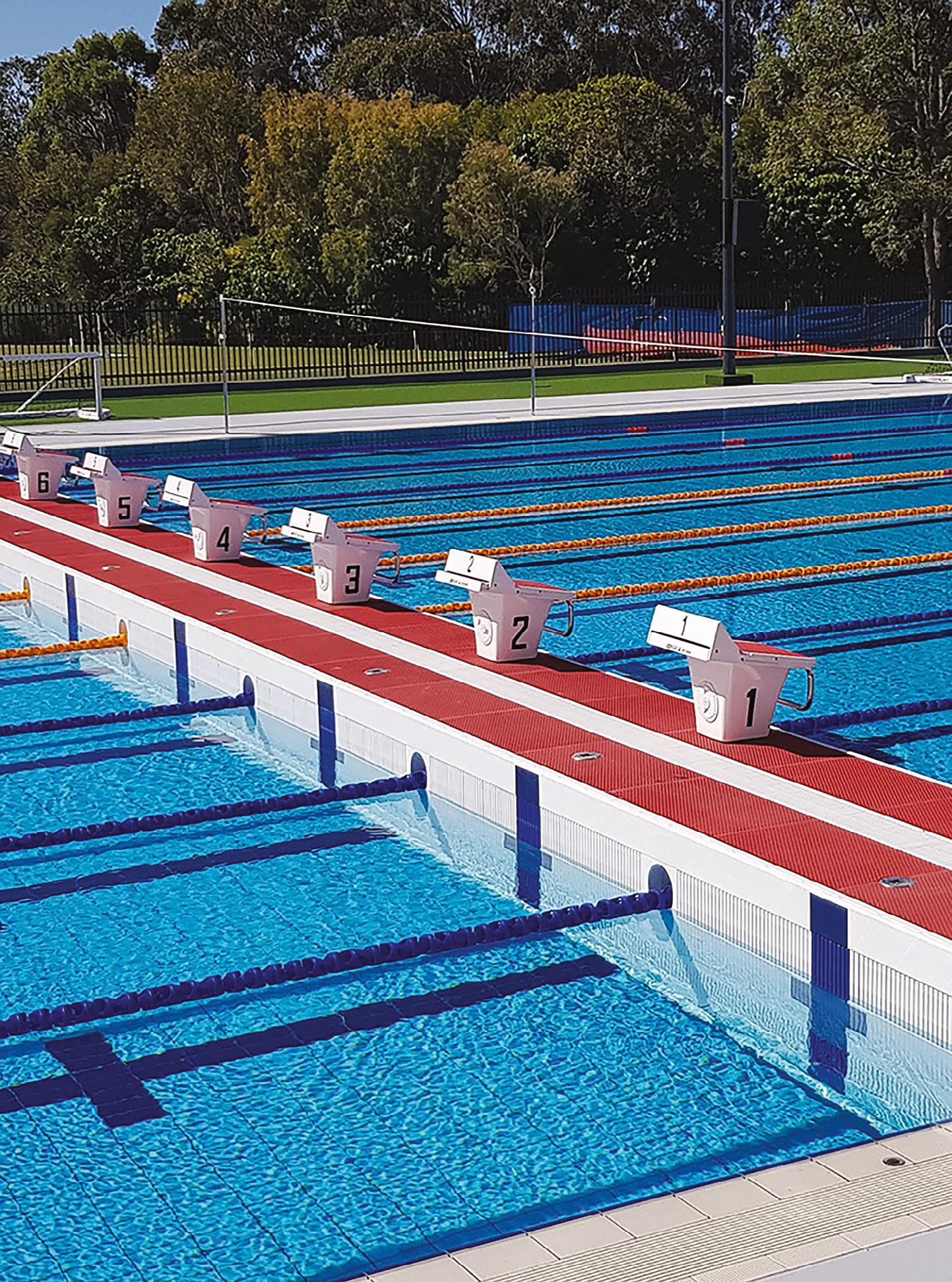

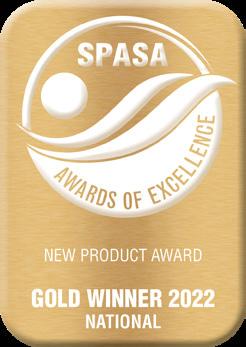

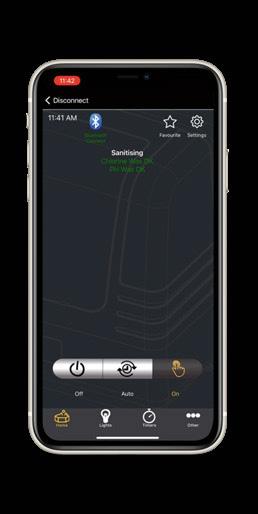


Published by The Intermedia Group Pty Ltd
Published by The Intermedia Group Pty Ltd


ABN 940 025 83 682
ABN 940 025 83 682
41 Bridge Road, Glebe, NSW, 2037 Australia
41 Bridge Road, Glebe, NSW, 2037 Australia
Ph: (02) 9660 2113 Fax: (02) 9660 4419
Ph: (02) 9660 2113 Fax: (02) 9660 4419
On behalf of The Swimming Pool & Spa Association of Australia Ltd (SPASA Australia)
On behalf of The Swimming Pool & Spa Association of Australia Ltd (SPASA Australia)
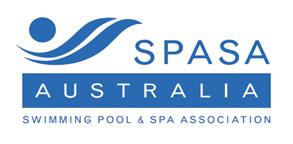





Managing Editor: Chris Maher
Managing Editor: Chris Maher
Phone: 0412 048 639
Phone: 0412 048 639
Email: chrismaher@intermedia.com.au
Email: chrismaher@intermedia.com.au
Contributor: Veda Dante, David Stennett.
Contributors: Veda Dante, Michelle Marks.
Advertising Manager: David Stennett
Advertising Manager: David Stennett

Phone: 0404 725 554
Phone: 0404 725 554
Email: david@spasa.com.au
Email: david@spasa.com.au
Art Director: Chris Papaspiros
Art Director: Chris Papaspiros
Production Manager: Jacqui Cooper
Production Manager: Jacqui Cooper
Subscriptions: 1800 651 422
Subscriptions: 1800 651 422
Email: subscriptions@intermedia.com.au
Email: subscriptions@intermedia.com.au


Copyright
Copyright
All material in this publication is copyright to the publisher and/or its contributors. No material may be reproduced without the express permission of the publishers.
All material in this publication is copyright to the publisher and/or its contributors. No material may be reproduced without the express permission of the publishers.
Disclaimer: This publication is published by The Intermedia Group Pty Ltd (the “Publisher”) on behalf of SPASA Australia. Materials in this publication have been created by a variety of different entities and, to the extent permitted by law, the Publisher accepts no liability for materials created by others. All materials should be considered protected by Australian and international intellectual property laws. Unless you are authorised by law or the copyright owner to do so, you may not copy any of the materials. The mention of a product or service, person or company in this publication does not indicate the Publisher’s endorsement. The views expressed in this publication do not necessarily represent the opinion of the Publisher, its agents, company officers or employees. Any use of the information contained in this publication is at the sole risk of the person using that information. The user should make independent enquiries as to the accuracy of the information before relying on that information. All express or implied terms, conditions, warranties, statements, assurances and representations in relation to the Publisher, its publications and its services are expressly excluded save for those conditions and warranties which must be implied under the laws of any State of Australia or the provisions of Division 2 of Part V of the Trade Practices Act 1974 and any statutory modification or re-enactment thereof. To the extent permitted by law, the Publisher will not be liable for any damages including special, exemplary, punitive or consequential damages (including but not limited to economic loss or loss of profit or revenue or loss of opportunity) or indirect loss or damage of any kind arising in contract, tort or otherwise, even if advised of the possibility of such loss of profits or damages. While we use our best endeavours to ensure accuracy of the materials we create, to the extent permitted by law, the Publisher excludes all liability for loss resulting from any inaccuracies or false or misleading statements that may appear in this publication.
Disclaimer: This publication is published by The Intermedia Group Pty Ltd (the “Publisher”) on behalf of SPASA Australia. Materials in this publication have been created by a variety of different entities and, to the extent permitted by law, the Publisher accepts no liability for materials created by others. All materials should be considered protected by Australian and international intellectual property laws. Unless you are authorised by law or the copyright owner to do so, you may not copy any of the materials. The mention of a product or service, person or company in this publication does not indicate the Publisher’s endorsement. The views expressed in this publication do not necessarily represent the opinion of the Publisher, its agents, company officers or employees. Any use of the information contained in this publication is at the sole risk of the person using that information. The user should make independent enquiries as to the accuracy of the information before relying on that information. All express or implied terms, conditions, warranties, statements, assurances and representations in relation to the Publisher, its publications and its services are expressly excluded save for those conditions and warranties which must be implied under the laws of any State of Australia or the provisions of Division 2 of Part V of the Trade Practices Act 1974 and any statutory modification or re-enactment thereof. To the extent permitted by law, the Publisher will not be liable for any damages including special, exemplary, punitive or consequential damages (including but not limited to economic loss or loss of profit or revenue or loss of opportunity) or indirect loss or damage of any kind arising in contract, tort or otherwise, even if advised of the possibility of such loss of profits or damages. While we use our best endeavours to ensure accuracy of the materials we create, to the extent permitted by law, the Publisher excludes all liability for loss resulting from any inaccuracies or false or misleading statements that may appear in this publication.
This issue of SPLASH! magazine published by The Intermedia Group Pty Ltd (Intermedia) may contain magazine or subscription; offers, competitions, forms and surveys (Reader Offers) which require you to provide information about yourself, if you choose to enter or take part in them. If you provide information about yourself to Intermedia, Intermedia will use this information to provide you with the products of services you have requested and may supply your information to contractors that help Intermedia to do this. Intermedia will also use your information to inform you of other Intermedia publications, products, services and events. Intermedia may give your information to organisations that are providing special prizes or offers that are clearly associated with the Reader Offer. Unless you tell us not to, we may give your information to other organisations that may use it to inform you about other products, services or events or to give it to other organisations that may use it for this purpose. If you would like to gain access to the information Intermedia holds about you, please contact Intermedia’s Privacy Officer at The Intermedia Group Pty Ltd, PO Box 55, Glebe, NSW 2037. Copyright © 2023 - SPASA Australia.
This issue of SPLASH! magazine published by The Intermedia Group Pty Ltd (Intermedia) may contain magazine or subscription; offers, competitions, forms and surveys (Reader Offers) which require you to provide information about yourself, if you choose to enter or take part in them. If you provide information about yourself to Intermedia, Intermedia will use this information to provide you with the products of services you have requested and may supply your information to contractors that help Intermedia to do this. Intermedia will also use your information to inform you of other Intermedia publications, products, services and events. Intermedia may give your information to organisations that are providing special prizes or offers that are clearly associated with the Reader Offer. Unless you tell us not to, we may give your information to other organisations that may use it to inform you about other products, services or events or to give it to other organisations that may use it for this purpose. If you would like to gain access to the information Intermedia holds about you, please contact Intermedia’s Privacy Officer at The Intermedia Group Pty Ltd, PO Box 55, Glebe, NSW 2037. Copyright © 2023 - SPASA Australia.
Proudly supported by
Proudly supported by


The views expressed in this magazine do not necessarily represent those of the above supporters, nor should any product advertised in SPLASH! magazine be seen to be endorsed by the above.
The views expressed in this magazine do not necessarily represent those of the above supporters, nor should any product advertised in SPLASH! magazine be seen to be endorsed by the above.

Australia has been known for making things at different points in its history. Cars, warships and aircraft at one end; furniture and fashion at the other; and a whole of lot of things in between.
But as overseas manufacturing became cheaper, many homegrown industries moved offshore, transforming our industrial areas from being full of factories making stuff, into rows of warehouses storing imported goods.
When one factory goes, it has a flow on effect. When automotive left after the end of subsidies, for example, hundreds of smaller supplier businesses went under as well.
The same can be said when a factory starts up, expands, or just keeps on keeping on. It employs its own staff, and also helps keep many more employed in the chain.
The Intermedia Group takes its Corporate and Social Responsibilities seriously and is committed to reducing its impact on the environment. We continuously strive to improve our environmental performance and to initiate additional CSR based projects and activities. As part of our company policy we ensure that the products and services used in the manufacture of this magazine are sourced from environmentally responsible suppliers. This magazine has been printed on paper produced from sustainably sourced wood and pulp fibre and is accredited under PEFC chain of custody. PEFC certified wood and paper products come from environmentally appropriate, socially beneficial and economically viable management of forests.
Chris Maher Managing Editor chrismaher@ intermedia.com.auDespite the availability of cheaper offshore options, many Australian manufacturers managed to stay in business – and new ones have sprung up – finding that it is possible to compete with foreign industries and produce goods for this market.
Over the next few issues we will talk with some of our local swimming pool and spa equipment manufacturers, and find out how they have managed to remain competitive in this environment – what obstacles they overcame, what benefits they found in local manufacturing, and what they see in the future.
First cab off the rank is Fluidra – a company whose Australian manufacturing history goes back more than 25 years. Operations manager Brendan Butler has plenty of valuable insights on local manufacturing and production efficiencies.
This issue we also look at a raft of other engaging subjects movable pool floors, last year’s National Business of the Year, the post-cyclone recovery in New Zealand and a swim school dedicated to teaching neurodivergent children.
I hope you enjoy it.
A sky-high pool by National Business of the Year 2022, Aloha Pools. Image by Michael Kai Photography. There is more on this company on page 58.


Supreme Heating is excited to announce the arrival of NOVAPRO290, Australia’s first pool heat pump that utilises R290 as a refrigerant. R290 is a natural hydrocarbon that has a Global Warming Potential (GWP) of only 3!

This is in stark contrast to other commonly used refrigerants such as R32, which has a GWP of 677. R290 is also known for its high energy efficiency and superior thermal properties.


NOVAPRO290’s compact size, sleek design, and side-discharge make it a great option for those looking for a space-saving pool heating solution.
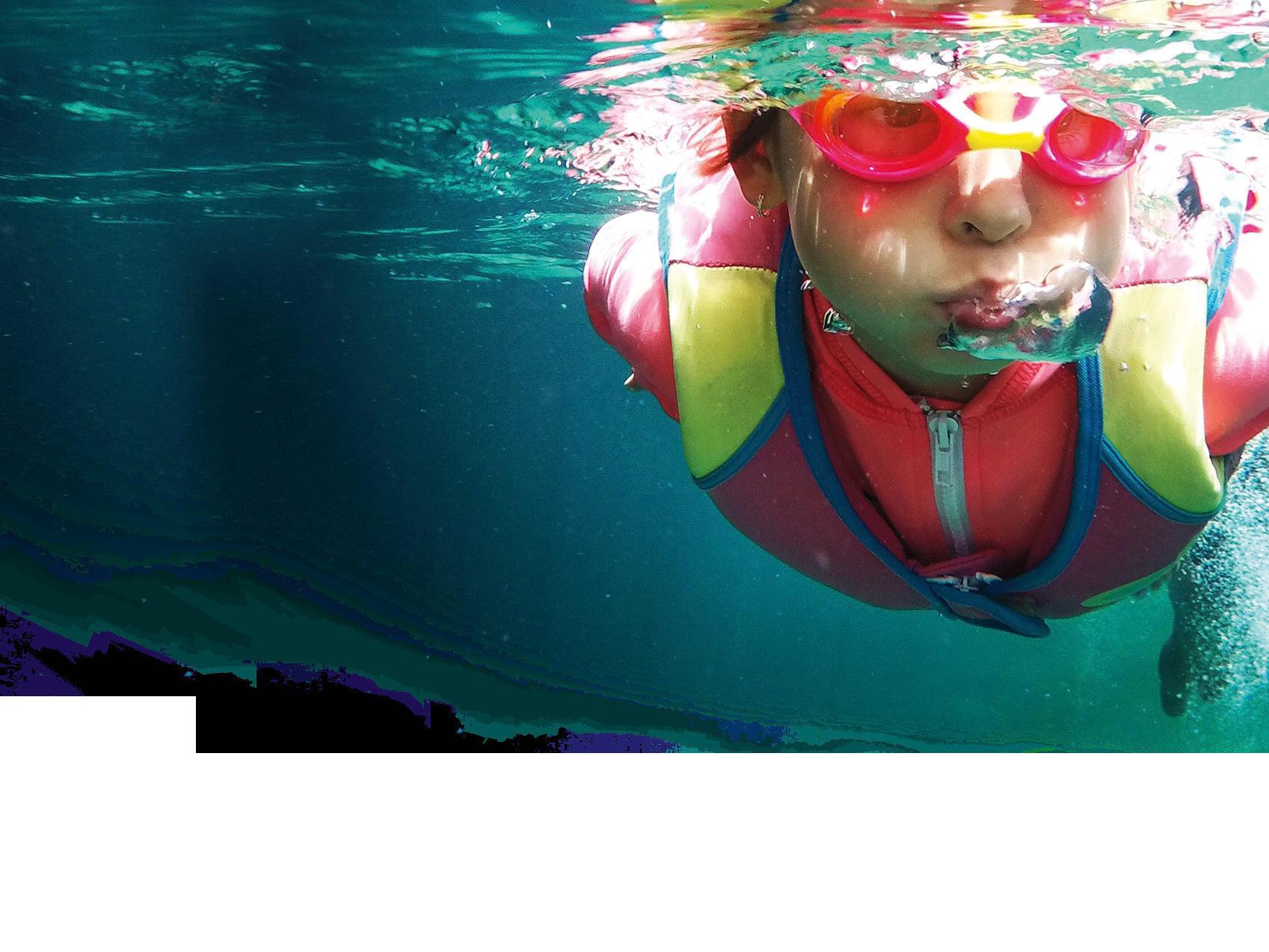
25
36 IoT empowering pool users
Veda Dante looks at how residential swimming pool and spa automation has made leaps and bounds over the past decade, and where the trend could lead.

50 Fluidra’s quarter century of Australian manufacturing
In the first of a series of articles about local manufacturing, we talk to Brendan Butler, operations manager in charge of Fluidra’s largest single factory globally.
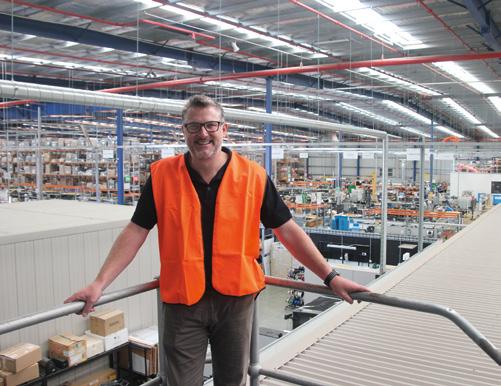
58 A legacy of three generations
We look at the 2022 National Business of the Year, Aloha Pools, and how each of the three generations of Fells has contributed to its success.
68 The versatility of movable pool floors
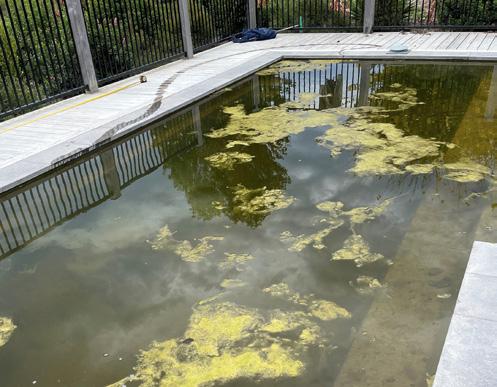
35
Veda Dante looks at how aquatic centres are increasingly taking advantage of the versatility of building swimming pools with movable floors.
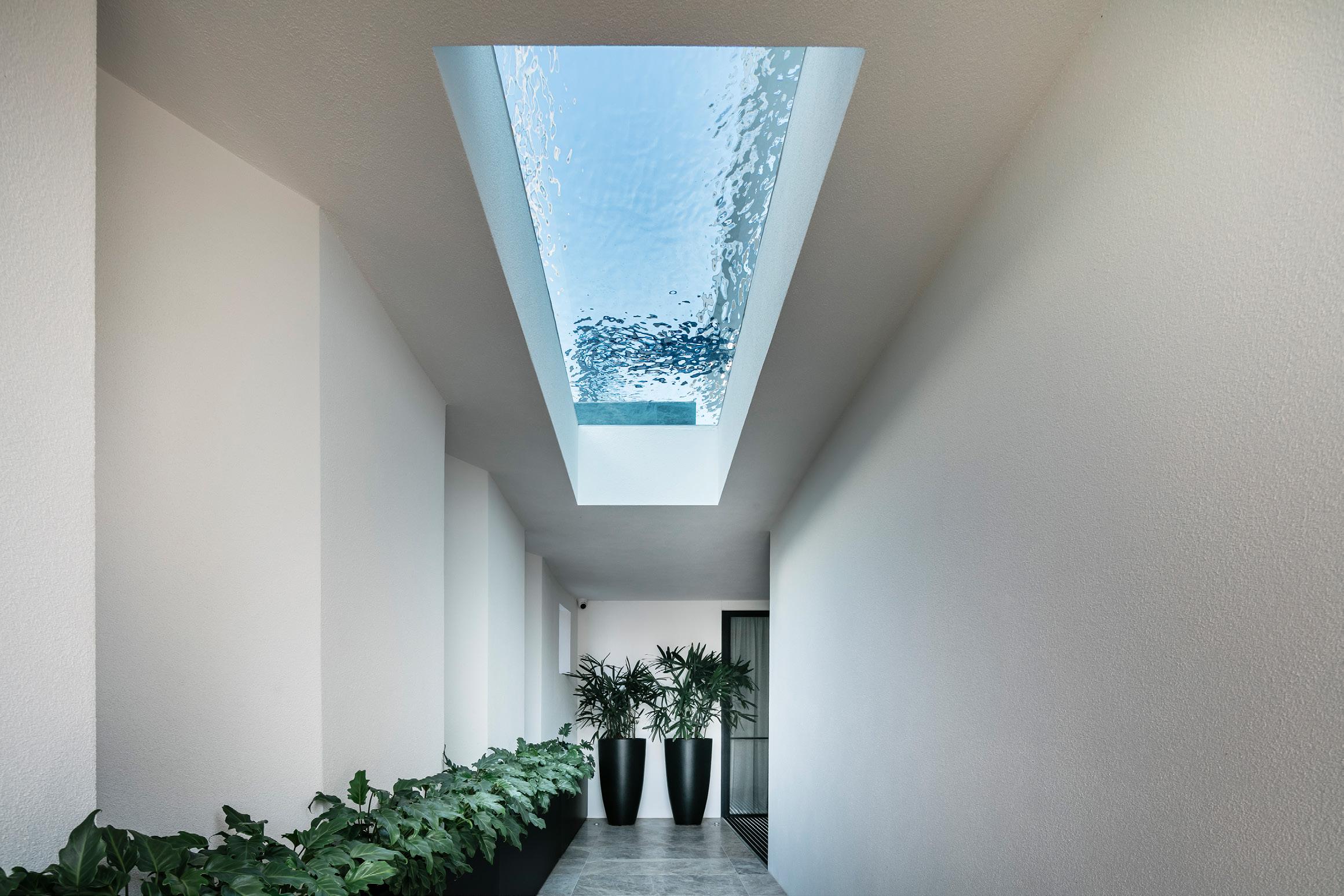
76 Helping neurodivergent kids swim more easily
Carol Jennings, a swimming instructor and mother of neurodivergent children, explains how to better teach children with special needs.
Three recent consumers expos have shown that latent demand is still high for swimming pools, despite cost of living pressures and rising interest rates.
At the Sydney event, numbers returned to pre-covid levels. In Adelaide 90 per cent of the visitors were first timers, with 80 per cent of them intending to buy. And the Perth show broke visitor records with 3500 adults coming through the doors.


Below are some observations of and news from the shows.
“The quality of the show has been fantastic – it couldn’t be better. Previous years we had a lot of people coming through just thinking about putting in pools, this year the quality of the people that are coming through is high: they’re already at planning stages, going through DAs, working with designers, working with architects at the mid-to-high end of the market. Everyone is ready to rock’n’roll, but they’re planning ahead as well. People are aware of what’s happened with logistics and material availability, and are planning to do selections well ahead of time.”
“It’s been a very good day today. I wasn’t here yesterday, but Sunday has been very positive, we had lots of customers come through with a quality inquiry level. Recently, we acquired Miami Pools, which is a long standing fiberglass business in the Sydney market. So we’ve brought that into our fold. And it’s been a very positive show with that. Miami Pools is a manufacturing business that had been making about 300 pools per year. We manufacture the shells out of our factory in Liverpool. In that factory, we’re making both the modular aboveground pools as well as the fiberglass pools. So a bit unique in the sense that we can offer both of those to the consumers.”
Joel Stern, Sterns Pools“Our products have been tried and tested over 30 years, and we’ve got a great footprint in southeast Queensland, but we’ve now started to go to Sydney, go to Melbourne to show end users what they can have, but also to meet pool builders. The most popular shade size is the four metres, which is why we bring them to the shows, but we go up to five metres – the five metres is massive. The customer picks their frame colour, canopy colour, canopy size, canopy shade, and they’re ready in about four to six weeks.
Tom Rogerson, Revolvashade“It’s been a fantastic day. Lots of lots of new opportunities, lots of consumers seeing the products, loving what we’re doing. They loved the safety and the clean look of the new V-Lock skimmer lid. We’ve got four different models to suit basically any sort of infill that you need: timber, stone, tile. This year looks really, really busy for us.
Marc Fraser, Aquea Perth
SPASA’s WA region manager Rebecca Smith says they had great representation from all aspects of the industry covering everything pool and spa.
“Exhibitors were extremely happy with the amount of foot traffic and received great sales, interest and lead numbers,” she says.
“This year we introduced Info Hub sessions and these proved exceptionally popular with expo visitors. All sessions were very well attended with our guest speakers being very well received, spending plenty of time answering questions and elaborating on their chosen topics – this is definitely a must for next year!”
David Stennett caught up with Aquatic Leisure Technologies managing director Lynley Papineau at the expo, and her observations on the show and the Western Australian market are on page 22.

It’s been crazy busy, one after the other, quotes after quotes and plenty of leads as well. More families with young kids seem to be the main type of people coming through. The show looked a lot better than last year and not a lot of wasted space. Very successful.
Mick Dean, Everclear Pools SAThis weekend is actually a record show for us so far – absolutely amazing and cannot be happier with the results, especially from yesterday.
Dale Jamieson, Spa WorldThe quality of the visitors has been good and not a lot of tyre kickers around, there’s more buyers. They either want the product now or within the next six months. There’s still an hour to go but I believe we could have a record Adelaide show.
John
Padelis, Just SpasThe show has been more surprising than last year. Saturday was a bigger turnout for us as more people came through, a lot more builders with knowledge of our product. It was a very good turnout for us.
Neil Royce, Stone & Ceramic Tile WholesalersThe number of people that come through for pool quotes was great and the quality of leads was fantastic. I think everyone is going to do really well from this one … money well spent.
Mark Huston, Riverina PoolsThe show has been fantastic, great display, really enjoyed our time with Fluidra, it’s worked out really well with lots of customers.
Kim Mather, SunbatherThe show has been very good this weekend. Even though today has been a bit wet, we have seen a lot of people come through, which is encouraging that the market is still strong here in South Australia.
Delena Farmer, Narellan Pools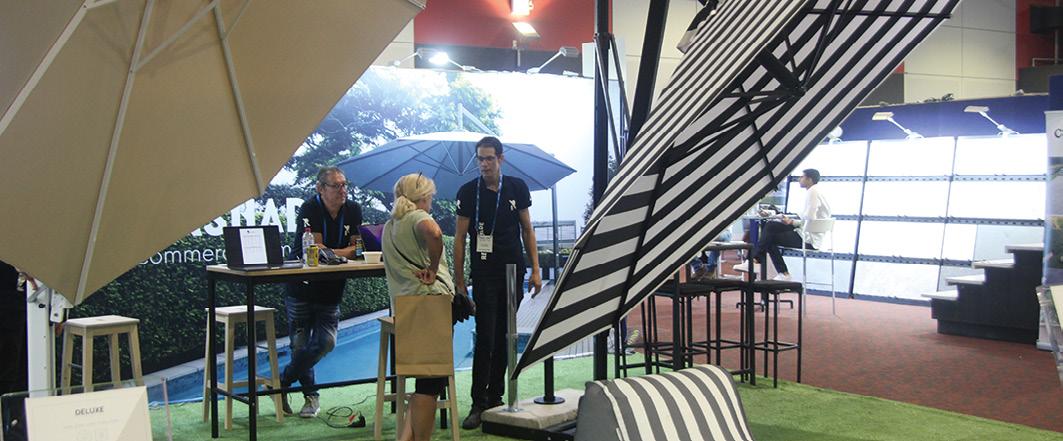
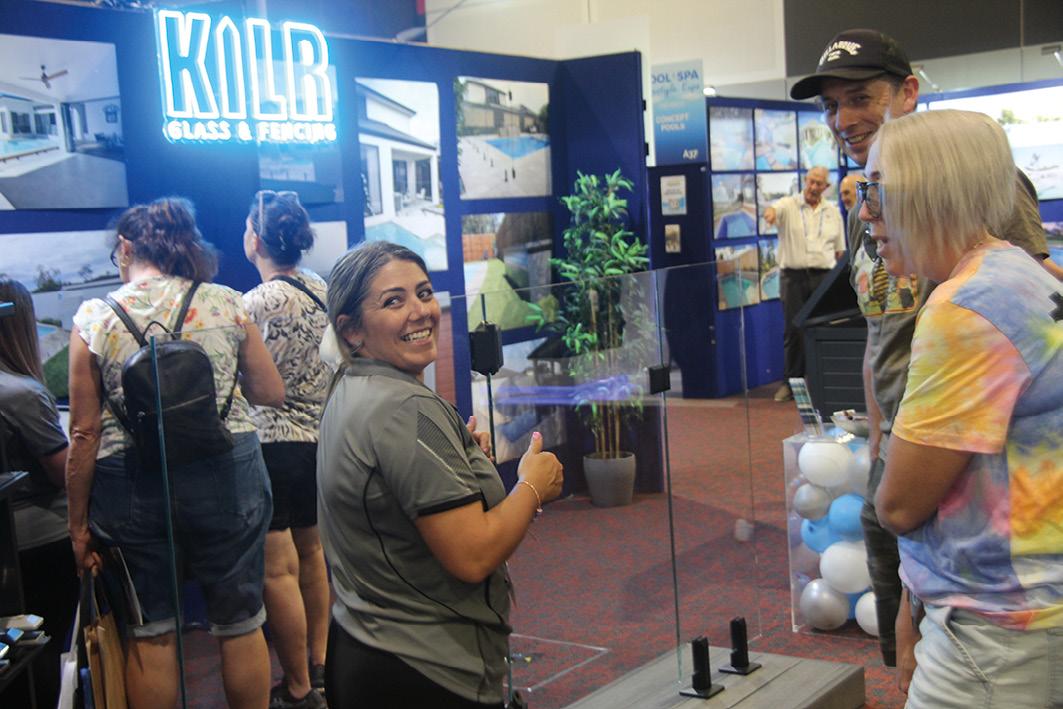
Comparing the available pool DA figures for the 12 months to March with the same period last year, annual applications were down by four percent nationally. Victoria was up 47 per cent, but all other states were down: Queensland by seven per cent, Western Australia by eight per cent, New South Wales by 22 per cent and South Australia by 29 per cent.
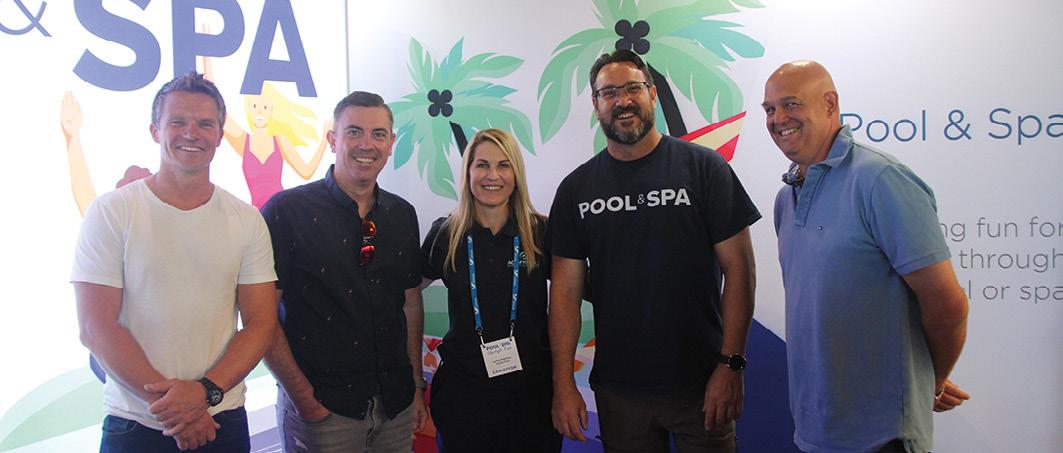

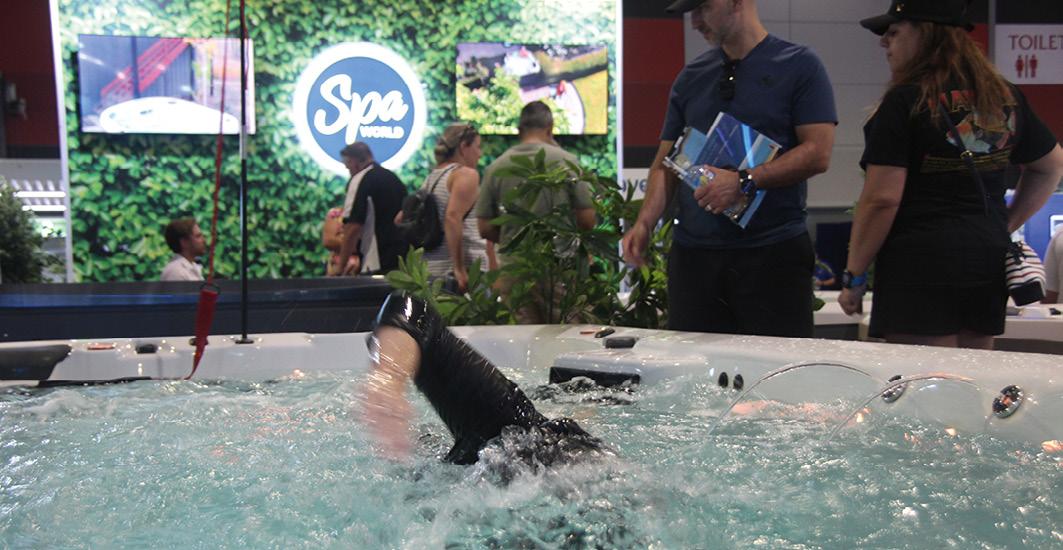
The numbers over the most recent three months were up by one cent nationally when compared to the same period last year. The April-March numbers from Cordell show Victoria up by a massive 103 per cent but all other states down: Western Australia by 16 per cent, Queensland by 19 per cent, New South Wales by 27 per cent and South Australia by 33 per cent.
While these figures give an indication of the way the market is trending, they are not comprehensive and don’t include all pools built or even all DAs lodged. By some estimates, the total national numbers including all types of pools could be almost double these figures. They do not include pool projects that are approved as part of a new home, smaller projects under the cost threshold, renovations that don’t require a DA, or some aboveground pools. Additionally, not all councils are forthcoming with data or report on time; councils in some states such as Queensland and Victoria are particularly reluctant. For further information, call Cordell Information on 1800 80 60 60.
Pool heating and equipment supplier Sunlover Heating has relocated its Queensland office from Molendinar to a brand new factory in Upper Coomera. The move is aimed at expanding the company’s warehouse space and improving product availability and storage.

The new factory, with a total building area of 1745 square meters, is equipped with stateof-the-art technology and modern amenities to better serve Sunlover Heating’s clients in the Queensland area. The new location also provides the company with more space for warehousing, allowing for greater inventory management and faster delivery times.
The directors of Sunlover Heating Queensland expressed their excitement about the move, with Peter Wappett saying it will allow them to continue to provide high-quality heating and equipment products to their clients, while also expanding their product offerings.
Kris Jones says the new factory is an exciting step forward.
“We are looking forward to using this new space to better serve our existing customers and reach many new trade opportunities within Queensland. The new premises will no doubt improve our overall operations,” he says.
New Address: Sunlover Heating, 11 Andys
Court Upper Coomera, Queensland 4209
Phone: (07) 5679 6821 Email: Kris@ sunloverqld.com.au
Meanwhile, Sunlover has appointed a new managing director, with Steve Rickard assuming the position.
Founder Rohan London says this appointment follows a period of organic advancement for Rickard, who has been a key leader of the team driving growth and innovation alongside himself and the Sunlover Queensland operation led by directors Jones and Wappett.
London, who will gradually step away from his day-to-day management responsibilities, says Rickard is ideally situated to take the reins and
Ultimate Pools general manager Rainbow Morris says the construction of their new swimming pool display centre is progressing well, and will be complete prior to the beginning of the season.
“We will be moving our team to the new location in June/July and opening to the public in time for the new 2023 Summer season,” she says.
The industry-leading complex will service both trade suppliers and end-users who will be able to access swimming pool products in a working environment.
The 11,000m2 site at Dairy Flat north of Auckland will encompass display swimming pools, a water testing and product research and development facility, extensive storage facilities,
drive the company forward. London will remain a valuable presence, contributing to important strategic decisions while easing into eventual retirement at a steady pace.
“Thanks to strategic placements and the manner in which we have built our talented management team over the past five years, we hold a very healthy position in the industry,” says London.
“Over the years, Steve and I have accomplished a great deal, and I am thrilled to witness the wider team, led by Steve, breathe life into our exciting plans in the coming years.”
Rickard was appointed director and general manager in 2008, and played a key role in integrating Sunlover’s NSW operation with Carlile Solar following the takeover, and in helping expand the retail and trade market in Sydney.
“Steve’s extensive experience in the development of new products and marketing knowledge has become a hallmark of Sunlover Heating,” says London.
“Under his leadership, the company is set to embark on a new chapter of expansion and progress, including the implementation of a new software system, relocating to larger offices in all three states, the introduction of new products, and the exploration of new markets in the pool and spa equipment space.”
Sunlover Heating currently has a committed team member and contractor base of approximately 75 people nationwide.
Keep informed by subscribing to the free online newsletter.
Giant pool display centre to be ready for upcoming season
An 11,000m2 site just north of Auckland is set to become the largest swimming pool display centre in New Zealand.
When complete, the new complex will service both trade suppliers and end-users
sales showrooms, product displays and a children’s entertainment area.
The online stories that made the news over the past two months.
Visitor quality high at Sydney show Visitation was up at the Pool & Spa Lifestyle Expo Sydney, with numbers returning to precovid levels.
Michelle Marks described the devastation on the North Island of New Zealand from Severe Tropical Cyclone Gabrielle.
Tragically, a man died a pool manufacturing facility in Queensland after being crushed by a fibreglass pool.
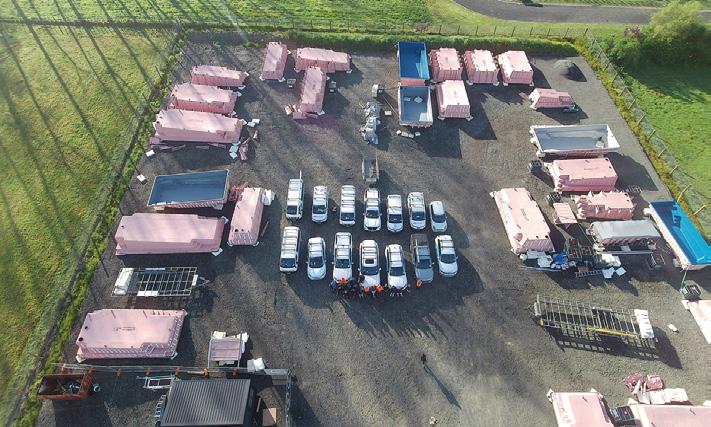
BWT continues local growth, acquiring Austral Pool Solutions
BWT Pool Group acquired Austral Pool Solutions Pty Ltd, a leading Western Australian pool equipment distributor.
2023
May 17-18 Country Pool Managers Conference, Goulburn, NSW
May 20-21 Pool & Spa Lifestyle Expo, Queensland
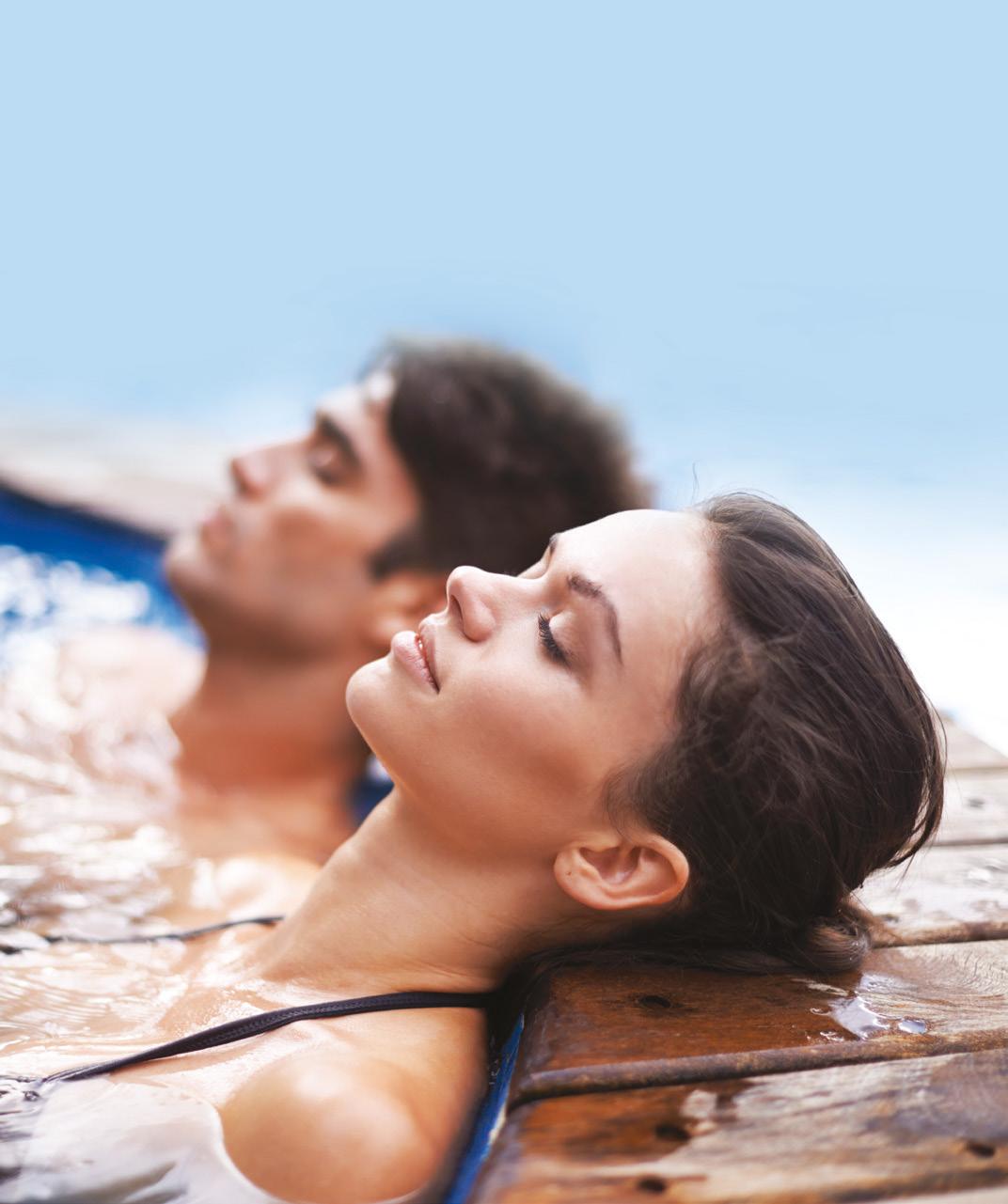



May 23 Pool Covers AS5348, IRL online
May 23 Solar Heating Systems (AS3634), IRL online
June 13-18 Worlds swimming trials, MSAC Melbourne
June 17 SPASA Awards of Excellence SA
June 22
World’s Largest Swimming Lesson
June 23 SPASA Awards of Excellence NZ
June 28-30 Outdoor Industry Summit, Lennox Heads
July 1 SPASA Awards of Excellence WA
July 5 Aquatic Hypothetical, Independent Theatre, North Sydney
July 7 Aquatic Hypothetical, Ivanhoe Girls Grammar, Melbourne
July 8-9 The Melbourne Backyard & Garden Show and Pool & Spa Show, MCEC
July 15 SPASA Awards of Excellence Qld
July 22 SPASA Awards of Excellence Vic
July 29 SPASA Awards of Excellence NSW
Aug 3 SPASA Awards of Excellence ACT
Aug 12 SPASA Awards of Excellence Tas
Aug 25-27
Melbourne Home Show
Sep 2 National Awards of Excellence, Sofitel Sydney Wentworth
Sep 19-20 Surf Park Summit, San Diego, USA
Sep 8-10 Brisbane Home Show
Oct 11-13
2024
Aug 21-22
Aquafun, Istanbul, Turkey
SPLASH! Pool & Spa Trade Show, Gold Coast Convention & Exhibition Centre
More details at splashmagazine.com.au. Dates are subject to change and should be checked with the relevant organisation. Send calendar submissions to info@splashmagazine.com.au

Reece recently opened a new Irrigation & Pools branch in Tweed Heads, New South Wales.
To cater to a broad customer base, the Tweed Heads Irrigation & Pools branch is located on a Reece multi-site, operating alongside Reece Plumbing.
The pandemic saw a marked increase in pool building activity in NSW, with more homeowners installing pools to increase the value of their properties. Strong demand combined with a favourable climate makes Tweed Heads a logical expansion point for Reece’s Irrigation & Pools business to help them service the needs of the local pool, spa and
landscape industries. Additionally, Tweed’s proximity to the Gold Coast Hinterland will help accommodate more efficient supply of irrigation supplies and expertise to that area.
Branch manager Lachlan Tonkin says that he is looking forward to assisting the local community in the pools, irrigation and landscape market.
“We’re a vibrant team and always willing to go the extra mile to give our local customers the service and expertise that Reece has become known for,” he says.
Reece Irrigation & Pools provides a range of leading brands catering to pool builders and pool service and maintenance technicians, combined with fast delivery, easy online ordering and other value-added services.
The Tweed Heads branch is located on Unit 1/44 Greenway Drive Tweed Heads South, NSW, 2486 and is open Monday to Friday, 6am to 4:30pm.

Fluidra has announced that aquatic industry expert, Yvette Audet, has joined their commercial team as NSW/ACT business development manager.
Audet has an extensive background in the aquatic and leisure industry which spans almost three decades.
General manager for Fluidra Commercial, Jeremy Smith says her experience in the industry – along with her involvement in relevant governance positions – offers valuable insights into the current aquatic trends and how best to meet customers’ needs and wants.

“We are very excited to have Yvette join the Fluidra Commercial team. Her experience in the commercial aquatics space both from an operational background and an understanding of new projects from early stage feasibility to completion brings a new perspective to our existing team of industry specialists,” he says.
“Along with her experience in the planning and
programming for aquatic leisure centres, and her strong customer focus, she is a good fit for the company as we launch further into the APAC commercial market.”
Smith says Audet’s position on the International Aquatic Circle and her vice president role in the International Association for Sport and Leisure Facilities (IAKS), combined with Fluidra’s presence in 45 countries, will enable the Fluidra Australia Commercial team to network globally, but still have a local focus. He adds that as a local manufacturer, Fluidra’s Australian-made products create solutions for aquatic spaces and places to maximise the customer experience.
“I am glad to bring my knowledge and skills across to the Fluidra team,” says Audet. “I look forward to strengthening my relationships in the aquatic industry to help provide affordable and responsible solutions for the betterment of our local communities.”
New Zealand modular pool builder, Containerpools Limited trading as Container Pools NZ, has gone into liquidation. The company website is no longer operating and the Google Review posts contain a litany of complaints about undelivered pools and equipment.
The company is registered at Albany, Auckland, with the director listed as Joel Michael Gordon Painter and other shareholders as Michael Painter, Nicola Louise Painter and Louise Nicola Painter. There are also other similarly named companies with some of the same directors and shareholders that are not currently marked by the Companies Office as being in liquidation, including ContainerpoolsNZ Limited, Container Pools International Limited and Containerpools Franchising Limited.
Liquidator Derek Ah Sam of Rodgers Reidy Limited says more information will become available as the process continues, but at the
moment, based on the company’s internal systems, it appears that there will be approximately $NZ3.5 million dollars owed to creditors. This includes finance companies and banks who are secured creditors and would be paid before consumers and other unsecured creditors. He says these procedures can take considerable time to get some recompense, especially if action is needed.
Additionally, the initial Liquidators Report says the liquidators are aware of preferential employee claims for unpaid wages and holiday pay totalling $NZ49,653, as well as a preferential claim from the Inland Revenue Department for outstanding tax obligations in respect to GST of $NZ147,565.77. Reports in the New Zealand media and on Facebook claim there are more than 50 consumers waiting on their pools to be delivered, with $NZ833,000 owing to suppliers.
Contact: Dahsam@rodgersreidy.co.nz
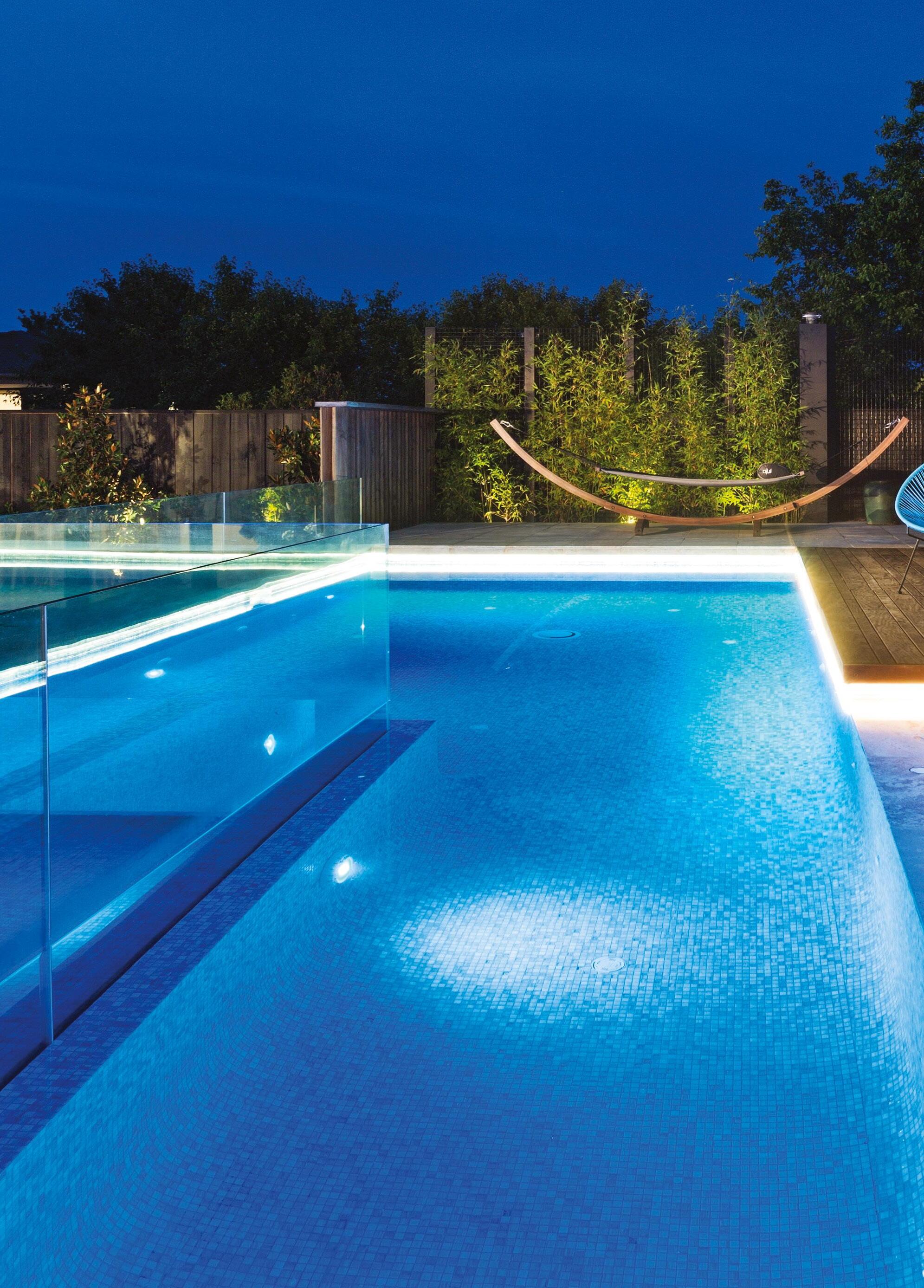

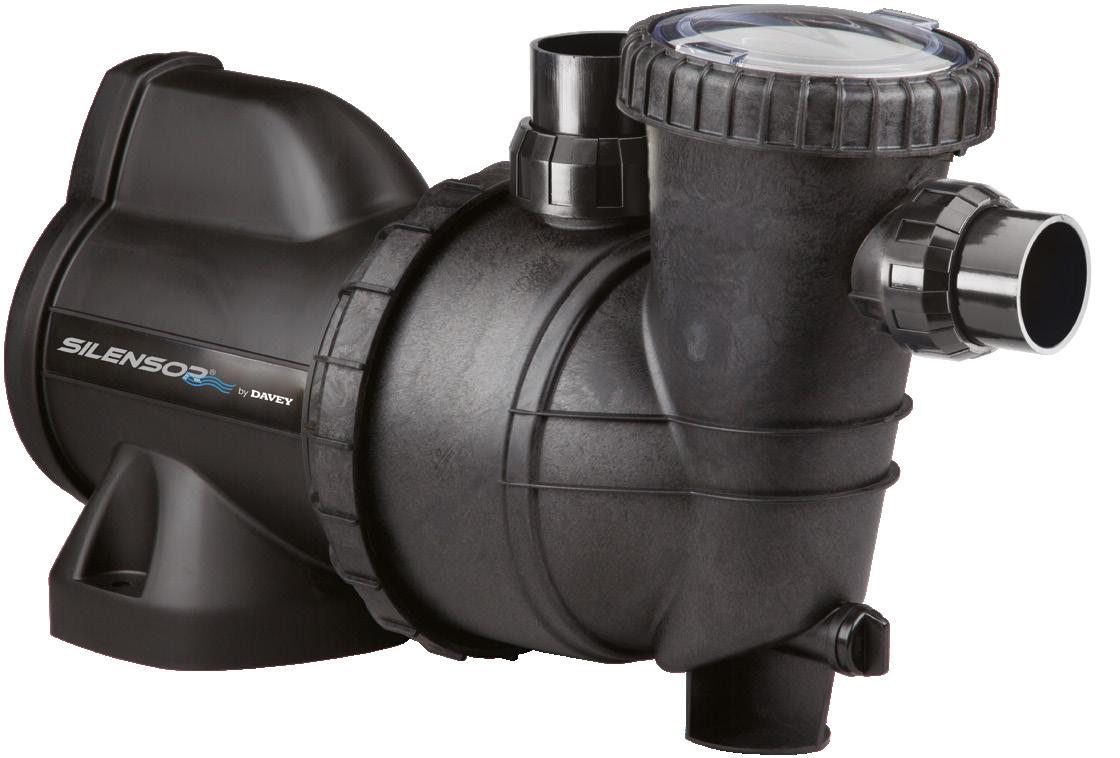
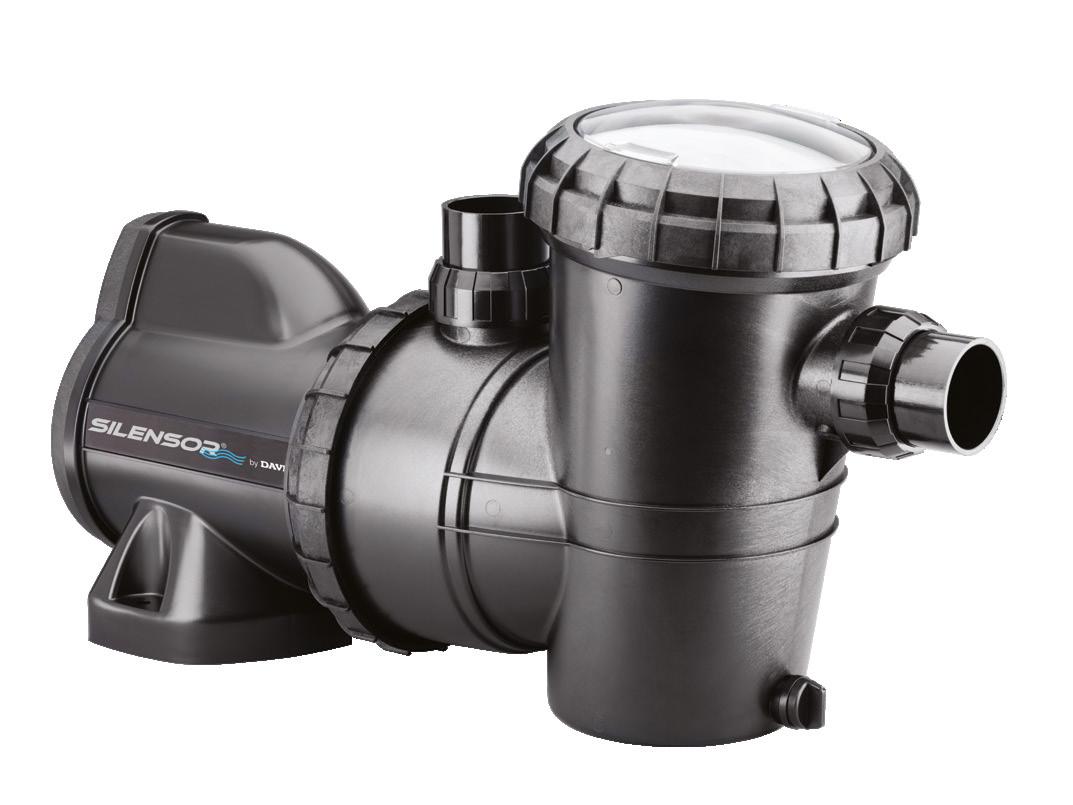
1. Consumers should immediately visit the Jacuzzi Spas recall webpage to identify if their spa is affected by the recall and for more details about the recall at: www.jacuzzispas.com.au/support/2022temperature-sensor-recall
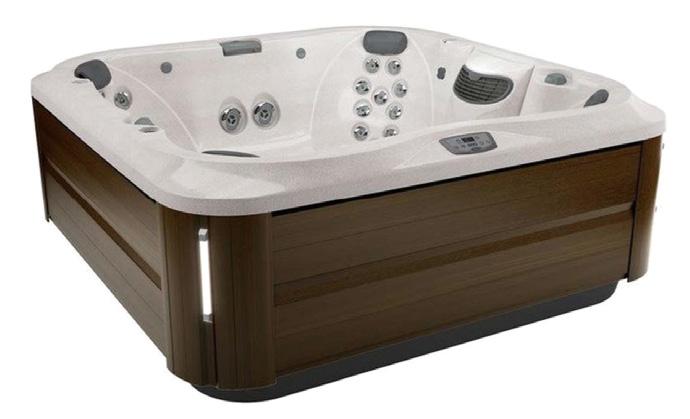
Contact: Consumers can contact Ideal Sources by phoning (03) 9587 7706 or via email enquiries@idealsources.com.au.
There have been three relevant recalls of products.
Jacuzzi Hot Tubs - Jacuzzi J-200, J-300, J-400 and J-500 collection hot tubs. Model and serial numbers are engraved into a silver plate located in the equipment bay of the hot tub.
Dates sold: 29 July 2021 – 9 February 2022
Why the product is recalled: When the spa is in use, the temperature sensors can display the incorrect water temperature, with water being hotter than the set temperature (showing).
Hazard: The hotter water temperatures reached by the spa can cause heat stroke injuries and thermal burns.
Action required:
2. Affected consumers should contact Spa World Australia to schedule a free repair. Do not use your spa without first checking the temperature with an external thermometer before each use.
Purchased from: Spa World Australia, Pool and Spa World Tasmania
For further information or additional advice contact Spa World Australia by phone 1300 037 235 or email tempsensor@ spaworld.com.au.
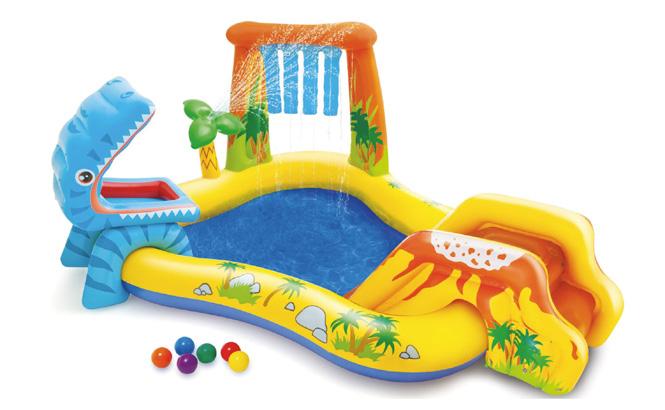
Sold: Between 26 April 2022 and 21 February 2023
Defect: The Dinosaur Play Centre does not comply with the labelling requirements of the mandatory standard for portable swimming pools. It does not comply with the 3 metres warning legibility requirement. Hazard: Inflatable pools without the correct safety warning labelling may be used incorrectly. There is an increased risk of drowning if the product is not used as intended.
Action required: Consumers should stop using the pool immediately and return the product to the place of purchase for a full refund.
The ACCC has simplified information so businesses understand how to quickly carry out a product safety recall.
Products sold to consumers must be safe. If a product is a risk to safety, or it doesn’t comply with a mandatory standard or product ban, your business may need to recall it.
TJX Australia Pty Ltd is recalling Nest Swing Egg Chairs, style numbers PMK-6501, PMK-6503, PMK-6505, PMK-6507, or PMK-6510. The style number can be located on a tag attached to the product.
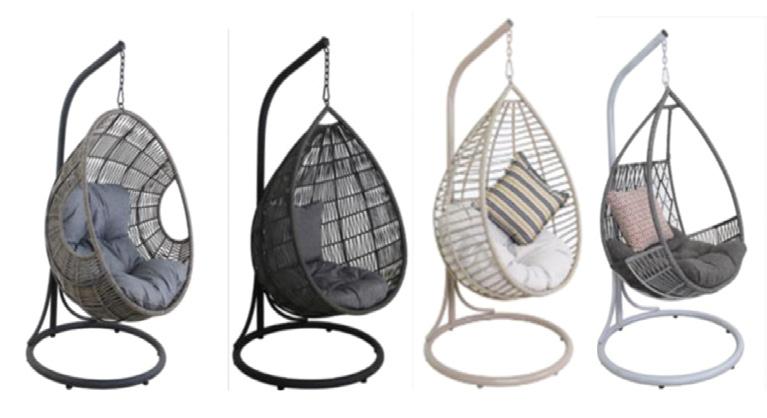
Sold: In TK Maxx stores from 28/08/2020 to 30/12/2022.
Defect: Design defect causing the chair to be unstable resulting in tipping or collapsing of the chair.
Hazard: The chair can tip over or collapse when a consumer is seated in the chair, posing a fall hazard.
Action required: Consumers should immediately stop using the recalled egg chairs and return them to any TK Maxx store for a full refund or contact TJX Australia for instructions on how to dismantle and dispose of the chair to receive a full refund. Contact: 1300 768 913 between 9am and 5pm EST Monday to Friday, or email info@ tjxaustralia.com.au.
Key steps to recall an unsafe product:
1. Stop the supply of the product;
2. Tell the ACCC within two days of taking recall action;
3. Warn consumers of the hazard the product presents;
4. Offer consumers a remedy in the form of a repair, replacement or refund; and
5. Monitor how your recall is tracking to make sure consumers receive a remedy. An updated guideline provides essential information and tools to support you when running a recall – including a checklist, sample messages, templates and recall plan, and can be downloaded at www.productsafety.gov.au or www.splashmagazine.com.au/QuickLinks147
A fire engulfed an events business adjacent to a Freedom Pools dealer at Slacks Creek, near Logan in Queensland. The fire started at about 2:30am, Tuesday May 2. While Freedom Pools owns both properties, the rear part of the battle-axe block where the fire occurred was leased to event company, A Noble Event.
Tragically, a fire fighter lost her life following injuries battling the fire. A second fire fighter is in hospital with serious injuries. The front building housing the pool business is largely unaffected.
The cause of the fire, and how the fire fighters became injured, is unknown at this stage. Investigations are continuing.
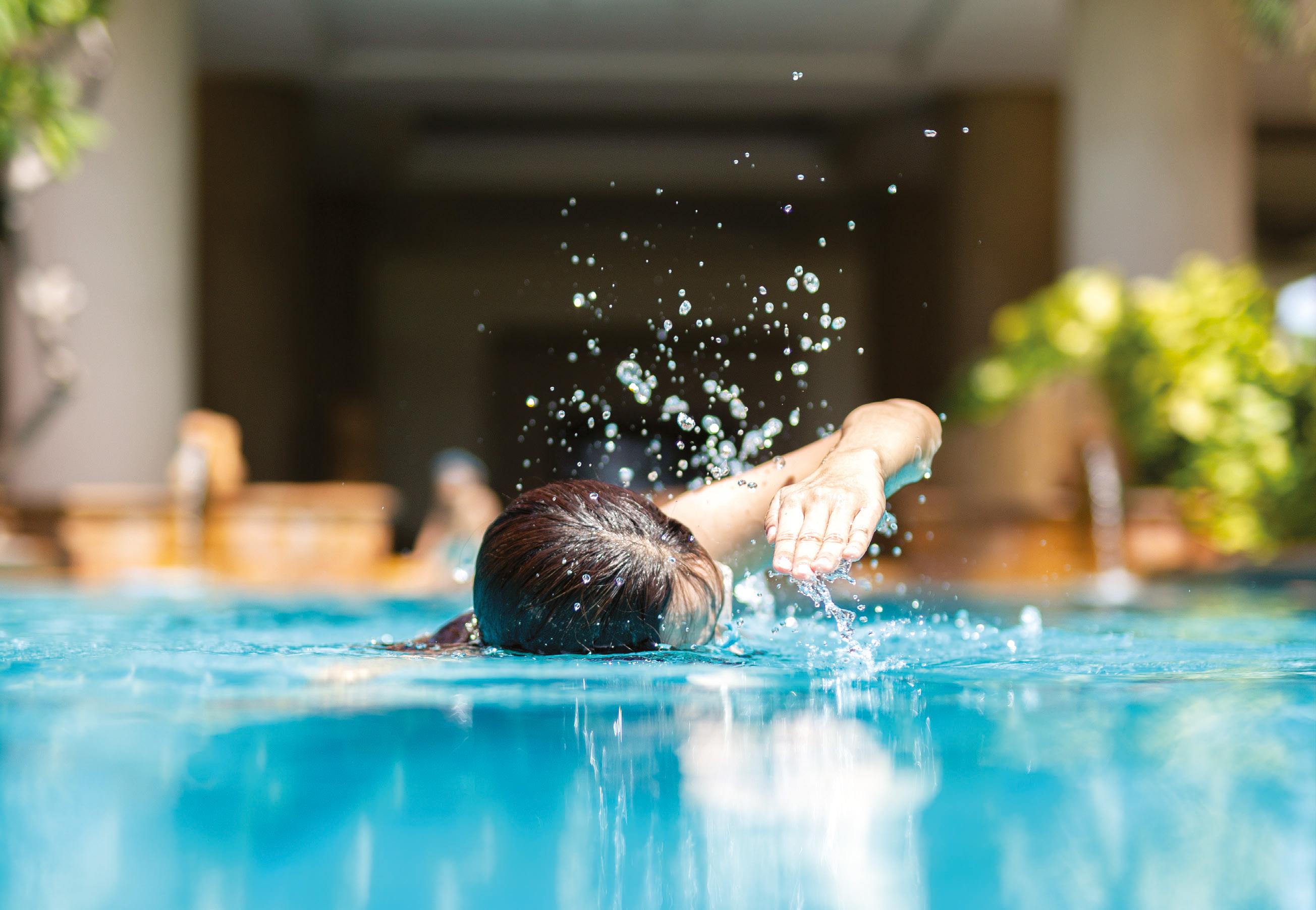












Online renovation marketing platform Houzz has released its annual survey on the Australian State of the Industry.
The report provides an outlook for 2023 and a review of 2022 performance for residential renovation and design businesses, based on data reported by industry professionals in the Houzz community.
It shows companies have a tempered perspective, with 54 per cent anticipating a good or very good year and 36 per cent expressing a neutral outlook for 2023. While the sentiment is less widespread than last year, more businesses expect increases in revenues and profits for 2023 than those expecting decreases (56 per cent and 51per cent respectively, versus 26 per cent and 29 per cent respectively).
“Professionals in the home renovation and design industry have a moderate outlook about business activity in 2023, despite concerns around current economic conditions. Though less prevalent than last year, more businesses anticipate revenue growth,” says Marine Sargsyan, Houzz staff economist.
“The 2023 Houzz State of the Industry reveals that professionals are willing to implement a diverse combination of marketing, financial and customer-centric strategies to achieve their business targets amidst high overhead and materials costs.”
More firms across all of the industry groups cite an increase in the cost of doing business (84 per cent) versus those citing a decrease (five per cent), with the share of businesses reporting an increase rising by 15 percentage points this year (84 per cent compared with 69 per cent in 2021).
Nearly two-thirds of businesses will target larger budget projects (63 per
cent) and half increased marketing and sales efforts (51 per cent) to achieve expected growth in 2023.
Businesses also plan to improve customer experience and employee productivity (37 per cent and 33 per cent respectively).
The Houzz Australia State of the Industry was conducted among 85 home renovation firms in the Houzz Australia community that offer services related primarily to residential renovation and/or design. The study was fielded from December 2022 to January 2023.

The 2023 Houzz Australia State of the Industry report can be downloaded at www.splashmagzine.com.au\QuickLinks147.
Industry moves
Naked Pools has appointed Sarah Barben as business development manager for Queensland and NT.

Director Darren Milne says Naked Pools is very happy to have Barben come on board.
“Sarah has more than 15 years’ experience in the industry, most recently as account manager for Aquatic Elements, and 12 years at AstralPool in both sales and service,” he says.
“Her passion for new product innovation along with love for nurturing new and existing customer relations make her a huge asset for our business.”
Outside of work, Barben enjoys paddleboarding, cycling and exploring the outdoors. On top of that, due to her curiosity about the brain and human behaviour, she is actually a certified neuro linguistics master practitioner.
Contact: Sarah Barben, 0419 045 941, sarah@naked-pools.com
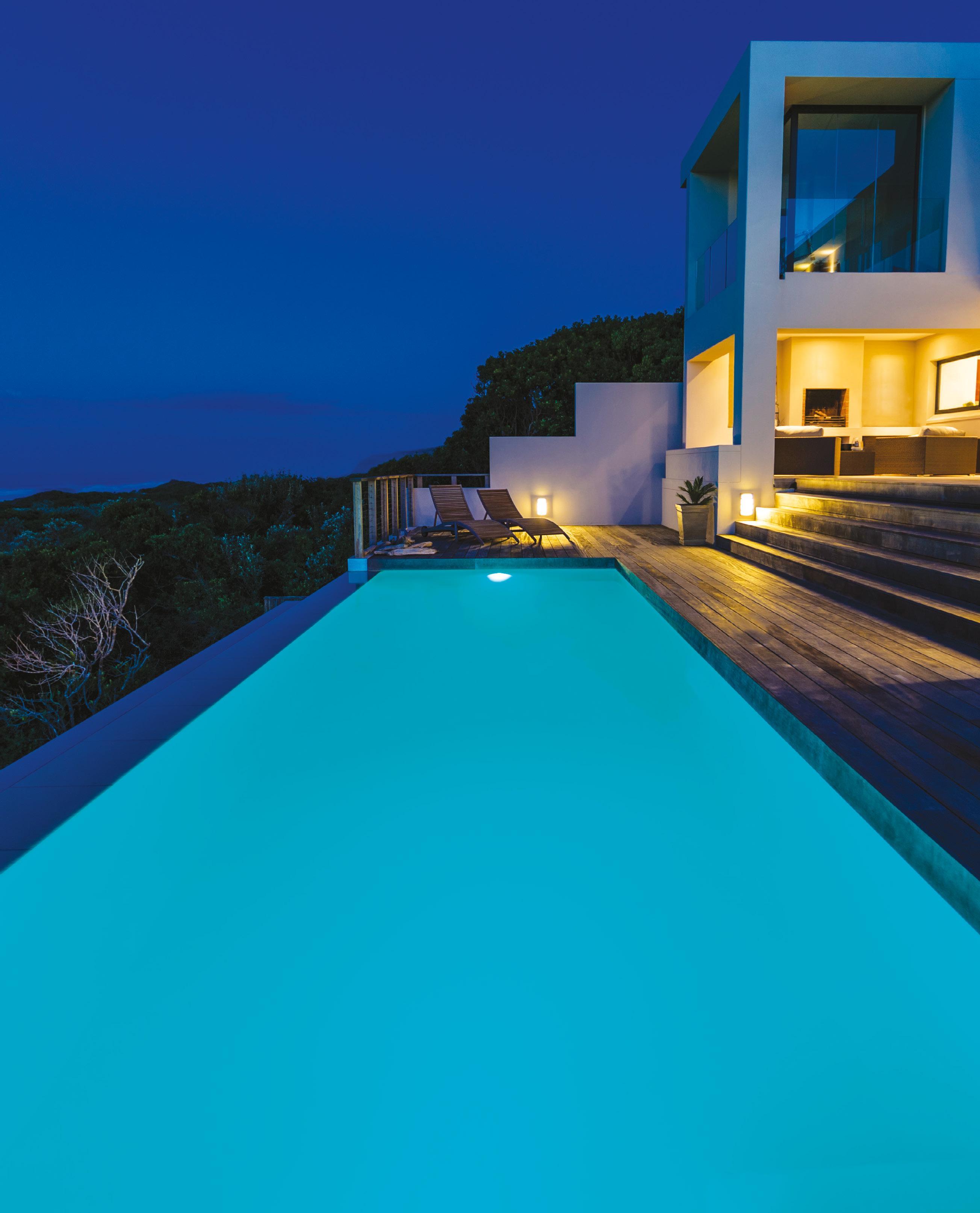
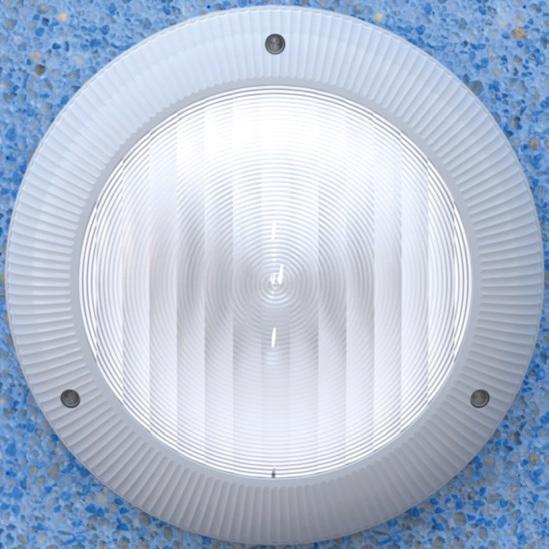

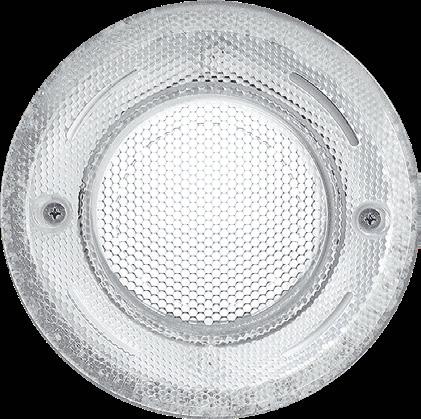


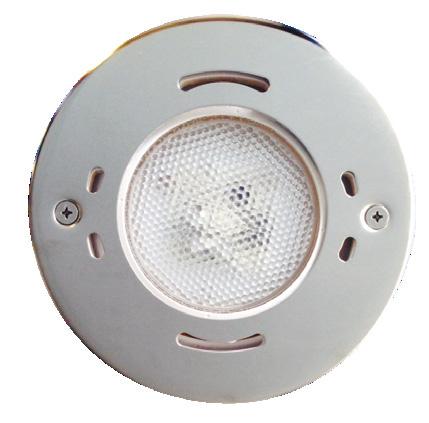

Matt Gillam, residential BDM for Brauer Industries, is putting together a team for the Shitbox Rally, to be held later in the year.
The swimming pool and spa industry is really adopting this rally as a worthwhile, fun fundraiser for the Cancer Council. Last year Allans Pool Shop took part, aided by sponsors Lo-Chlor Chemicals and Hayward Industries.
The Shitbox Rally is not a race, rather a challenge to achieve the unthinkable, travelling across Australia via some of its most formidable roads and remote communities, in a “shitbox” of a car.
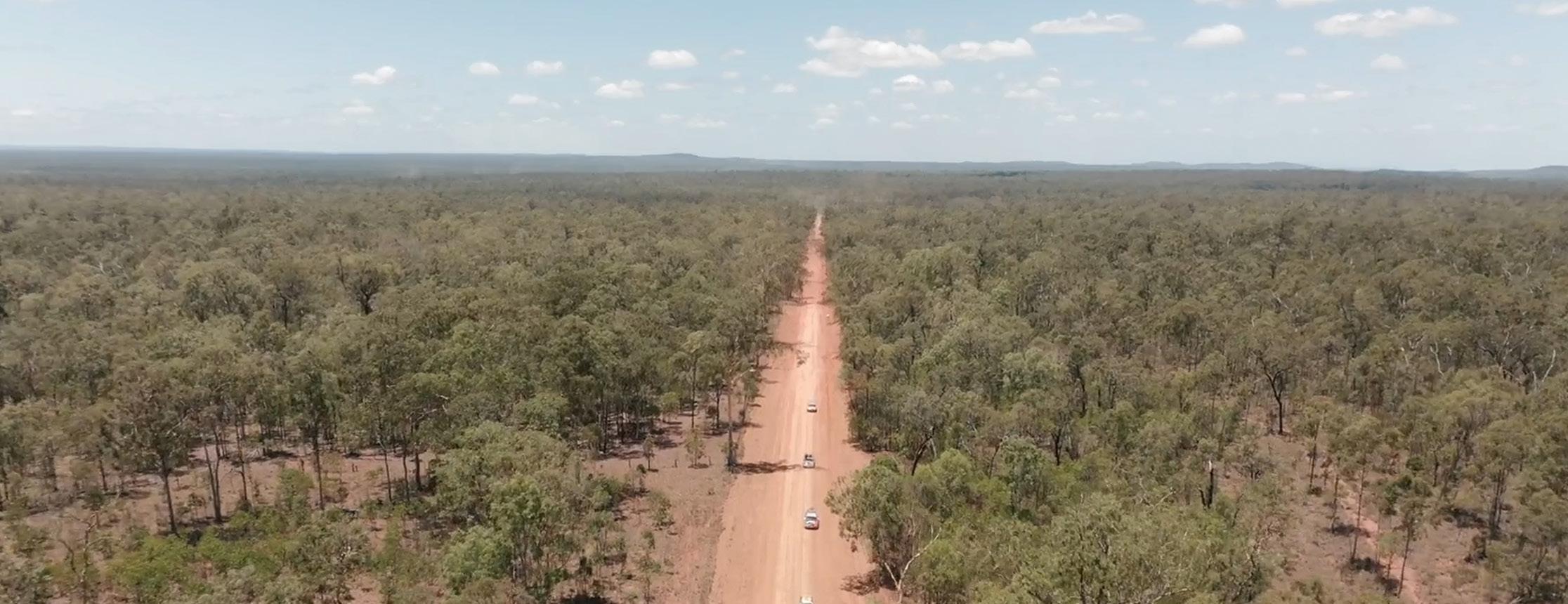
This year, Gillam will be leading a team across the demanding roads of the Aussie Outback, cutting across from the Queensland coast to the South Australian capital.
“In October this year, my great mate Adam and I are Team DubbelPluggas and will be participating in the Shitbox Rally, raising valuable funds for Cancer Council,” says Gillam.
“This rally will see us driving our shitbox, a 1986 Holden
Camira wagon (worth up to $1500) from Port Douglas to Adelaide, with 500 other participants.”
The rally aims to raise $2 million for the Cancer Council, which is used to fund cancer research projects nationally.
Since the rally launched in 2009 it has raised more than $35 million and is the largest funder of the Cancer Council in Australia.
“The first challenge for our team is to raise a minimum of $5000,” he says. “We’re targeting $10,000, so we’d greatly appreciate it if you could support us.”
You can help Team DubbelPluggas by sponsoring the team in return for on-car and website branding; making a tax deductible donation; or in-kind donation of goods or services to help their fundraising efforts
“We intend filming along the way, providing content for social media and have already commenced a Facebook page,” he says. Go to www.splashmagazine.com.au/QuickLinks147 for links to donation and sponsorship pages.
Lincoln BWT hosted 50 of their customers at the Australian Formula One Grand Prix in April.
The weekend started with customers flying in from around the country with accommodation organised at the 5-star Hotel Chadstone. They were then transported to the track via private coach where each day customers either viewed the races from the premium Brabham Grandstand or the BWT corporate suite.
Managing director Craig Buchanan says that, thanks to BWT’s long running Formula One sponsorship, their customers enjoyed a “money can’t buy” experience of pit walks as well as spending time in the Paddock Club, rubbing shoulders with ex-world champion drivers and Hollywood celebrities. Some even got photos with current F1 drivers.
“BWT had cars racing across the weekend in F1, F2 and F3 as well as our newly announced sponsorship of the factory Australian Porsche team, where we have the only female driver worldwide in Courtney Prince,” says Buchanan.
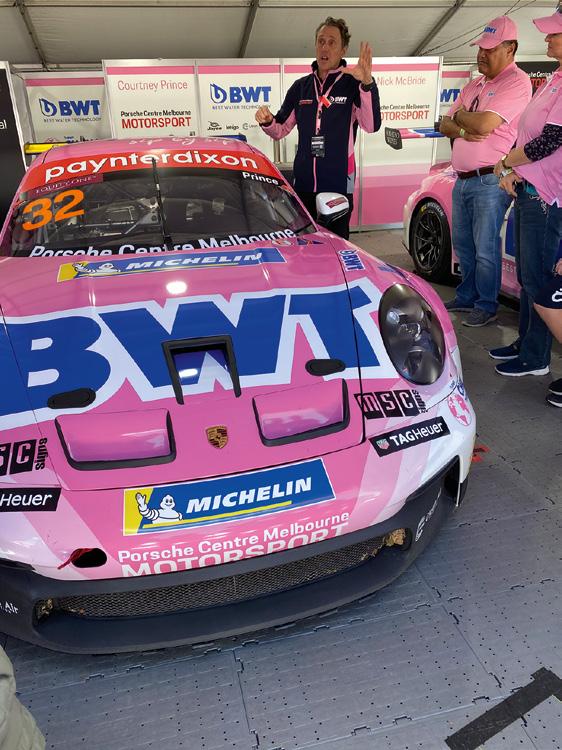
“Our customers were also lucky enough to receive Porsche garage tours and meet-and-greet with our drivers.”
On Saturday, just prior to F1 qualifying, the F1 cup was in the BWT suite along with the team principle who gave a talk and allowed a photo op with the cup.
“Unfortunately, the F1 result did not go BWT’s way on the last lap,” he says. “But we had tremendous brand exposure and all our valued customers had a fabulous time. Our customers also enjoyed first class dining experiences each evening at BWT hosted dinners.”
Lincoln BWT will host customers again at next year’s Australian Formula One Grand Prix, and are already planning new experiences thanks to their F1 sponsorship.
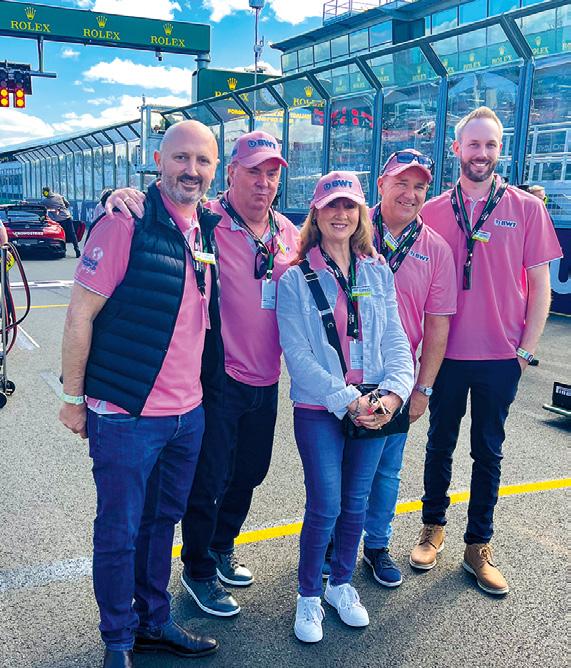
Buchanan says customers should contact local sales team members to find out how they can earn two tickets to the pool industry’s most exclusive event.
Contact: www.bwtpools.com.au
Lynley Papineau, managing director of fibreglass pool manufacturer, Aquatic Leisure Technologies, spoke with David Stennett at the recent Perth Pool & Spa Lifestyle Expo. She says that the level and type of consumer interest seems to be varying from state to state.
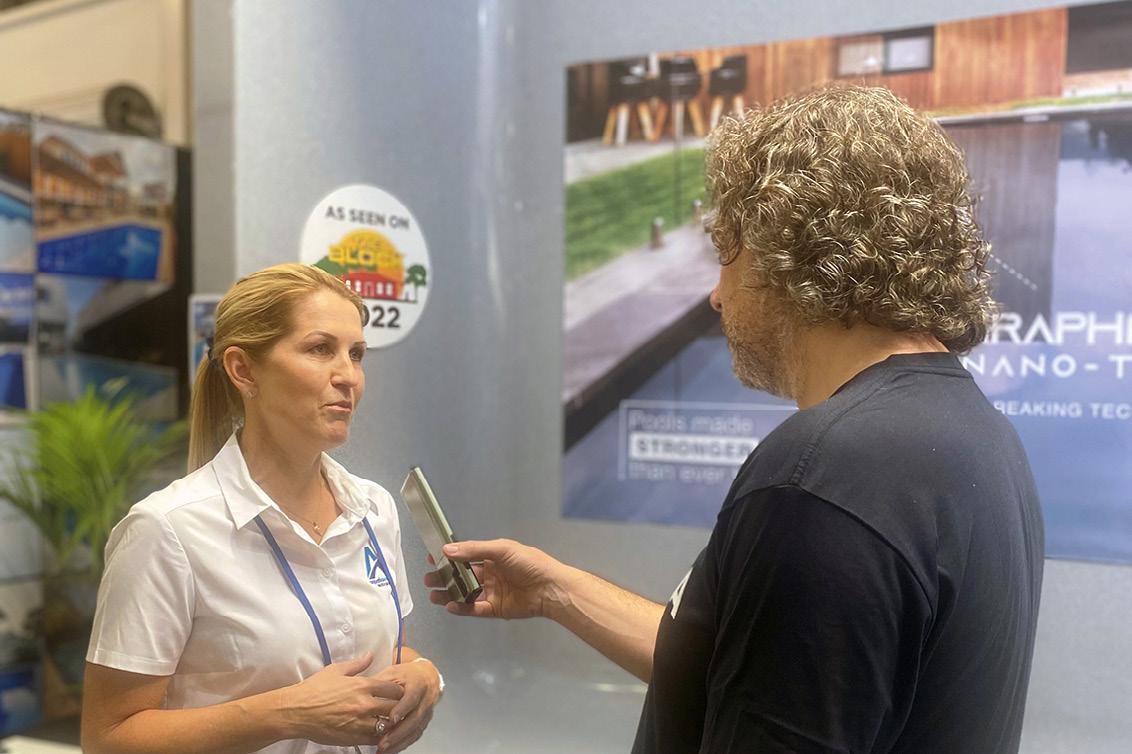
“For example, in Western Australia you’ve got a lot of smaller blocks. So the last two people I spoke to actually were after a little 4.5 metre pool and a five metre plunge pool. A lot of people are loving the wader pools for the children, and the bench seat is an absolute favourite – it can be for the children to run up and down when they’re younger, then you can convert it into a champagne bench for the ladies as well. It can be an absolute universal family pool.
“A lot of people ask me where we see the economy going, particularly in WA,” she says.
“We came off a really tough economic conditions between 2015 and 2019. To the extent that our industry dropped 47 per cent. We went into October 2019 thinking, great summer, warm weather – and by March 2020 we were in the covid pandemic. So since even 2015 it’s been a really challenging environment.
“But then who would have guessed that we’d go through some of the strongest sales that we’ve ever seen as an organisation – our businesses were so lean, we had to then scale up hugely to try and accommodate some of the demand.
“Now there’s the crystal balling of what’s going to happen in the future. We’ve already seen sales probably slow down a little bit, which has been impacted because of interest rate rises, coupled with uncertain global economic times.”
Papineau says that Western Australia is a bit unique in that it has $10 billion worth of infrastructure going around the state even now.
“We also have a very strong mining economy with low unemployment, and even though the interest rates are going up, we believe that there’s a really stable industry and really stable market going forward,” she says.
“And I think it will just tick along – it needed to stabilise; we needed it to calm down a little bit.
“This show we’ve been flat out for two days, and I think you’ve got a lot of people out there building still, a lot of people interested, a lot of people employed and Western Australia has some of the highest savings around the country. So they’ve got equity in their homes, and they’ve got some savings.
“So I really do think going forward as an industry in Western Australia, we’re going to be a little protected from some of what the other states might feel in terms of any sort of slowdown.”
In March, Brisbane Lord Mayor, Adrian Schrinner toured AIS Water’s newly opened $9 million anode manufacturing facility at Tingalpa.
The state-of-the-art manufacturing plant is the only one of its kind in the southern hemisphere. After years of manufacturing commercial quality anodes for its own use, AIS Water can now supply anode material to other companies and industries, including green-tech.
AIS Water CEO Elena Gosse says the company’s third manufacturing facility reinforced her company’s and Brisbane’s position as a leading location for sustainable, environmentally focused technology manufacturing.

“We have always been highly committed to investing in our company, and in turn Brisbane’s future,” she says.
“There are only a handful of companies in the world able to manufacture commercial quality anodes and naturally, we believe ours are the best. Having the capacity to now export anode material internationally is a very fitting leap forward in our company’s achievements in 2023.”
Mayor Schrinner commends AIS Water and Gosse for the commitment to doing business in Brisbane.
“Brisbane is a city of startups, and seeing members of our business community grow their operations and set global benchmarks is an amazing thing to witness,” she says.
“We are honoured to have Elena as our current Lord Mayor’s Business Awards Business Person of the Year. Elena’s story is inspiring and her passion not only for her work, but for Brisbane and its people clearly shows in the success of her business.
“I look forward to seeing what this new facility will achieve for AIS Water, as they pave the way for more cleaner, greener business operations here in Brisbane.”
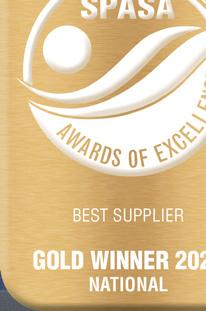
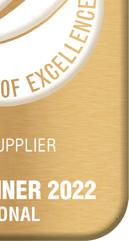
Reece will help make your next pool build an easy one with some of Australia’s top pool products and services, all in one place. From pipe and fittings, to pumps, filters, pool tiles and beyondwe’re on hand to get you what you need.

Reece. Works for you. Find out more at reece.com.au/pools
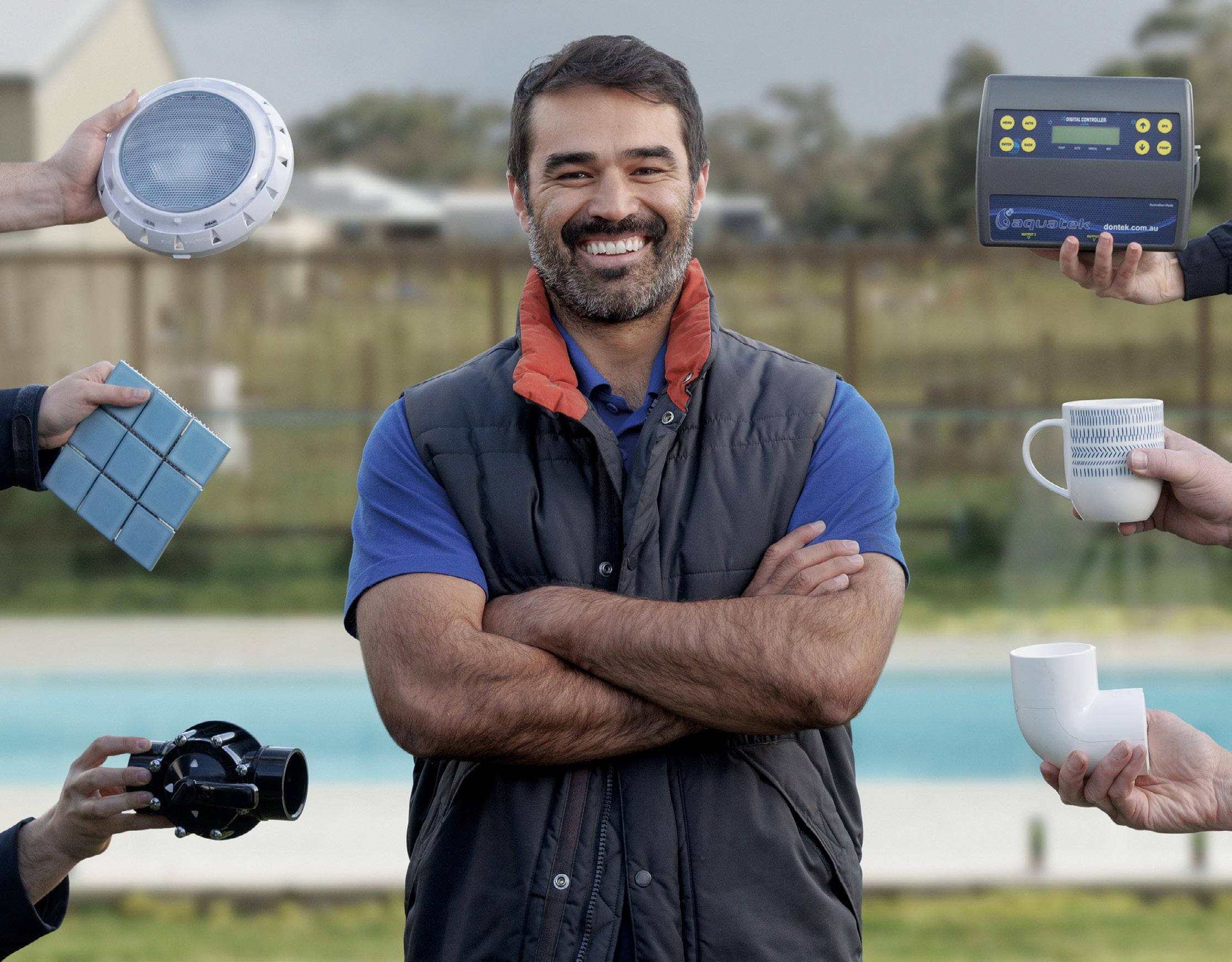
The Hayward OmniLogic pool and backyard automation system provides an easy way to control the chemistry of a residential pool and spa, as well as the heating, lighting, water features and any other pool or backyard equipment... straight from your smart phone!


SPASA Australia has a document to help explain the Swimming Pool and Spa Industry Chemical Security Voluntary Code of Practice. We reproduce some of it here, but the whole document can be downloaded online.
The Swimming Pool and Spa industry consists of a diverse range of sectors which includes (but is not limited to) manufacturers, suppliers, importers, retailers, pool builder’s sub-contractors and consultants, service technicians and pool and spa owners.
Almost every sector deals with chemicals in their business or organisation at some point in time as part of their overall sales or services.
While a large and diverse number of swimming pool chemicals are legitimately used by individuals and organisations in Australia, there is also a small percentage of chemicals that have been or could potentially be diverted for unlawful purposes, including terrorist related activity. The Council of Australian Governments identified 96 chemicals of security concern, including 11 chemical precursors to homemade explosives and four toxic chemicals.
This industry specific voluntary code of practice looks at how to manage the risks associated with preventing chemicals in your control from falling into the wrong hands.
The code’s objectives are to promote effective chemical security management practices throughout the chemical supply and use chain, and in particular to:
- Protect against the diversion of chemicals for terrorist or criminal purposes.
- Encourage cooperation between businesses and organisations that handle chemicals and law enforcement agencies on chemical security matters.
- Educate and train staff to be alert to warning signs and report suspicious behaviours.
To achieve these objectives, the code provides guidance and information on a range of practical security measures that businesses and individuals in the swimming pool and spa industry may consider.
The code is voluntary and applies to 15 specific chemicals, the first of 96 chemicals of security concern to undergo the risk assessment process. Businesses are encouraged to adopt the code for any of the 96 chemicals they handle.
The 15 chemicals are: Aluminium phosphide, Ammonium perchlorate, Chlorine, Hydrogen peroxide, Nitric acid, Nitromethane, Potassium chlorate, Potassium cyanide, Potassium nitrate, Potassium perchlorate, Sodium azide, Sodium chlorate, Sodium cyanide, Sodium perchlorate and Sodium nitrate.
The full list of 96 chemicals is available in the document at www.splashmagazine.com.au/QuickLinks147.
Employment and contractor screening
Limit access to chemicals of security concern to valid and trusted employees and contractors:

• Basic background checking prior to and during employment;
• Educate staff on security issues and controls;
• Verify identity and referee information and follow up on anomalies;
• Check criminal history where there is a risk related to the requirements of the position.
Personnel security awareness
Ensure personnel are aware of the risks associated with the theft or loss of unaccounted chemicals of security concern:
• Educate staff on potential misuse of chemicals being handled in induction and ongoing training and provide clear instructions for reporting suspicious activity.
Inventory control measures
Determine whether chemicals of security concern have been stolen, misplaced or otherwise diverted. Set up an inventory control system that:
• Identifies chemicals of security concern;
• Shows the location of such chemicals;
• Be able to track chemicals being received, removed or in stock.
Physical access
Restrict physical access to chemicals of security concern to reduce the likelihood of them being stolen or otherwise diverted:
• Install deterrent signage;
• Install security fencing or walls;
• Install additional lighting;
• Install controlled access gates;
• Require visitors to sign in;
• Use employee and visitor photo ID badges.
Personnel access
Limit access to chemicals of security concern to persons who have a legitimate need to access them and reduce the likelihood of them being stolen or otherwise diverted:
• Restrict access to authorised personnel;
• Always escort or monitor visitors and contractors.
Point of sale procedures
Adopt practices that limit opportunities for the acquisition of chemicals for terrorist or criminal use through direct purchase from the business:
• Only sell to customers with known identity and verified legitimate use;
• Ensure that all transactions are traceable. Examples include: credit card, cheque or bank transfers (cash only to known customers);
• Report suspicious transactions.
Transporting chemicals of security concern procedures Have effective physical security and inventory control processes to reduce the likelihood of chemicals of security concern being accidentally or deliberately delivered to or stolen during transport.
• Ensure chemicals are secure at all times during transport ;
• Do not leave vehicles unattended;
• Record quantities of chemical during loading and unloading;
• Implement a system to confirm deliveries of correct amounts with security intact;
• Ensure chemicals are only supplied to the correct recipient.
Download at: www.splashmagazine.com.au/QuickLinks147
At the 2022 SPLASH! expo, Julian Brady, CEO and founder of Pool Site Quote, explained his innovative system to us.
Pool Site Quote (PSQ) is the world’s first sales software platform for pool builders.
It’s very specific for pool builders – it’s not for any other industry. We’re from the pool industry ourselves; we’ve been pool professionals for 15 years, and we’ve been in the construction industry for 25 years.
It’s all really about streamlining the entire sales process – from CRM, through to your quoting, site feasibility and design. And now SPASA contracts are populated automatically from the quote.
So it’s about saving a tremendous amount of time in the quoting process. You can go to a site, have your first meeting, and prepare the quote in front of the homeowner straightaway.
It saves a lot of time.
We did a soft launch in May last year [2021]. We put on pool builders straightaway. We’ve had no attrition – we haven’t lost one pool building customer, which for a new business is amazing.
Before we launched this product, we were two years in the field with a pool builder in Sydney, using real customers.
And at this show at SPLASH!, we are so excited. The amount of interest is just incredible. Not just from the pool builders, but the suppliers, the CEOs and directors of the supply companies globally have come over and introduced themselves to us.
We’re just super excited.
There have been three developments since SPLASH 2022.
First, our integration and partnership with Nearmap. The integration now provides pool builders with high resolution air photo images within our PSQ design module.
This means that pool builders can site a pool to scale over a hi-res Nearmap image in seconds, showing consumers what pool size fits best.

At PSQ we have no limit on site addresses you can look-up using Nearmap site images, providing the pool builder with peace of mind. Our PSQ design module allows pool builders to prepare and save unlimited pool designs under each customer name. The design modules come with a set of user-friendly tools to draw and annotate on the Nearmap image and prepare the dream pool design.
Pool designs can be selected from our design catalogue where we have prepared pool design templates for every fibreglass and pre-cast plunge pool manufacturer in Australia. We also have a catalogue of common custom concrete pool designs and are happy to add more for any pool builder.
With the integration of Nearmap this meets the needs of pool builders providing an end-toend sales solution for pool builders with all the software they need to manage leads: CRM, design pools, quote pools and contract pools.
The integration of the SPASA Australia pool contracts has been a popular attraction for pool builders wishing to save time writing out contracts. PSQ enables the pool builder’s quote to automatically populate the relevant SPASA contract. This saves the pool builder 80 per cent of their contract-writing time – and that’s a big winner for pool builders.
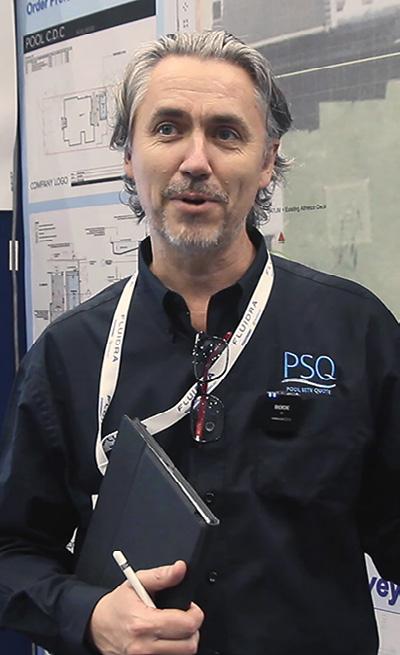
Once the pool contract is populated, the pool builder can edit the text. PSQ also provides the pool builder with the ability to set a template pool contract that the system will then use for generating all pool contracts.
Another popular function pool builders are enjoying is our professional services ordered through our PSQ shop.
The PSQ team are specialists as registered landscape architects in pool design and approvals, so our pool architectural plans are the highest quality the industry can offer.
Our team has more than 25 years of experience understanding pool design compliance rules and regulations for permits, complying development (CDC) and development applications (DAs) to council.
We prepare the architectural plans, manage and lodge the applications through the government portals and provide the professional services our pool builder partners are after. n
Contact: www.poolsitequote.com
ABOVE: Julian Brady at the 2022 SPLASH! Pool & Spa Trade Show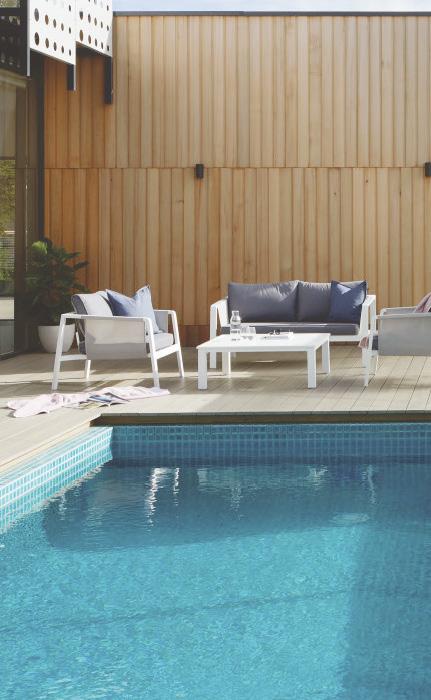










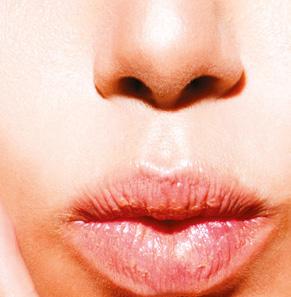







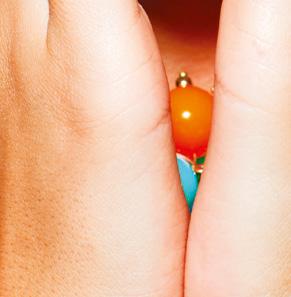










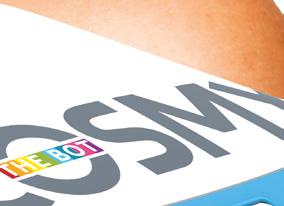





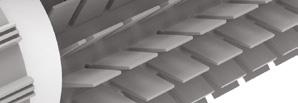
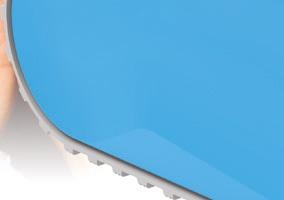
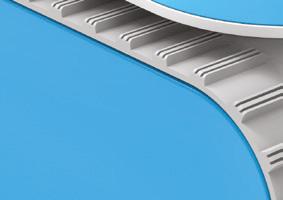

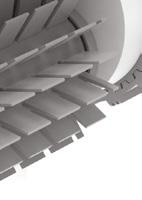




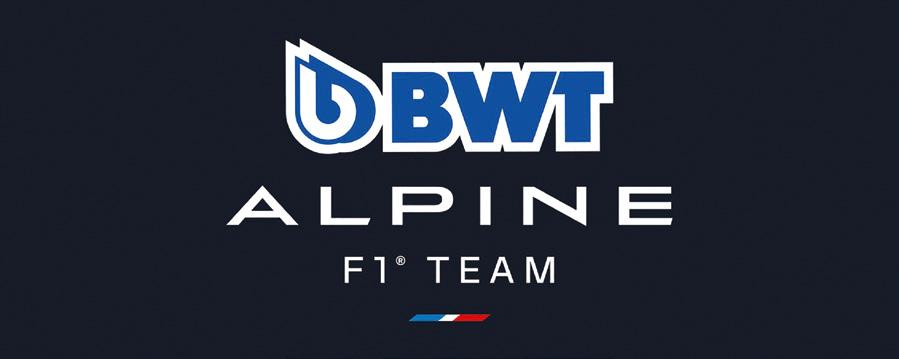








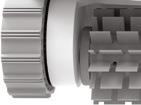
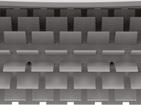










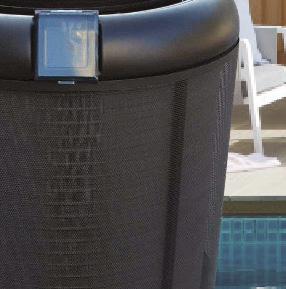





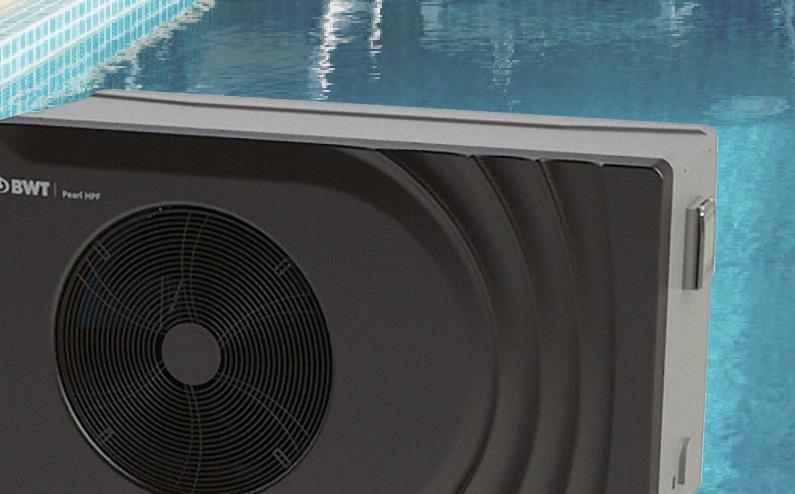











At the 2022 SPLASH! expo, we caught up with Christoph Durand, marketing director for BWT, and he gave us a bit of background on this Europe-based international company.

BWT Group is an Austrian group, and we are all over the world.
We are very pleased to exhibit at the SPLASH! show with Lincoln. We just made the acquisition of Lincoln last year [2021], and we are exhibiting all kinds of products that BWT is manufacturing.
We are presenting the Cosmy – it is a brand new
The BWT brand is very big. We are increasing the visibility of the brand all over the world. And especially in Europe, but also in Australia, thanks to Lincoln. BWT also manufactures automatic covers, filters and we manufacture lots of other products. And we are starting to grow all over the world.
And how is the pool market in general in Europe at the moment?
The market is booming, it’s booming. And we can say that covid helped us all in the swimming pool industry.
We know that last year [2021] we increased by 35 per cent in France, for example. And as you know, the French market is the second market in the world, we have three million pools in France. It’s a small country, but big market for us with the BWT brand.
We are expanding the brand and the brand awareness, and also the sponsoring activity helps us a lot. You know that BWT is the title partner of Alpine Formula One team and this helps a lot for the brand awareness – and the brand is expanding all over the world. We are trying to push our products and to give visibility of our products into the pool shops. And we are very grateful to pool builders all over the world who use our products.
The main concern we have is the price increase of raw materials, there is a tension on the market for ABS, for plastic, for electronics. It’s worldwide and it’s very difficult for all the players to maintain prices, as we’ve had some big price increases and it’s a big concern. Because at the end, the price of the pool will come up. And the end-user is willing to buy a pool – but they have a maximum price that they don’t want to exceed.
Also, there’s a lot of tension for the transportation of products worldwide.
We say at BWT that we don’t have Suppliers; we have Partners. And through that, we can anticipate the needs and buy the products at a good price. So it’s very important for us that we work as a partner with our suppliers. And this way we will be able to manage this issue.
It’s my first time in Australia and on the SPLASH! show. And it’s very impressive. I can see the quality of the of the exhibitors, and I can see that it’s quite packed because I heard that just like in France, you didn’t have any show for four years.
So everybody is really willing to go and visit this show and we can feel that so everybody’s very excited to meet each other.
cleaner. What’s great about this product is it is light, it is powerful, and you can customise it –you can change the colour of the Cosmy. So it’s very friendly, and it’s a new story to tell.
Which is good. It’s good for us and it’s good for business.
For more on BWT’s Alpine Team experience go to page 21.
Contact: www.bwtpools.com.au
“BWT is the title partner of Alpine Formula One team and this helps a lot for the brand awareness.”











Severe Tropical Cyclone Gabrielle devastated the North Island of New Zealand in February 2023. Total damages exceeded $NZ13.5 billion and left 10,000 people displaced. Tragically, 11 people died. In March, SPASA’s New Zealand region manager Michelle Marks travelled to Hawkes Bay on the North Island’s east coast, and found a landscape transformed by the devastating effects of the cyclone.
By Michelle MarksWe all watched and heard the breaking news updates as Cyclone Gabrielle decimated the east coast of the North Island, and closely followed the floods in and around West Auckland.
Everyone’s thoughts were “When will New Zealand catch a break?”
ABOVE: Cyclone Gabriel left much devastation across the NZ landscape, including many green and silt-filled pools
TOP RIGHT: Thousands of cars were written off, and abandoned cars are left everywhere, with tow trucks working constantly to remove them
MIDDLE RIGHT: The devastating state of a completely inundated house. The mud coming through this property was nearly three metres high
BOTTOM RIGHT: Another severely damaged house, with a tree blown through a window
I travel a lot for work, and Hawkes Bay is a place I love to visit and meet with the local SPASA members. However, on my most recent trip, I was not prepared for the dramatic assault on my senses.
I was advised that travel over the Taihape Napier Road was possible if my trip was workrelated, so I set off to meet with SPASA member Michael Treadwell, the Hawkes Bay franchisee with Narellan Pools. The plan was to spend a day together, meet clients and look at some pools that had been flood-affected.
I noticed the landscape change as soon as I cleared the crest of the Annies, with slippages visible on nearly every mountain. The drive was slow, but soon I came across the first of many 30kph zones. The signage said there was a road slip ahead, and restricted the road to one lane. The road transport authority has done a great job of sectioning the impacted areas – but seeing the sides of mountains missing and lanes washed away was just the start.
From Fernhill towards Onekawa, ruined orchards and vineyards covered the landscape.
There was a great deal of silt and carnage along the side of the roads, and many broken and empty houses.
It was total devastation, the result of nature’s onslaught, and words and pictures cannot possibly describe the smell, the uncertainty and the chaos that had been left behind.
Mike and I set off to look at six pools.
At the first pool, we met the owners onsite, heard the story of how they survived, and saw the clearing of the leftover mud and the pile of damaged property contents. They cleared this themselves, as there was no-one available to help.

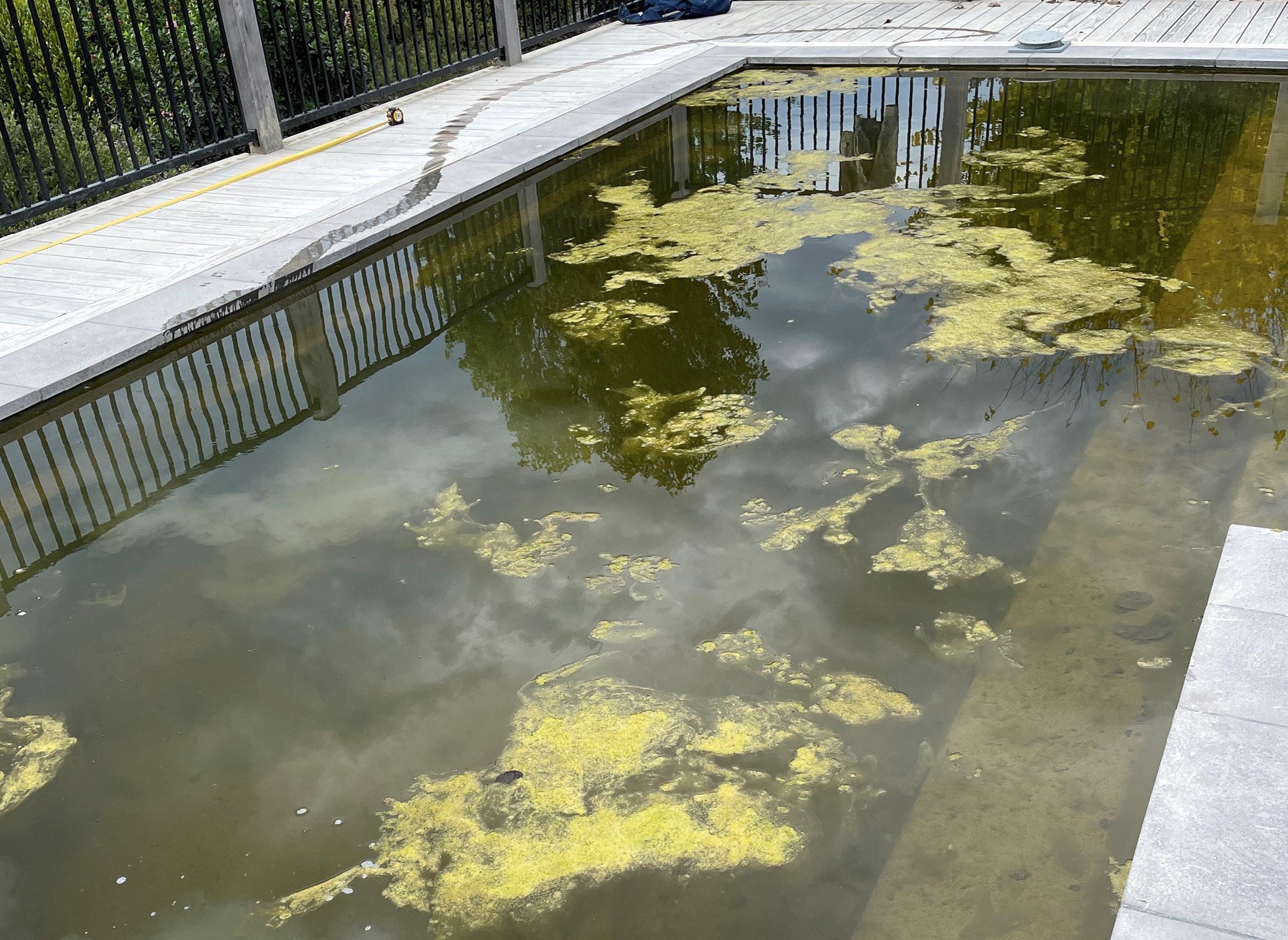
The insurance company could not provide a timeline for who can fix this mess and when it will happen. The family’s accommodation grant had run out, so there was talk of a self-contained unit to be delivered onsite. However, the property was yellow-stickered and no-one was allowed onsite except for short stints to collect belongings – and with no electricity, the health and safety concerns were real.
This feedback was reinforced by the other clients, they face the unknown of what they can or cannot complete. Some have started removing internal plasterboard that had been affected by the rising water level (up to and over two metres) and they have secured dryers at their own cost to try and dry out the framework.
We then moved to the pools. What were once beautiful oases to retreat to at the end of a day, were now littered with debris and furniture.

The soil residue from nearby pine logging had washed down the mountains and into the pools. The water was green with up to 1.5 metres of silt in the pools, the growing bacteria making the water a health hazard. Some people had cleared the decks and the tiling surrounding the pools, but others hadn’t – their pools were sitting, waiting.
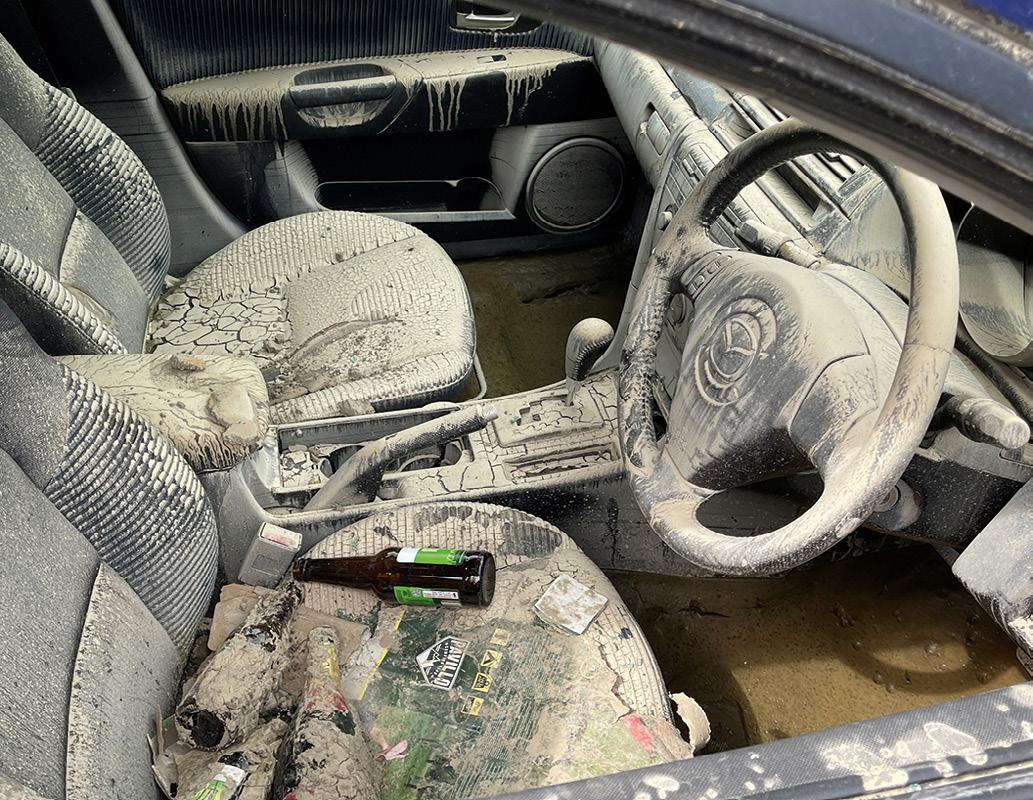
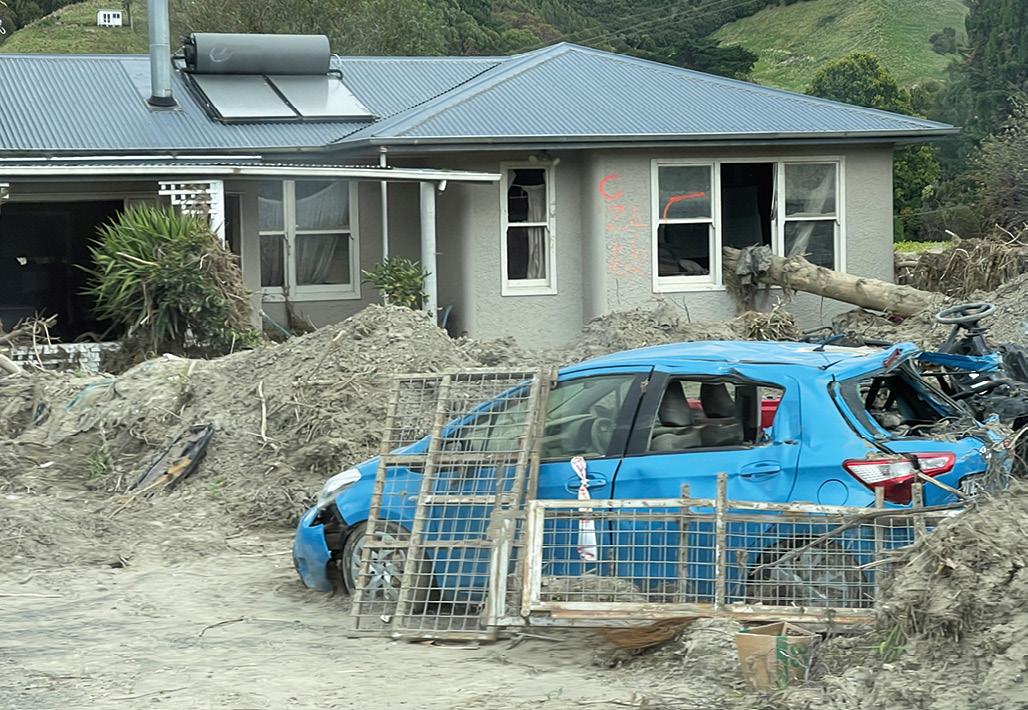
I spoke with Michael Treadwell and with Chris Taylor from Taylors Pools & Spa Services, who have collectively more than 70 pools (and growing) waiting to be cleaned. They said the concerns are how to effectively clean the silt out without lowering the water level too much, and so keep the surface and structure warranties intact.


BELOW
They had gone through every scenario available, and we had researched and spoken to companies in Christchurch (who had to deal with liquefaction after the earthquake), with companies in Australia who had to face siltfilled, flood-affected pools, and gained feedback from every New Zealand pool industry expert we could find.

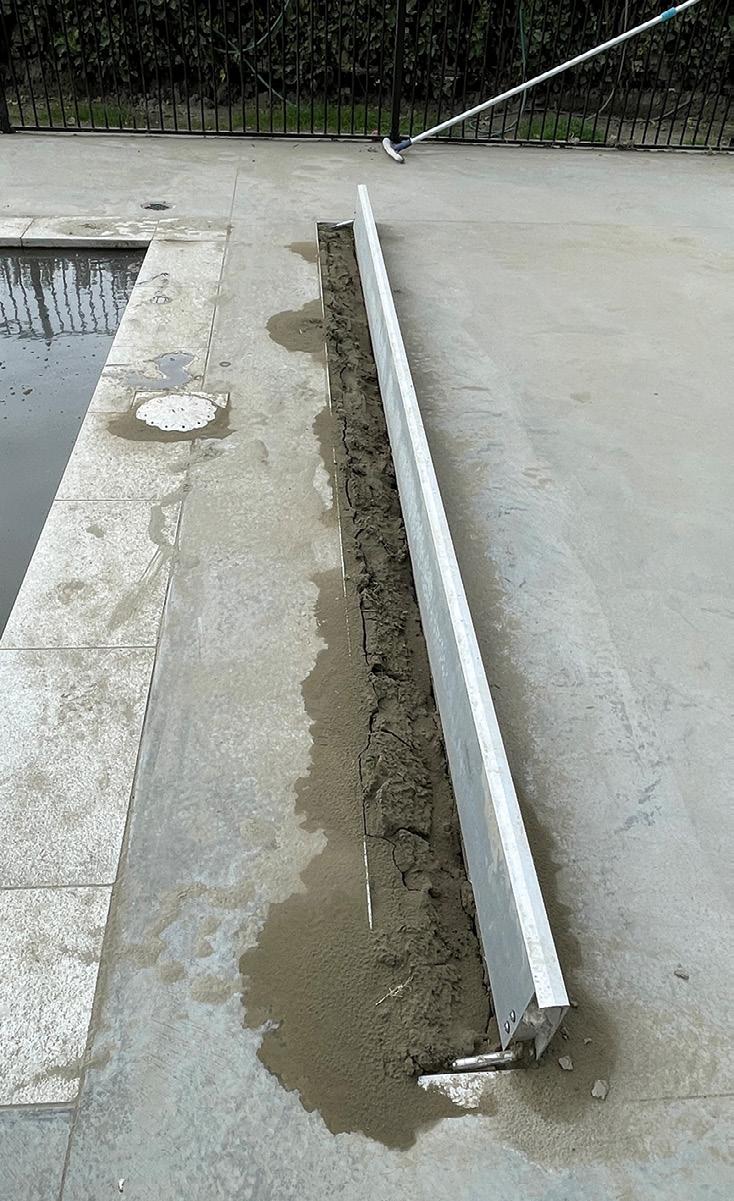
The response from the insurance companies has been slow, with confirmation to proceed to start the clean-up on the pools only coming through recently, seven or eight weeks after the cyclone. Then there has been a delay in the

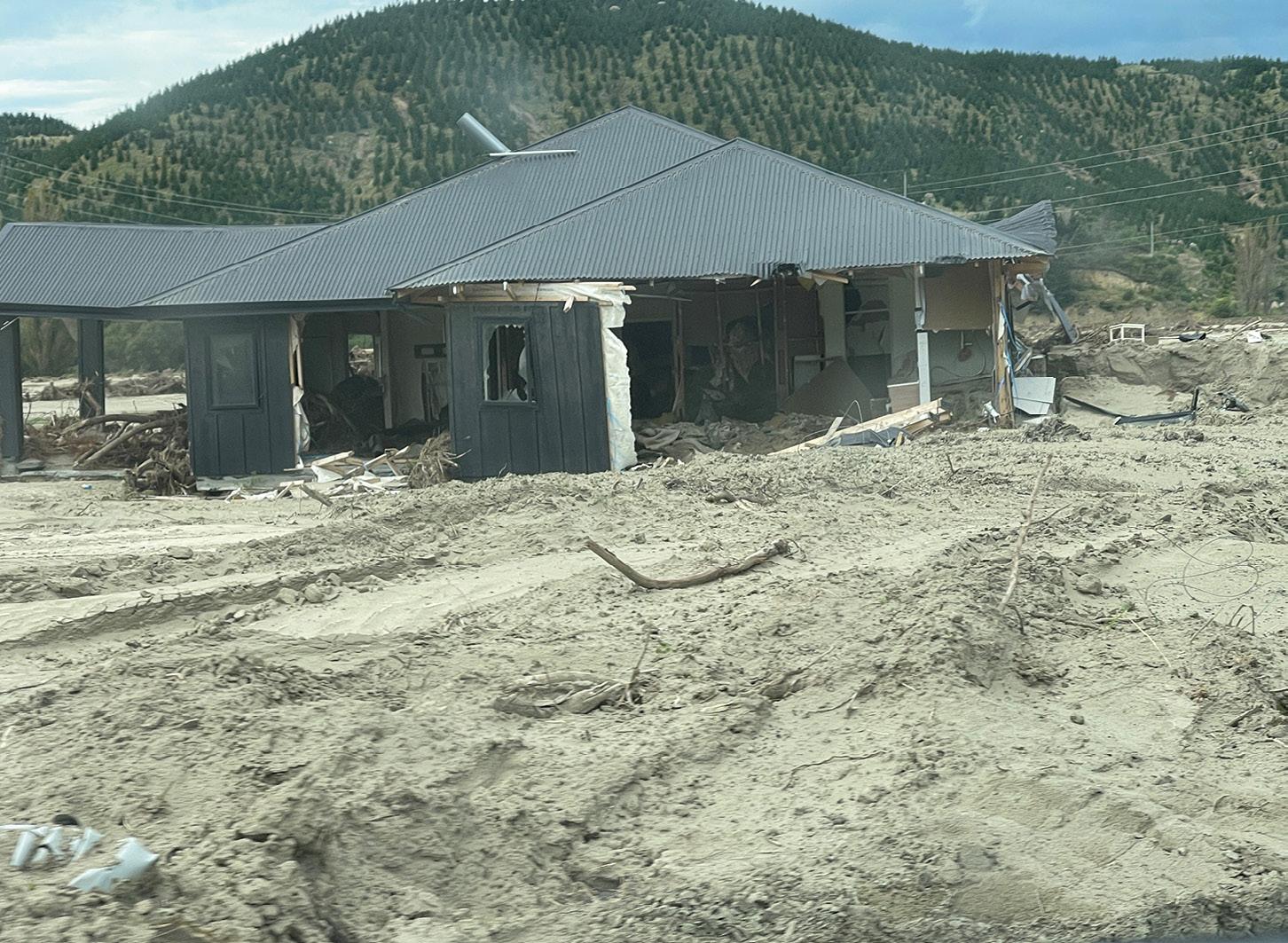

SPLASH! thanks the homeowners for allowing us to photograph their homes and pools and approving the publication of these images. We appreciate their generosity, which is even more striking considering the extremely difficult situations they are facing. SPLASH! feels it is important to show these images and tell this story to provide visibility of the current conditions in New Zealand, and to improve the awareness of the difficulty many people are still facing.
availability of the sucker trucks – to date they have been prioritised completing other tasks, but a truck should now be available mid-April.
During this state of limbo, with costs in the high thousands, the clients have and will continue to keep cleaning what is in their control.
The state of emergency continues, with thousands displaced. The volunteers are making the difference in supporting businesses to get back to trading and families to remain together, but the clean-up is a slow process.
Hawkes Bay will eventually recover; however the landscape will forever be changed. n
For a link to David Lloyd’s tips on cleaning swimming pools after storms and floods, go www.splashmagazine.com.au/ QuickLinks147.
Most of this house disappeared from the force of the floods and landslide BELOW: Mike Treadwell from Narellan Pools measuring the silt and mud. It was nearly a metre deep in the bottom of this pool RIGHT: A partially cleaned inground pool cover BELOW MIDDLE: This sauna was blown by the storm from a neighbour’s yardan exciting new range of Australian manufactured pool gelcoats

AQUAGUARD X® GELCOATS are high performance finishes for the manufacture of composite swimming pools that have been designed to withstand harsh outdoor conditions. These gelcoats have long been the flagship product of our offering to the local and global composite pool markets with over 20 years of proven field history.
High Performance
Surface Coating
High Quality Gelcoat Pigments
A striking and visually appealing cosmetic finish with exceptional durability
The Aquaguard® X technology protects the decorative finishes from harsh effects of the sun
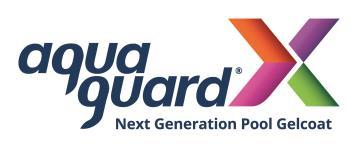
Excellent Chemical Resistance Products are tested extensively for chemical fade resistance to ensure a longer lifespan for the cosmetic finish
Aquaguard® X gelcoats are available in a range of contemporary colours and striking finishes
Performance Advantages:
• Improved chemical (chlorine) & water resistance
• Improved UV resistance, protecting the finish of your pool for many years



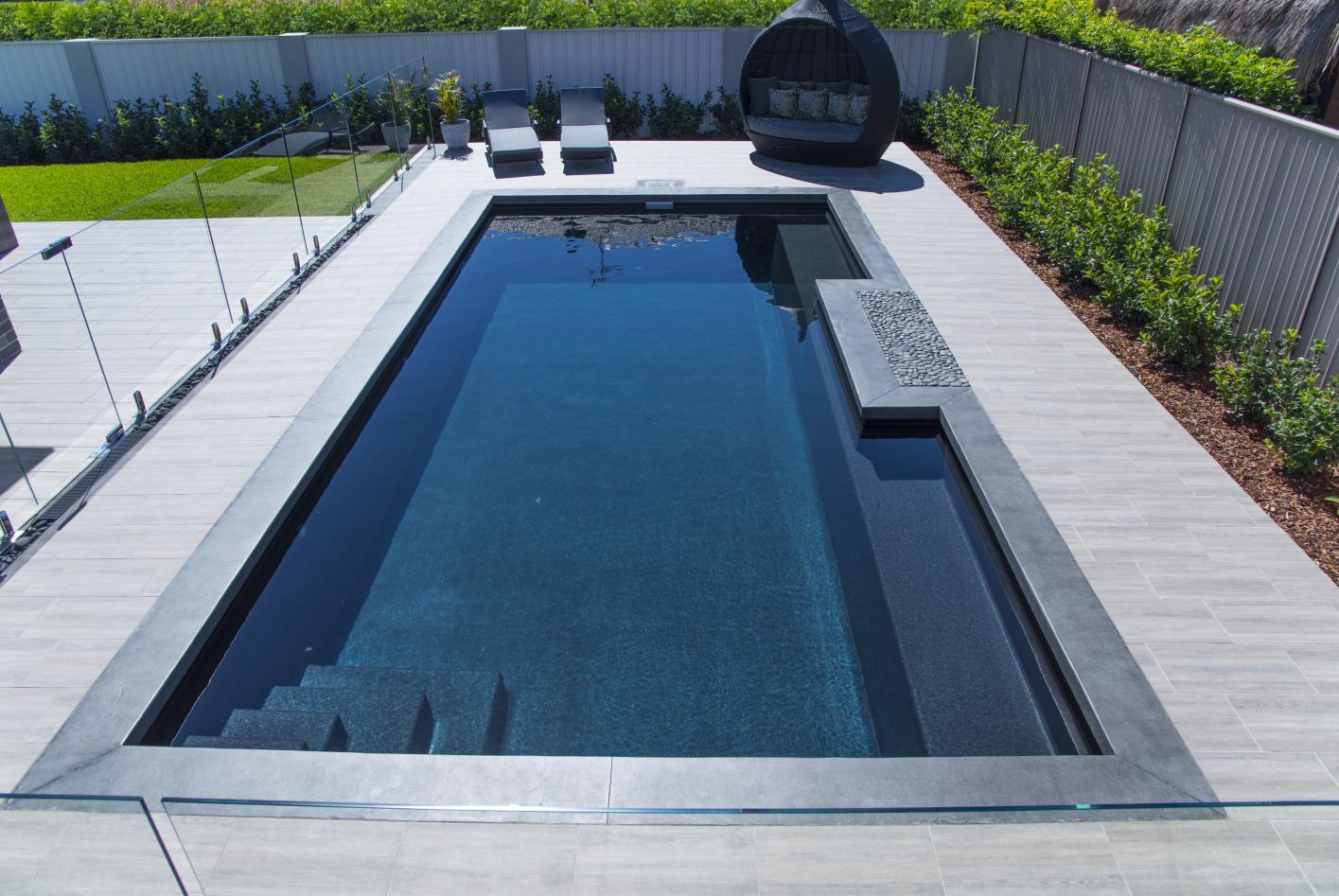
• Increased colour retention during outdoor exposure
• Superior aesthetics of laminate during service life which maintains the original cosmetic ap pearance for a longer period
For further information scan the QR code below , contact allnex on 1800 789 607 or visit www allnex com :



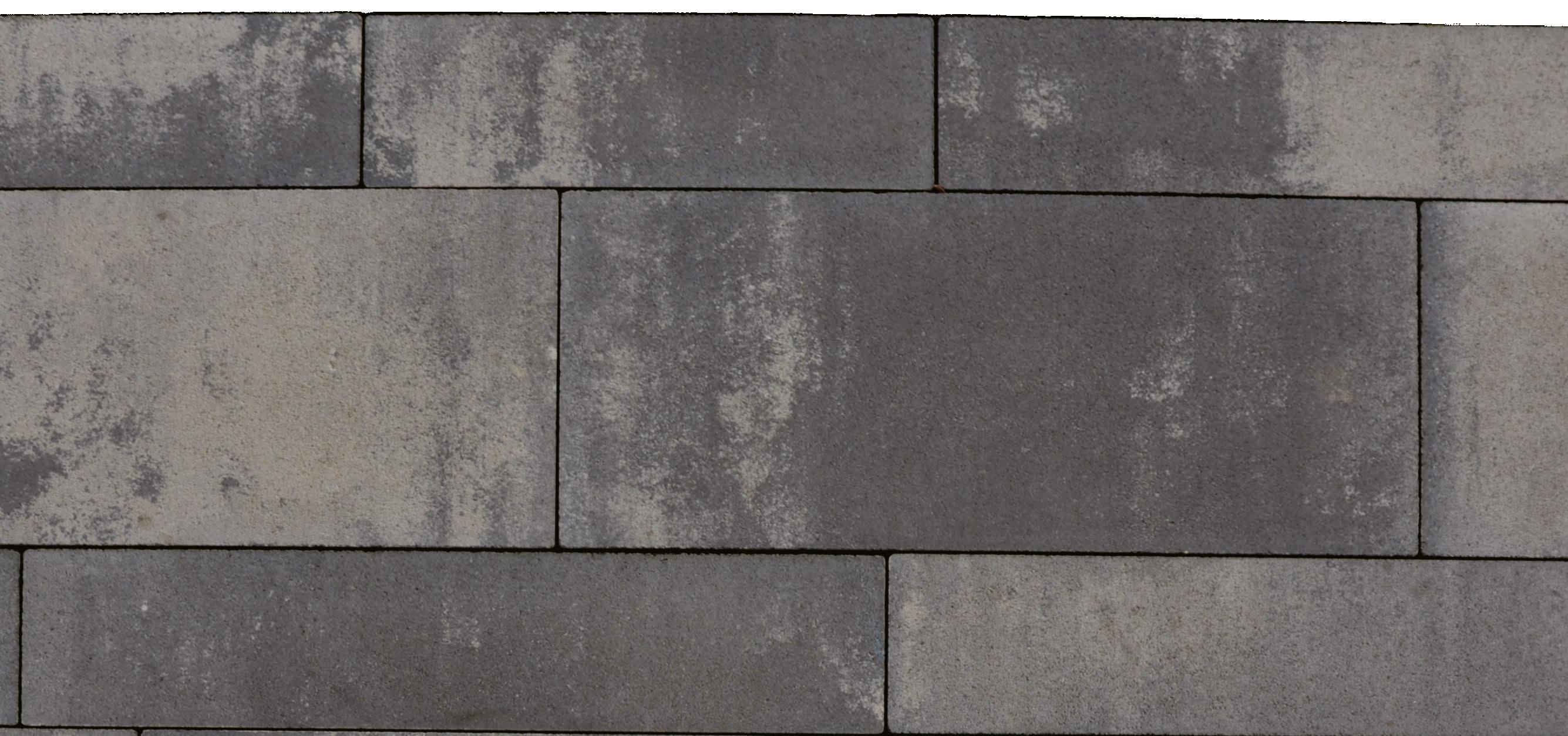


Nothing feels more invigorating than your customers swimming
year on from the devasting Lismore floods, many residents are still displaced and either living in temporary accommodation or in homes without access to basic plumbing, like clean running water, showers and toilets.
Cr Elly Bird, Resilient Lismore’s executive director, says that if it wasn’t for the willingness of volunteers and charitable partners, they wouldn’t have made a dent in getting people back into their homes.
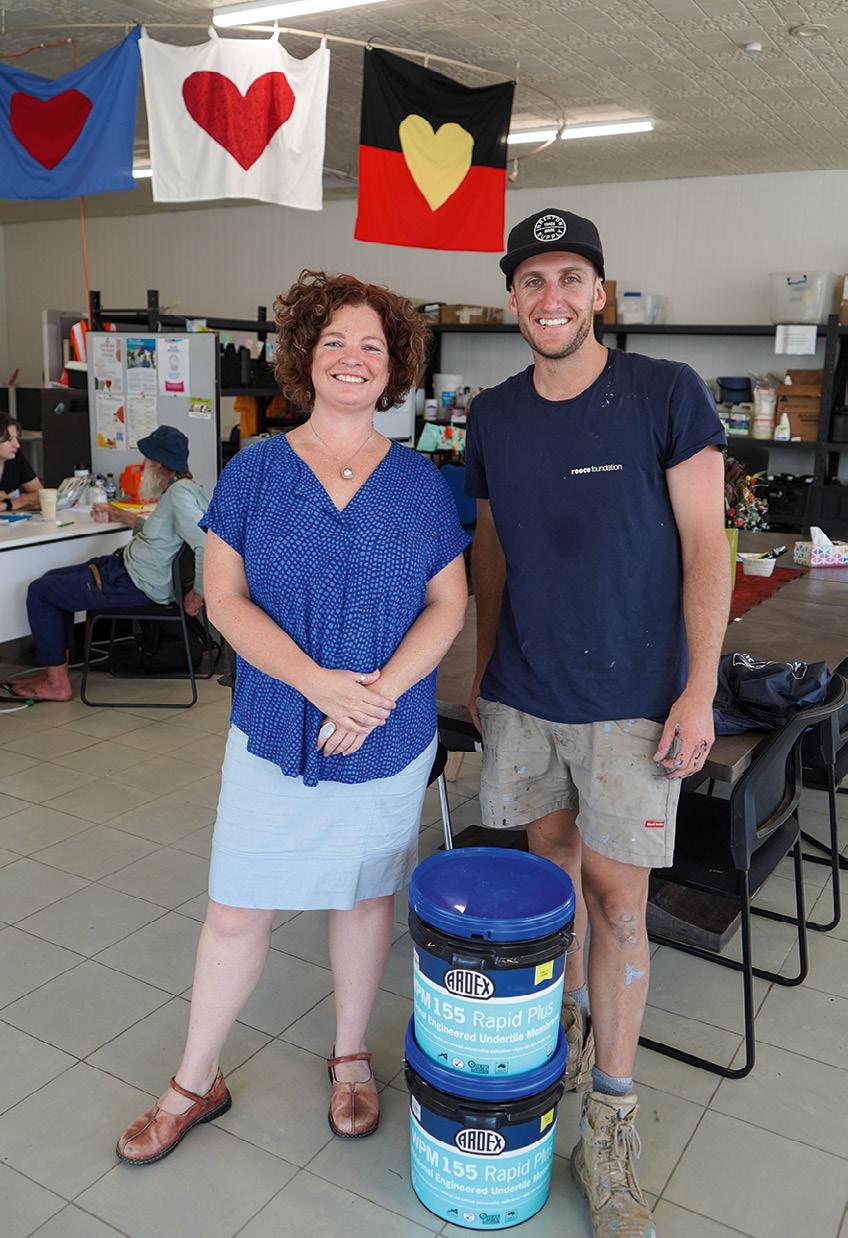
“But more needs to be done. With a shortage of financial support, skilled tradespeople and materials, many households have faced huge barriers to restoring healthy and habitable homes. Our volunteers have already started installing walls for people living in shells of homes – part of the successful and ongoing Two Rooms Project.”
Resilient Lismore has deployed more than 13,800 volunteers to more than 3600 community rebuild jobs and has delivered Two Rooms to 72 homes so far. Thousands of homes are still so
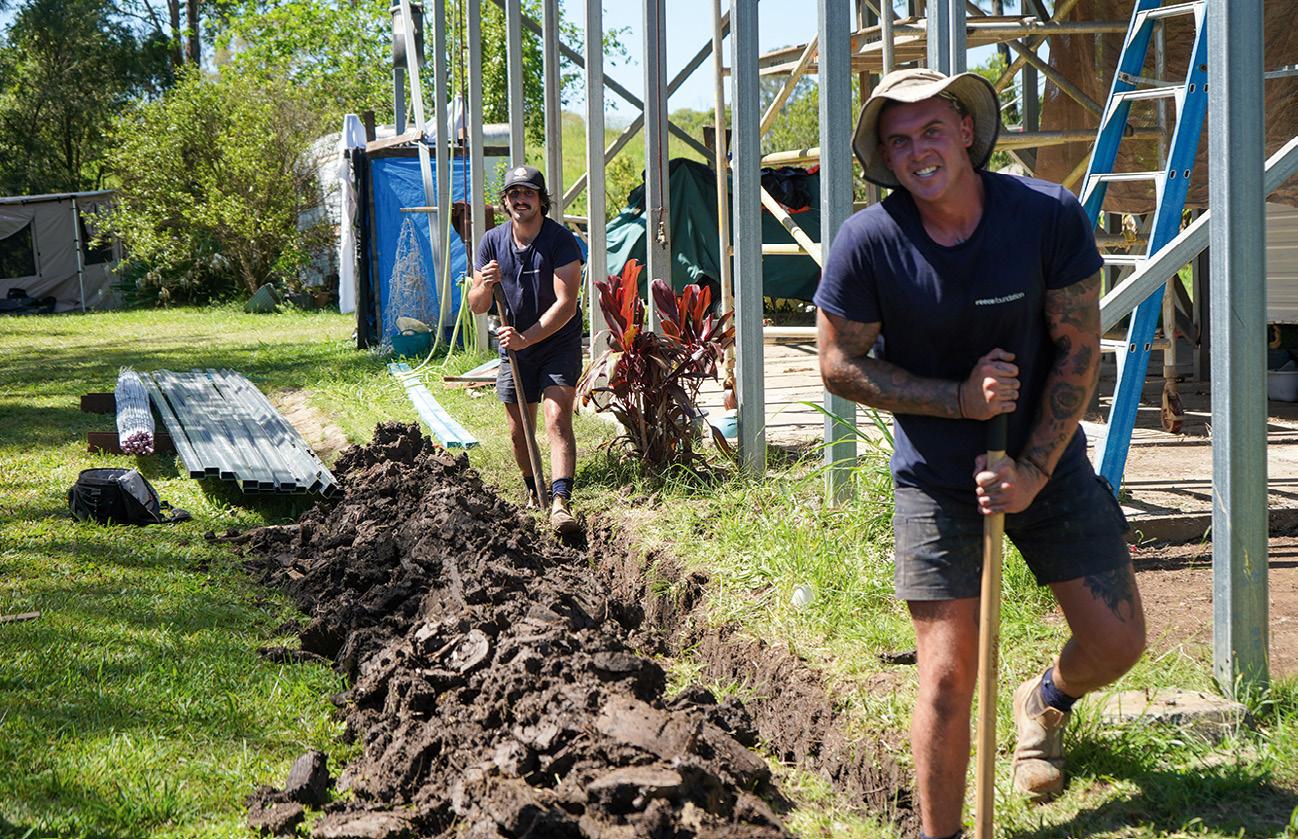
significantly water-damaged that they should not be lived in. However, many people have little choice but to remain in these homes despite the removal of walls, bathrooms and kitchens for safety reasons.
“Through our community outreach work, we heard that a lot of people were living without things like toilets, running water and showers – so with the support of the Reece Foundation, we have rebranded the project to Two Rooms & a Bathroom,” says Bird.
Together, Resilient Lismore and Reece Foundation co-designed the project to ensure they could deliver the restoration of essential plumbing services for 37 households and small businesses across the Northern Rivers.
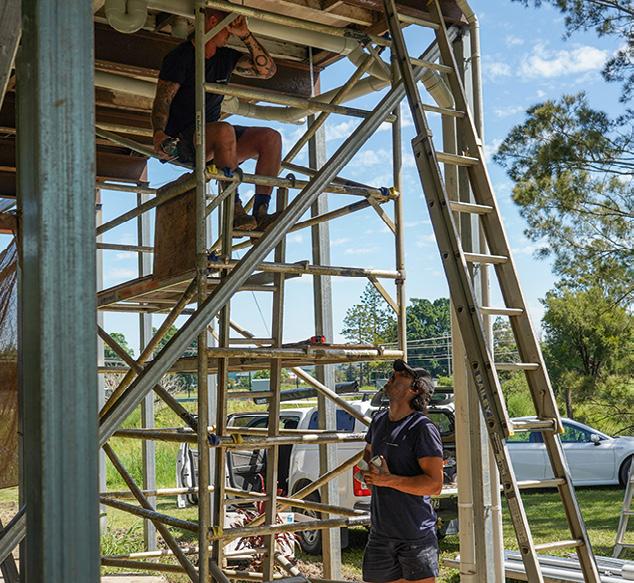
Over the course of three weeks, a group of 13 volunteer tradies from across Australia travelled to Lismore to restore kitchens, bathrooms and laundries for the most vulnerable members of the community. Additionally, Reece has donated all the plumbing products so the restoration work will be completed at no cost to residents. Ardex Australia and Ultimate Tiles Mornington donated waterproofing supplies that were essential to completing a number of jobs.
Volunteer plumber Carl Bushby was among the group of tradies who came to Lismore in November to scope the essential plumbing works required and decided to return to help finish the restoration work.

“This group of people is incredible,” says Bushby. “They’ve welcomed us back with open arms – it’s been an honour to get on the tools to ensure they can feel safe, secure and warm in their homes again.”
Resilient Lismore has prioritised people who cannot afford to do this work themselves, and will continue to work with the Reece Foundation to identify further community members who need essential plumbing.
The newly elected NSW government has committed $5 million towards extending the pilot.
To donate or volunteer: www.reecefoundation.charity n
TOP: Volunteer plumber Kale McCain and his apprentice Quinn Magnelli
ABOVE LEFT: Volunteer chippy Josh McCabe
ABOVE RIGHT: McCain and Magnelli needed scaffolding to get under the elevated house
LEFT: Elly Bird and volunteer builder Sam Goode
Kevin Ashton coined the phrase the Internet of Things (IoT) in 1999, he described computers as “brains without senses”. While working at multinational consumer goods corporation Procter & Gamble, Ashton proposed putting radio-frequency identification chips on products to track them through the supply chain.
According to Ashton, this network of physical objects connected wirelessly through the internet has now created a class of computers that can “sense things for themselves”.
This IoT revolution is having an impact on swimming pool owners, and is due to have an increasing impact as time goes on.
From chlorine dosing systems to pool light controllers and maintenance systems, IoT technologies are transforming the way we take care of our swimming pools and spas. Billions of networked “smart” physical objects around the world are constantly collecting and sharing data across the internet, giving them a level of digital intelligence and autonomy.
Statista Research Department reports that the number of IoT devices worldwide is forecast to almost triple from 9.7 billion in 2020 to more than 29 billion in 2030. By 2030, it predicts that China alone will have five billion IoT connected consumer devices.
Whether it’s via smartphone, tablet or watch, the expectation for pool owners is that they can program, monitor and remotely manage pool equipment on the go, allowing them to fit seamlessly into increasingly busy lifestyles.

Within the leisure and aquatics industries, where intense competition and tight margins make the latest innovations even more valuable, remote connectivity solutions for engineers and end users are increasingly coming to the forefront.
The commercial and domestic swimming pool sector is no exception and has seen such innovations enter the market in recent years. These include dedicated platforms from watertreatment companies like Seko.
Founded in Rieti, Italy in 1976, Seko has spent
Residential swimming pool and spa automation has made leaps and bounds over the past decade, and the Australian market for automation products and IoT networked systems is increasing, replicating trends overseas. The connected pool: lay back and let the technology do the work for you.decades refining its peristaltic, solenoid and motor-driven pumps solutions for applications as varied as wastewater, drinking water and swimming pool water treatment.
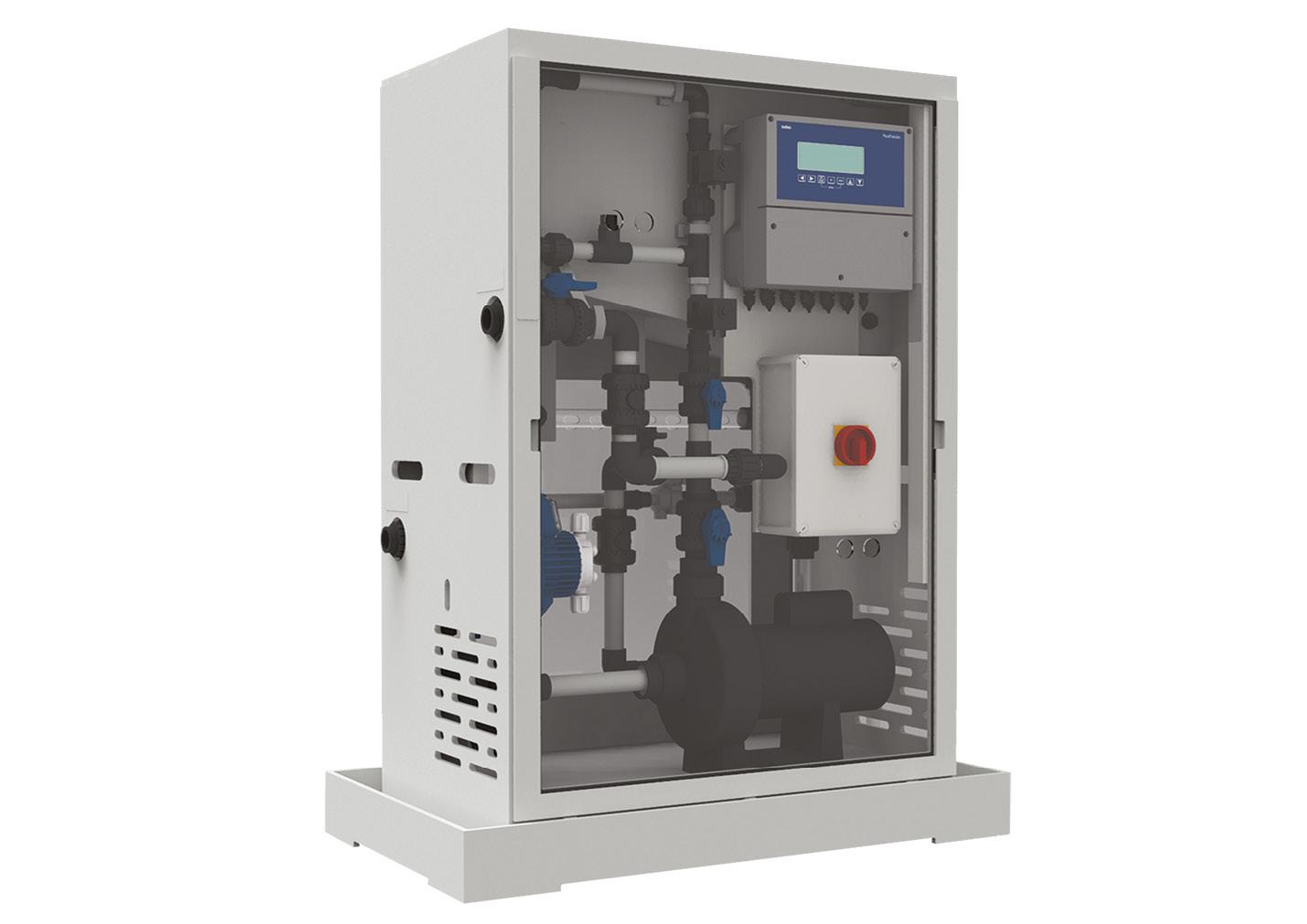
Now, with the availability of new technology, it has introduced IoT capability to its swimming pool dosing range by including integrated WiFi hubs in many of its systems.
“This allows users to connect to their equipment via dedicated smartphone apps and a unique online portal,” says Seko Australia managing director, Vince Neal.
Seko’s manufacturing processes are driven by the Kaizen principle – the Japanese term for change for the better or continuous improvement – which sees the brand constantly refine its systems by integrating cutting-edge technology to adapt to the latest market needs.
This approach, combined with a focus on a high-quality user experience, has led to the implementation of IoT technology across a range of watertreatment systems.
For example, Seko created two distinct apps for customers and engineers –SekoLink and SekoWeb respectively.
“SekoLink enables users to start or pause their pool’s chemical dosing system at any time as well as view live pool temperature and health updates, allowing issues to be identified and actioned quickly,” says Neal.
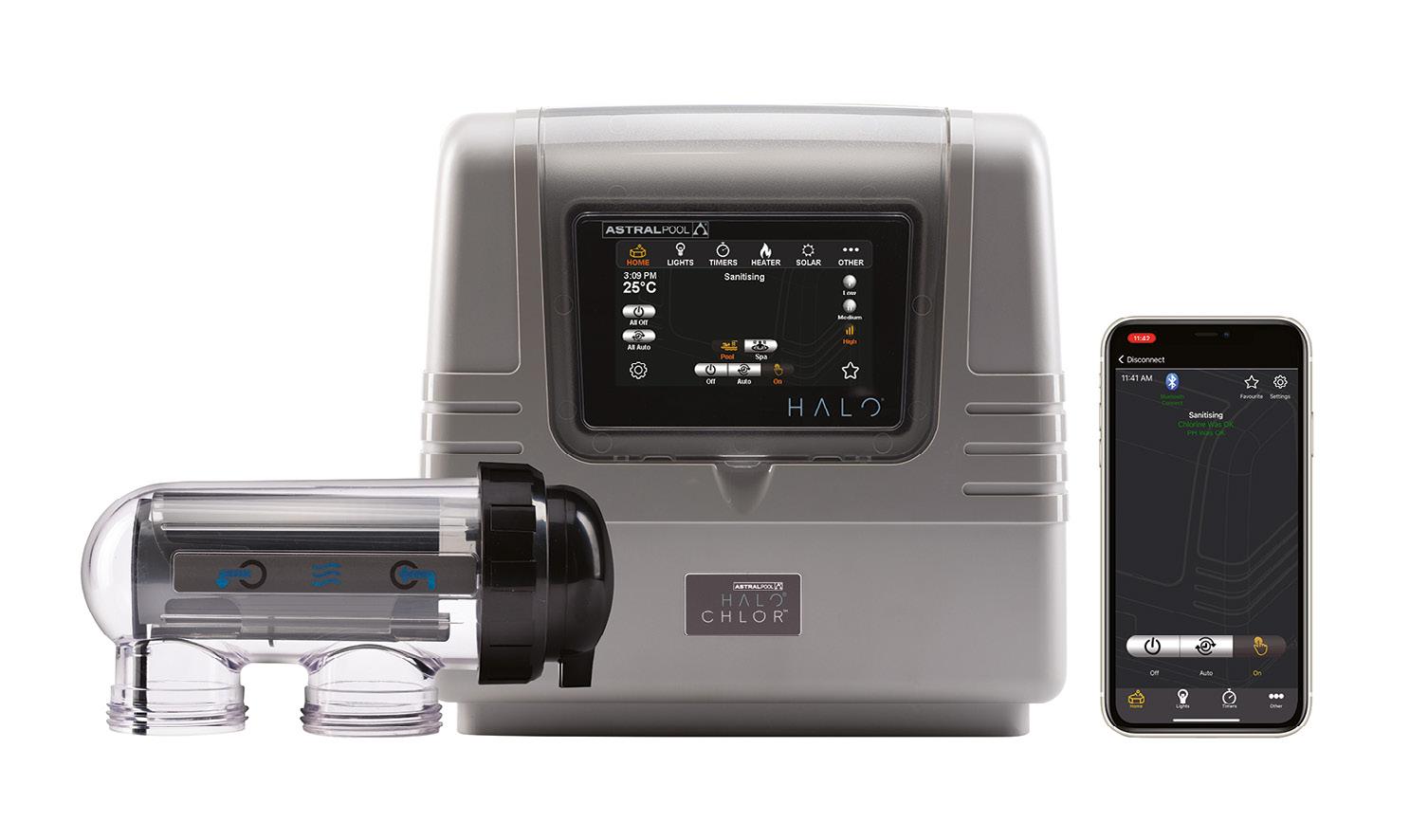
“It also sends a notification when chemical levels are running low, giving the user adequate time to order more product and ensure water quality is maintained.”
By limiting rather than removing the owner’s influence on their pool, SekoLink prevents vital parameters and programs being tampered with by unqualified users while still allowing a degree of control.
“Meanwhile, the password protected SekoWeb prevents unqualified users from altering programs and jeopardising water quality,” says Neal.
This online portal for professional pool and spa management is designed exclusively for technicians who can
access the platform simply by scanning a product’s QR code or via their online login. The technology allows technicians to maintain water quality from any location instead of physically from the plant room.
“This enables engineers responsible for multiple sites to monitor and manage dosing systems without the associated travel costs and environmental impact of journeys,” he explains.
The increasing cost of travel – not to mention its uncertainty post-pandemic – along with a growing awareness of its environmental impact, means that IoT-enabled systems are likely to become even more prevalent in the years to come.
“The ability to monitor and manage equipment 24/7 from any location saves time, money and is environmentally responsible – so we believe webconnected swimming pool dosing systems will eventually become the norm,” says Neal.
Seko recently added the PoolFeeder to its range of automated products. The allin-one chlorine dosing solution can serve multiple pools up to 1000m3.
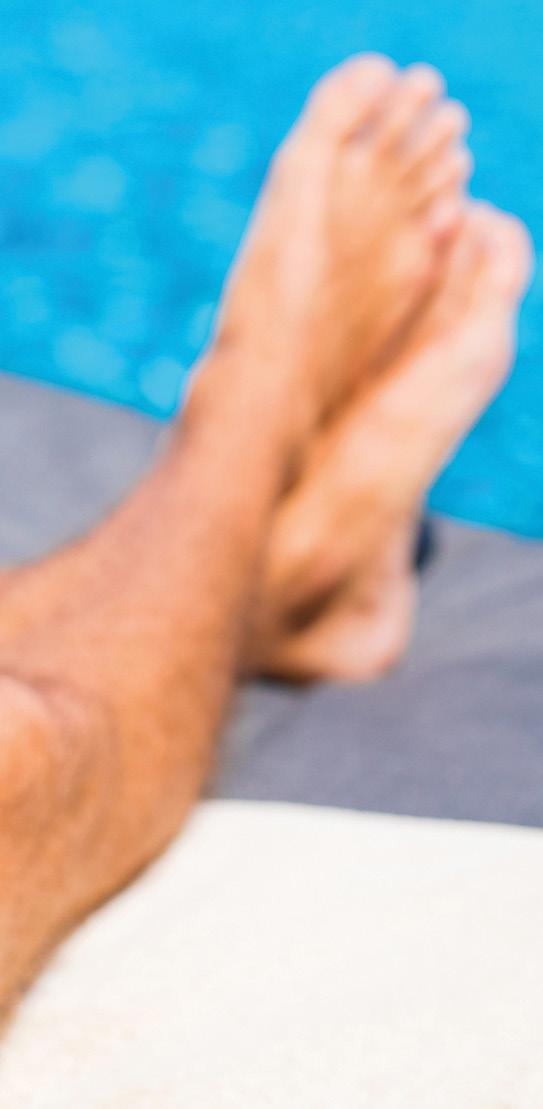 LEFT: A PoolFeeder system from Seko
LEFT: A PoolFeeder system from Seko
“The system is supplied in a cabinet with all elements fully integrated, including a builtin washing system and a 25kg chlorine tank,” he says.
“PoolFeeder also offers compatibility with SekoWeb for round-the-clock access to data and programming via a smart device, PC or laptop.”
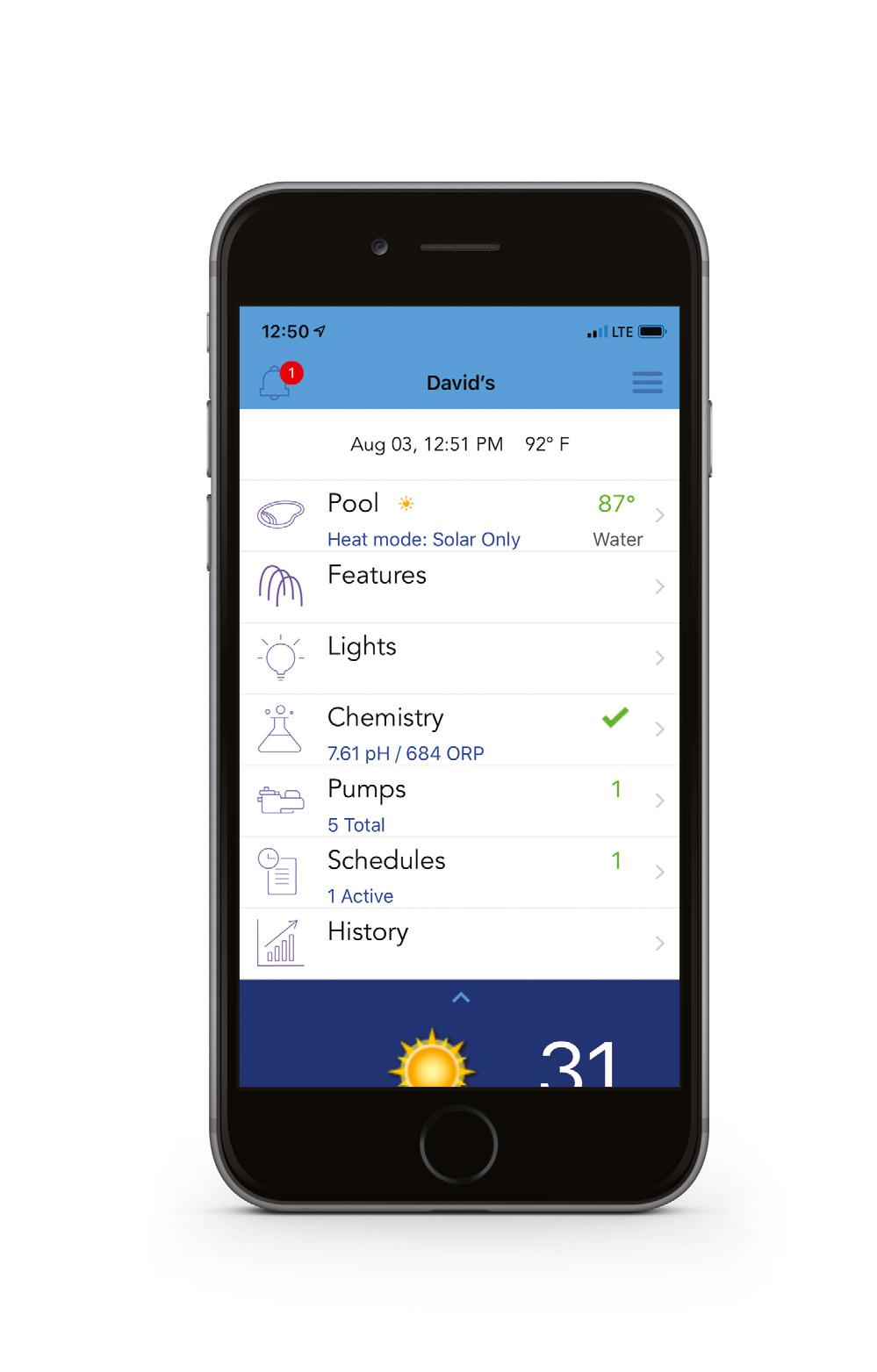
Fluidra was one of the first pool industry manufacturers to market IoT-enabled products, releasing its iAquaLink platform around the same time that second generation iPhones were being delivered into the market back in 2011.
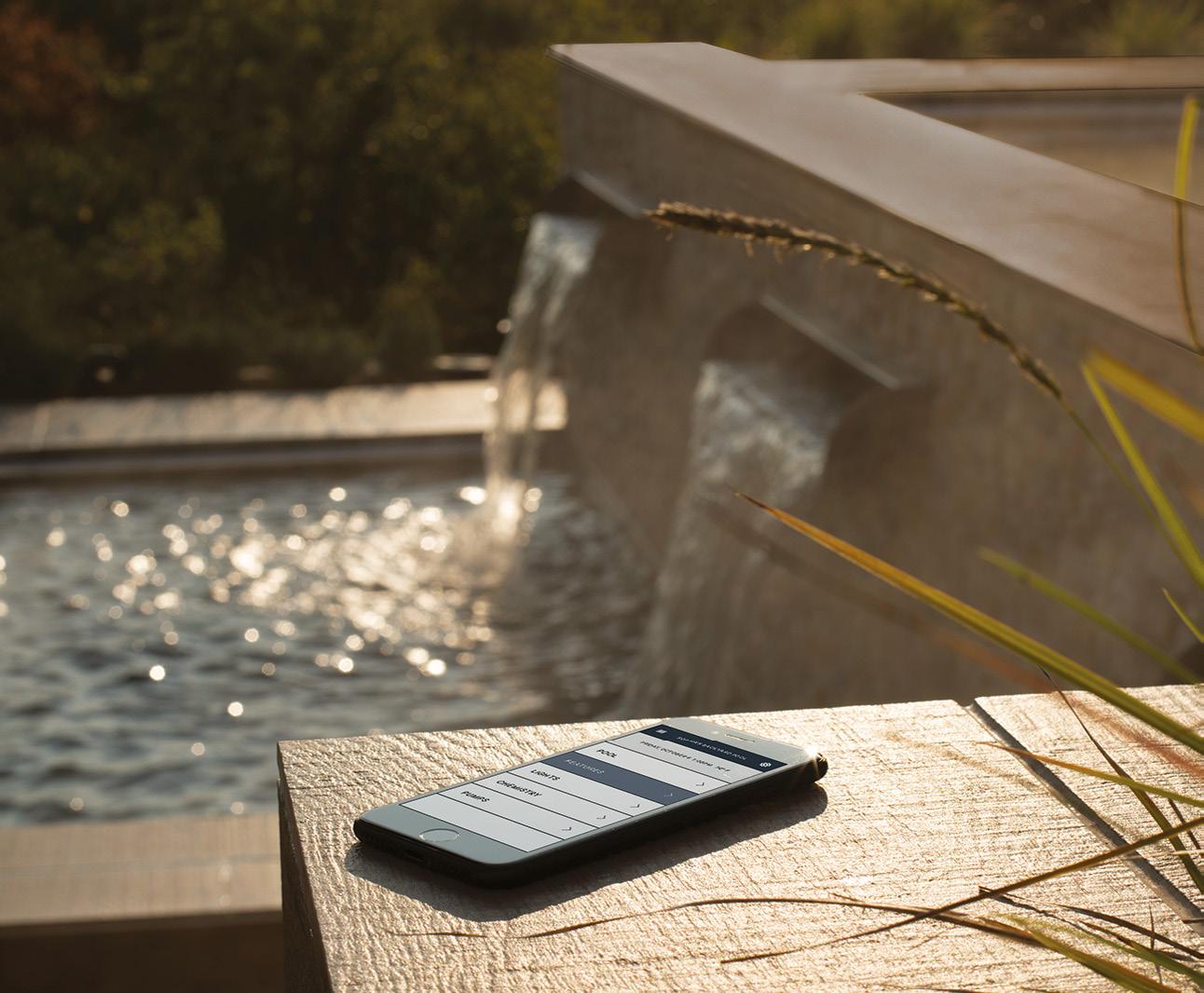
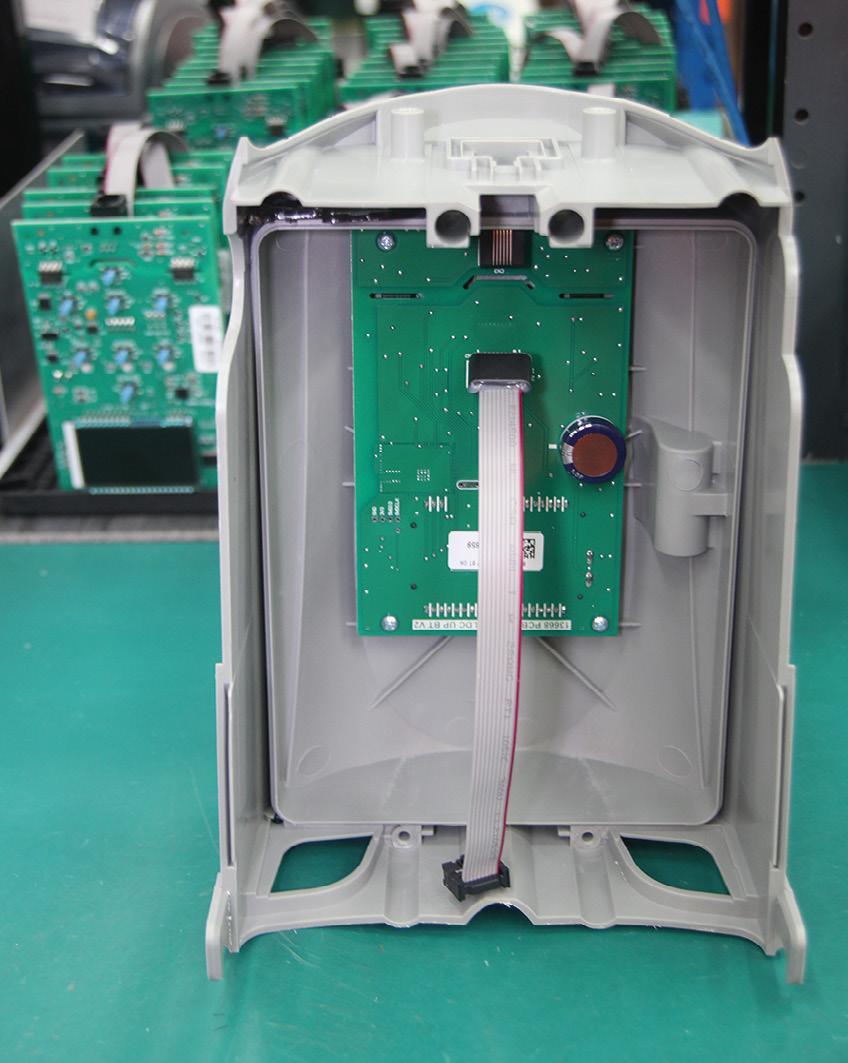
“We could see the world moving in the direction of connectivity and having control at your fingertips,” says Jonathan Bristow, senior category manager at Fluidra Group Australia.
“And for almost ten years, our AstralPool brand has also been at the forefront of locally made IoT products. These have been designed specifically for Australia by our local engineering team. I could safely say that our apps are the most widely used, not just throughout Australia, but also across the world – with a connected base of more than 800,000 devices.”
All this occurred alongside the rise of home automation, with smart devices such as Google Home and Amazon’s Alexa that many homes have now incorporated, enabling users to engage with their pool or spa via voice commands.
“Technology changes rapidly, whether it is a new smartphone with new software or new protocols that smartphone manufacturers force on developers,” he says.
“These ever-changing parameters can make a challenge out of product updates, troubleshooting issues as they arise infield, or keeping up with the latest hardware that drives the tech. But it’s one that Fluidra understands and is willing to invest
TOP
time and resources to find the right solution for our users.”
Fluidra boasts a combined experience of over 150 years thanks to a diverse team of eight engineers with backgrounds ranging from consumer electronics to security and automotive.
“They are up for the challenge that this field presents and brings innovation from their experiences that will help bring the future of IoT enabled products to our customers and the industry,” he says.
AstralPool Halo Connect System, which won a Good Design Award in 2021, the year before it was released into the market, further bolsters the company’s automated line of products.
“Halo really set the market abuzz when it was released because it was the first real customisable solution to control the equipment on almost any pool, and build the system to suit,” he says.
“With its BTconnectivity across its ecosystem, setting it up and connecting it takes a fraction of the time it previously would have done. And with the combination of Bluetooth and WiFi connectivity for users, close range or remote access is seamless and instantaneous.”
Bristow believes we
TOP LEFT: The Halo is made at the Fluidra factory in Keysborough. There is more on Fluidra’s Australian manufacturing facility on page 50 RIGHT: Pentair’s next generation system IntelliCenter will be their main automation platform for the coming years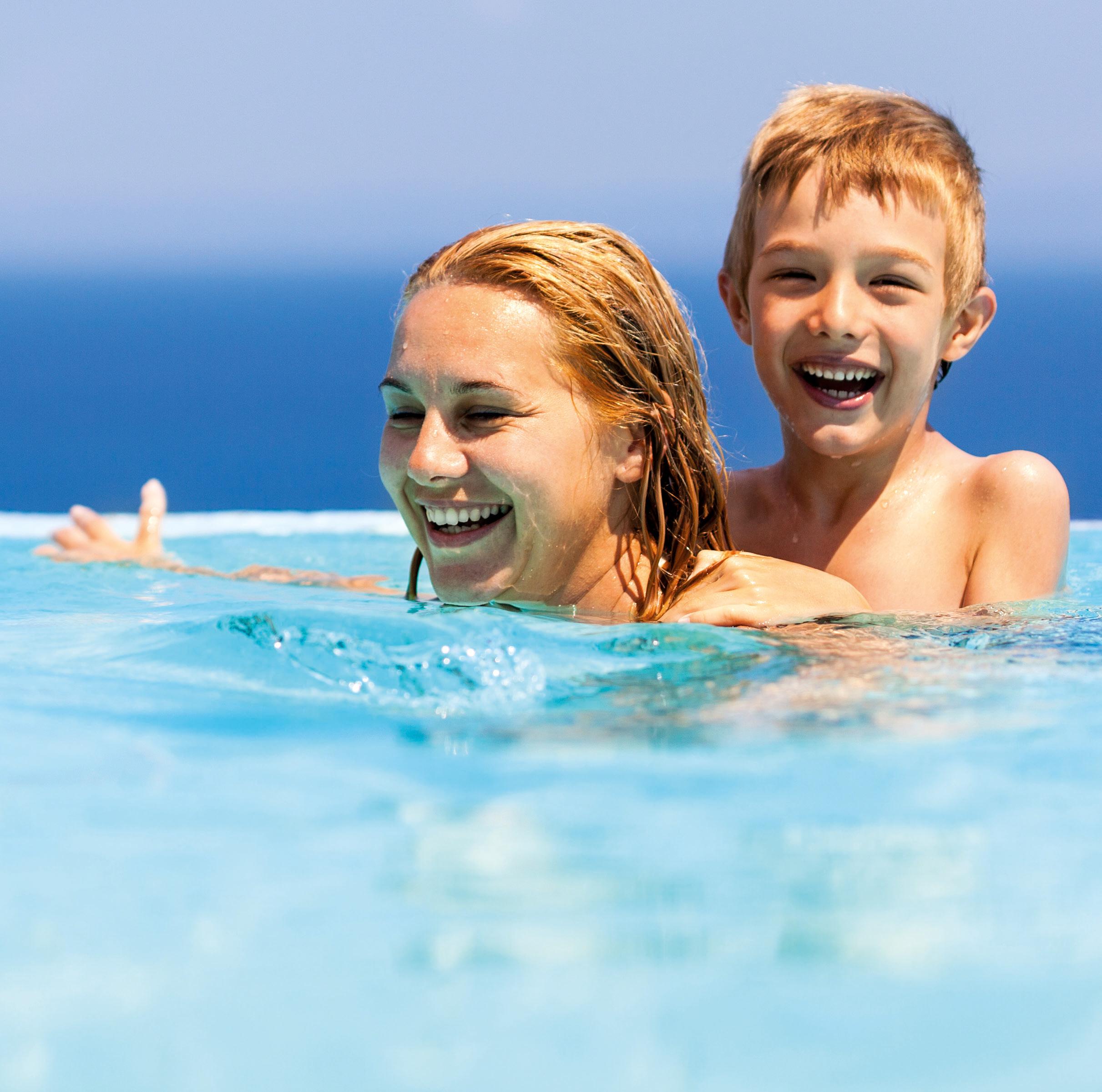
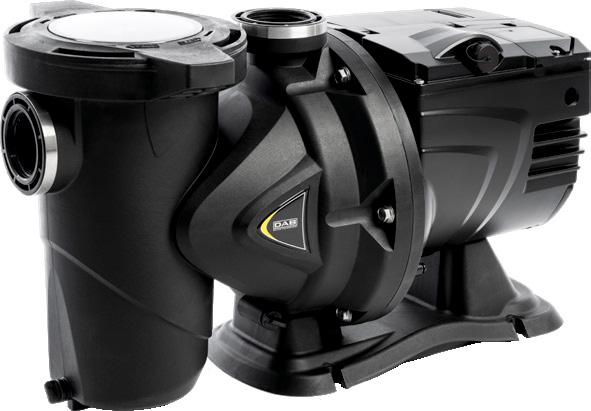




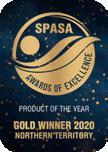

will see more individual products become connected, interfaces become more intuitive or “smarter”, and that will empower users to better take control of their pool.
“Tying them all into a single ecosystem is key, as people don’t want to change across multiple apps to control individual pieces of equipment on their pool,” he says.
In 1975, when Peter “Father of Pool Automation” Bajka developed the first pool and spa control system, he simultaneously started Compool. The company was later acquired by Pentair and some of the original staff are still working for it today.

“So, in one way or another, Pentair are the pioneers in pool automation,” says Robert Sterland, Pentair product manager for aquatic systems.
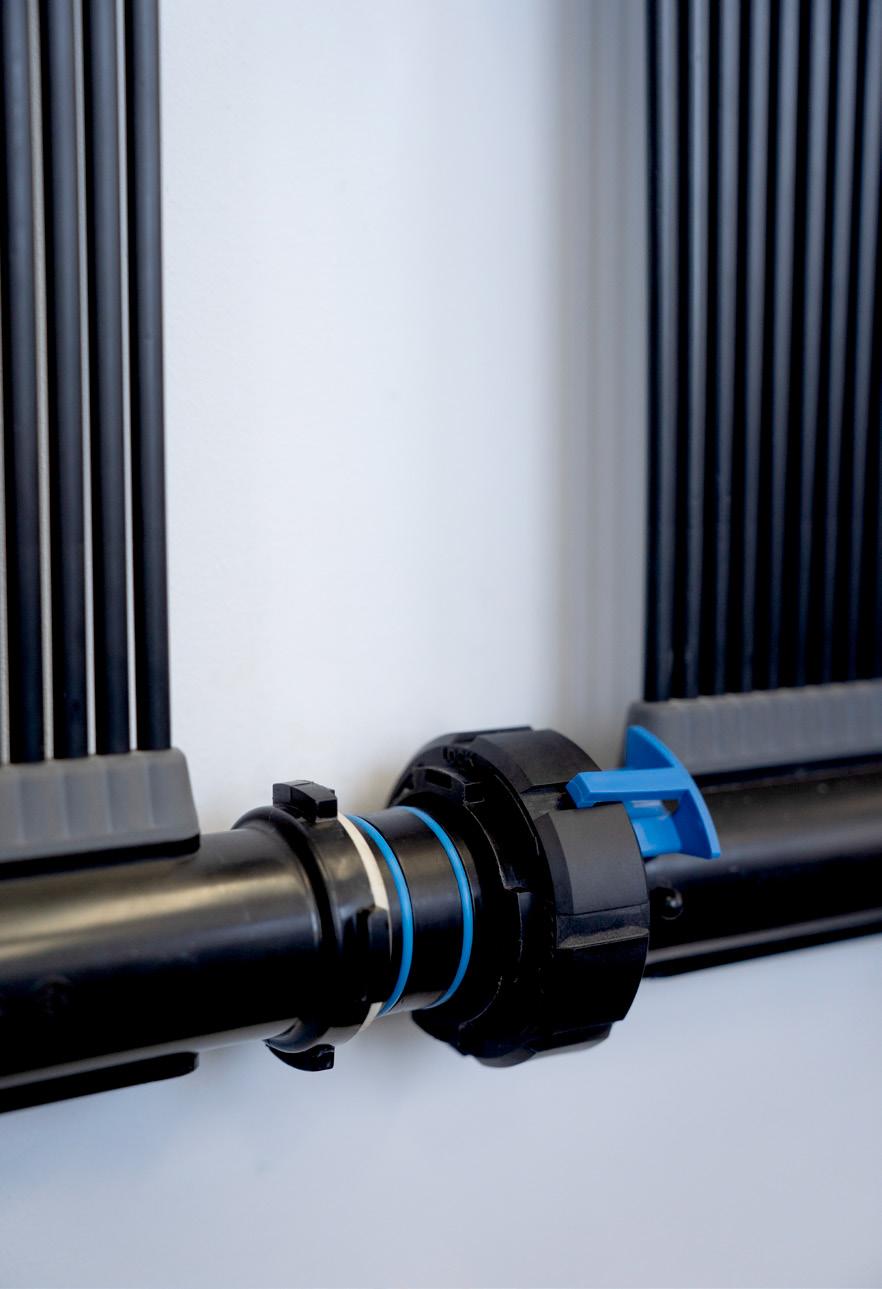
“Pentair continued to use the Compool brand before releasing systems like EasyTouch and IntelliTouch under the Pentair brand. We were the first to integrate pool automation systems with variable speed pumps, using the IntelliTouch and IntelliFlo products back in the 2000s, and the first to add a mobile app with Screenlogic.”

Development has continued over the years resulting in more features, improved reliability, better apps and enhanced user interfaces.

“We have released our next generation system IntelliCenter, which







will be our main automation platform for the coming years,” he explains.
“We are also developing a number IoT products that are smaller, independent devices connected to the cloud. The Colorsync is a WiFi-enabled colour lighting controller, the Chemcheck is a water chemistry monitoring device and even the next IntelliFlo pump will be wirelessly connected.
“All these devices are controlled via just one app, Pentair Home, which is the digital platform for all our future product releases, allowing users of multiple independent devices to control everything with the one app.”
Pentair has a dedicated R&D facility in

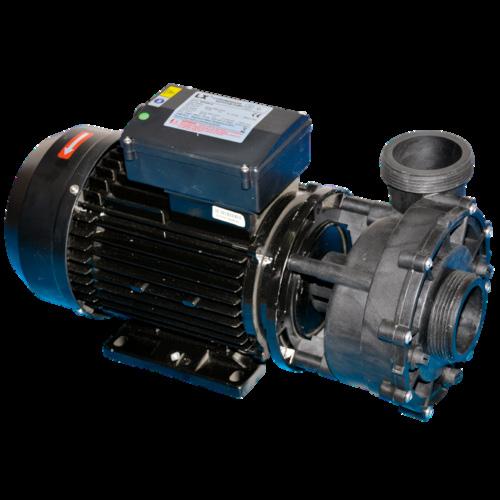

Apex, North Carolina that is separate from all other facilities.
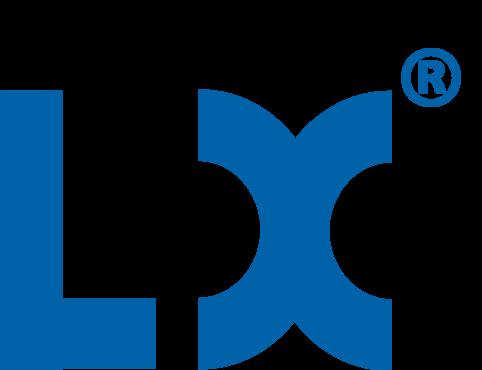
“This is so we can focus on nothing but R&D,” says Sterland. “There are some really bright minds there from all areas of science and engineering. The facility is located near some major universities, so there is no shortage of talent to access.”
As Pentair’s automated systems become more complex, the testing regime becomes longer and more difficult.
“Software bugs are hard to avoid. Every time a phone supplier releases a new iOS, testing needs to be repeated,” he explains. “Pentair now has a dedicated app development team, specifically for creating and maintaining apps and digital infrastructure.”
Sterland says consumers can expect to see more pool and spa products becoming automated, which in turn may create a cluttered landscape whereby our phones will be filled with assorted apps.
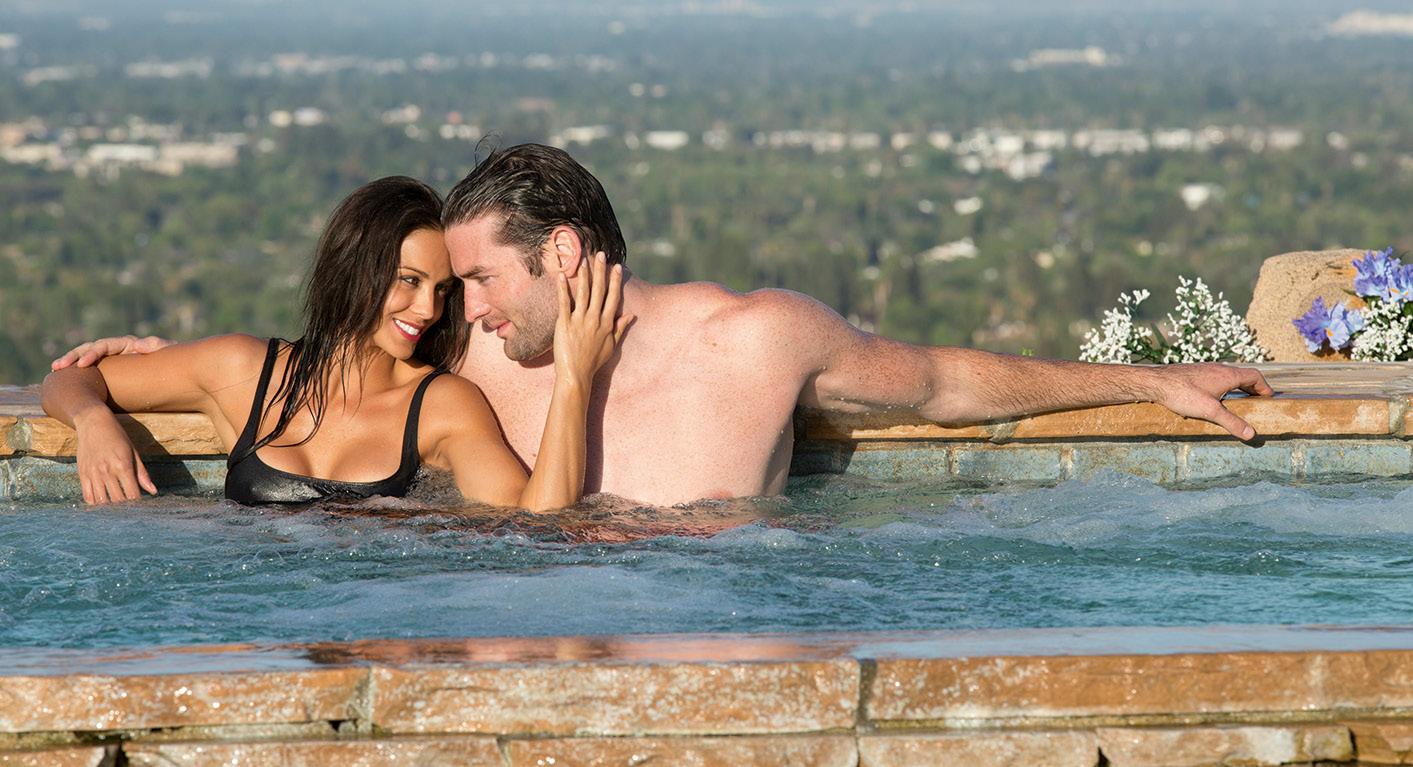

“There is no doubt that product automation and control is becoming dispersed. With individual products having their own IoT capabilities, the big

disadvantage here is that you end up with half a dozen different apps to control your pool,” he says.
“This is why the Pentair Home App is so smart, as all Pentair’s IoT products will be found in the one place on your mobile device.”
The biggest piece of advice Sterland has for new pool owners, is “don’t let pool automation become an afterthought”.



“Too frequently this is brought up after the pool is in the ground and the pipework is set in concrete,” he says.

“Instead, consider automation at the inception of the pool plan: not only do electrical and data provisions need to be considered and planned appropriately, but it may also lead to doing things differently.”
Hayward’s experience and expertise in the pool industry has enabled the company to develop its current generation of automation, IoT and remote-control systems.
“By leveraging advanced technology, Hayward has been able to provide pool owners with hassle-free, energy-efficient and smart pool equipment that is easy to operate and maintain,” says Robert Emmett, Hayward marketing manager for Australia and New Zealand.


“Their commitment to innovation and sustainability has driven them to create products that enhance the pool experience for millions of satisfied pool owners worldwide.”
Hayward’s R&D department consists of a diverse group of individuals with expertise in various fields, including electrical engineering, software development and mechanical engineering.
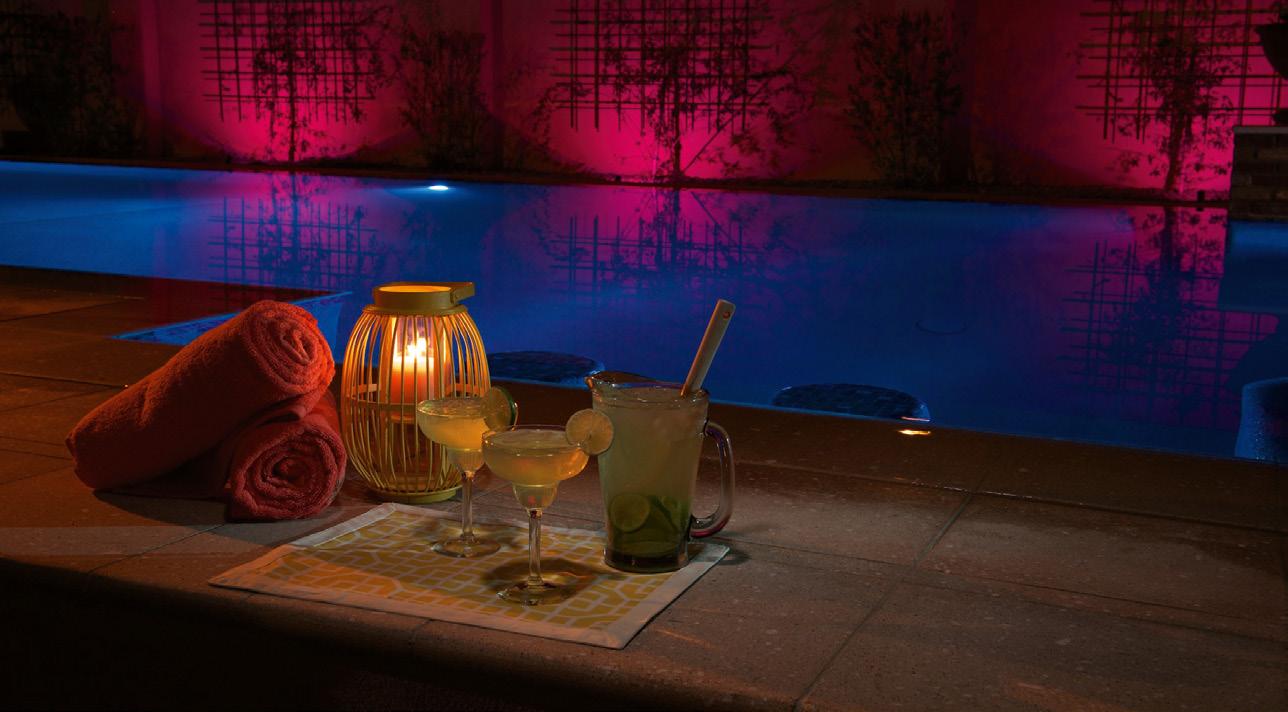 Lighting is one of the many things that can be controlled.
Lighting is one of the many things that can be controlled.
“The department also includes experienced professionals from outside the swimming pool industry, such as those with backgrounds in aerospace and defence, automotive, and consumer electronics,” Emmett says.
“This diverse team brings a range of perspectives and knowledge to the development process, allowing us to innovate and create cutting-edge products that meet the evolving needs of the market.”
He says that Hayward’s acquisition of SmartPower and SmartValve technology businesses was driven by the need to expand its offerings in the energy-efficient and automation sectors.
“SmartPower provides an intelligent control system that optimises energy usage for residential and commercial pool pumps, while SmartValve offers an automated valve solution for pool plumbing systems,” he explains.
“These acquisitions will enable Hayward to provide advanced energy-efficient solutions to the residential pool market, allowing for better control and cost savings for pool owners.”
Hayward’s OmniLogic pool and spa controller is another device that allows users to control nearly every aspect of their backyard, no matter where they are in the world. Users can monitor their
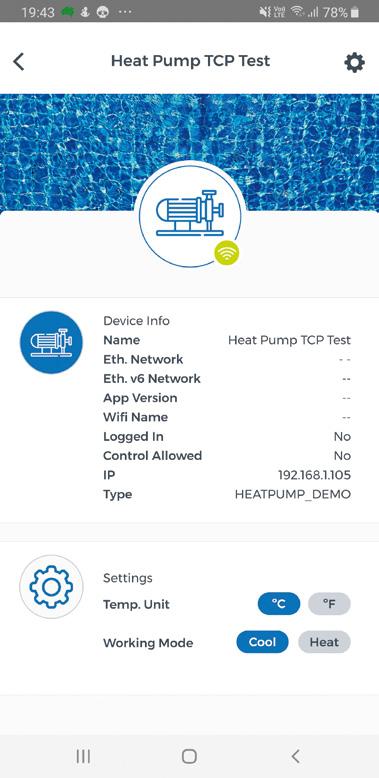


Here at Daisy, we’re doing our best to help grow your business!
From product training to installation, Daisy is your full service pool cover partner. With the most extensive range of pool covers and rollers in Australia, finding the right solution for your customers has never been easier.
Find out more today at daisypoolcovers.com.au
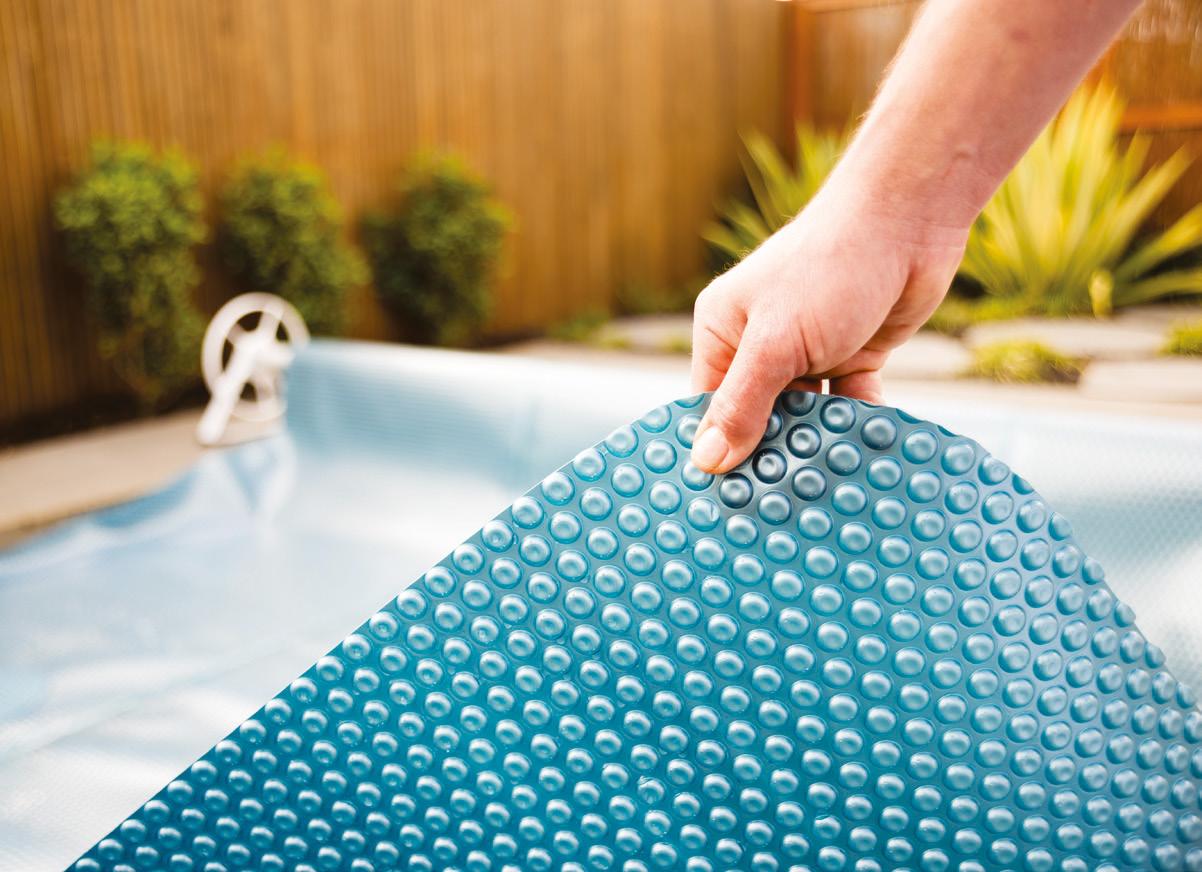 LEFT: Ascon Turmion Pro WiFi TXF
BOTTOM LEFT: Waterco’s Poolware
BOTTOM
LEFT: Ascon Turmion Pro WiFi TXF
BOTTOM LEFT: Waterco’s Poolware
BOTTOM
automation system from their mobile device; and schedule, adjust and manage settings from anywhere.
“OmniLogic is compatible with virtually every piece of backyard equipment, including variable speed pumps, heaters, pool and spa colour lights, booster pumps, backyard lighting and water features,” he says.
“Compared to similar products in the market, its key features include an intuitive, icon-based
user interface, adjustable favourites buttons, expanded backyard themes, and the ability to seamlessly add new features through simple expansion hardware.”
Ascon Pool started its technological journey with its radio frequency (RF) remote control range – which it still sells — which then segued into Bluetooth and WiFi automation.
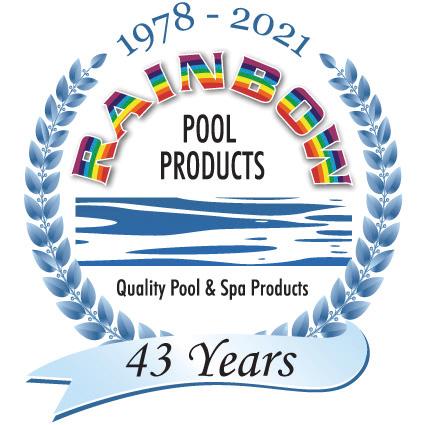
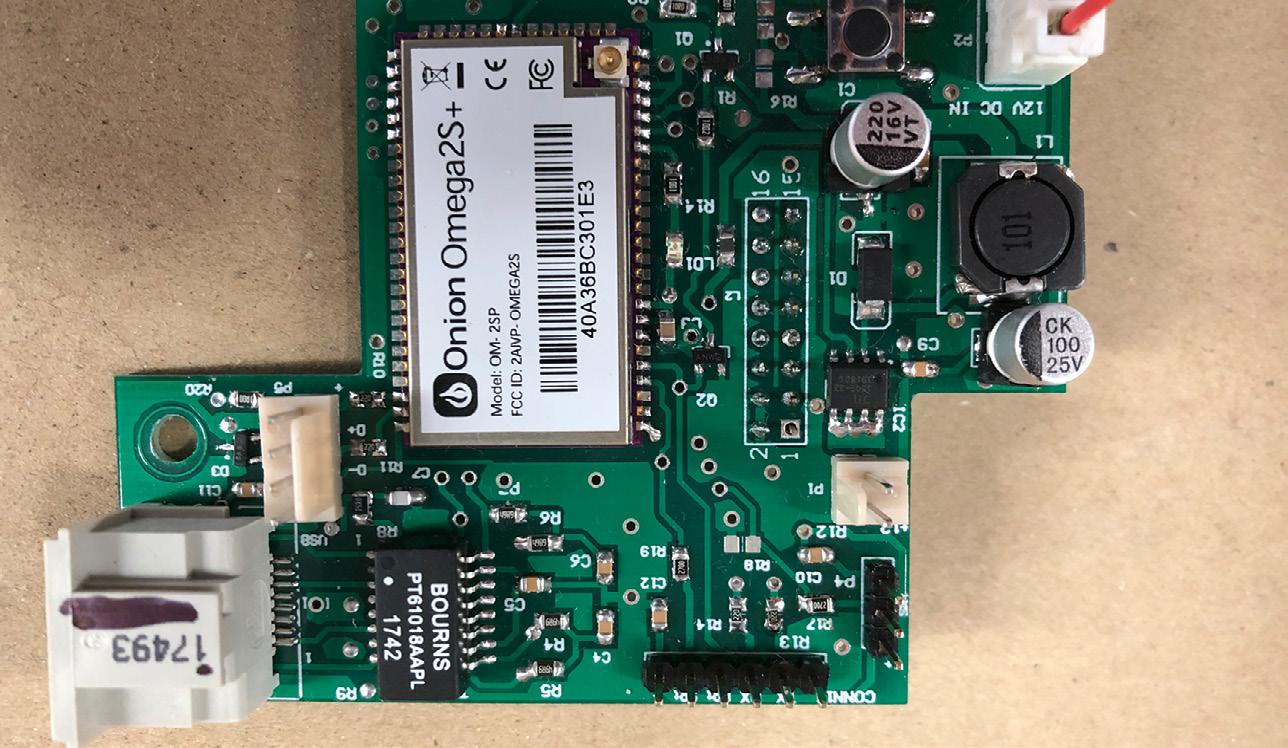
“We’ve always had a good focus on easy automation, with our current WiFi automation taking 30 seconds to set up,” says Ascon’s CRT and marketing manager, Trinity Mansfield.
The company’s multifunctional R&D division comprises four engineers who work alongside sales and production teams.
“Our demand doesn’t just come from the pool industry,” she says. “We are preferred suppliers for the MM Electrical Merchandising network, so we get valuable input from end-users and distributors. For automation, we look at the influence of home automation and IoT.”
Mansfield says Ascon’s most recent release, the Turmion Pro WiFi transformer, manages pool lights with the AsconSmart app from anywhere in the world, “or even just from your lounge room”.
With IoT devices forecast to almost triple from 9.7 billion in 2020 to more than 29 billion in 2030, consumer demand for smarter, more sustainable, and more personalised products will see the pool industry continue evolving and innovating. With that, Hayward, sees four key trends emerging over the next couple years.
Smart and connected pools: With the advent of IoT and smart home technology, there is an increasing demand for connected pools that can be monitored and controlled remotely. This trend is likely to continue in the coming years, with more manufacturers offering smart pool products.
Sustainable and energy efficient pools: Consumers are increasingly aware of the environmental impact of their lifestyle choices and are seeking more sustainable and energy-efficient options. This trend is also expected to impact the pool industry, with more emphasis on energy-efficient pumps, heaters, and lighting systems.

Health and wellness: The covid pandemic increased the demand for home-based health and wellness solutions. Pools, with their ability to provide low-impact exercise and relaxation, are expected to become more popular as a wellness option.
Customisation and personalisation: Consumers are increasingly seeking customised products that fit their unique needs and preferences. This trend is also expected to impact the pool industry, with more manufacturers offering tailored pool solutions.
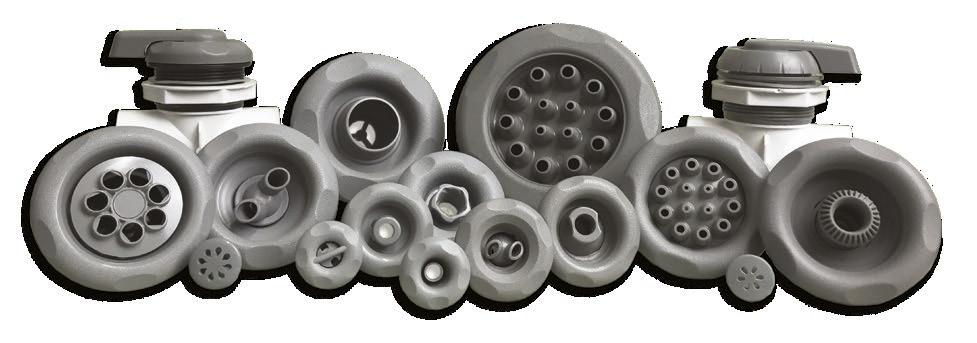
When Soon Sinn Goh founded Waterco 41 years ago, technology had yet to disrupt the swimming pool sector. While the trajectory has been one of incremental growth, rapid changes in automation and consumer expectation led the company to develop proprietary water analysis software called Poolware to help its Swimart franchise partners analyse pool water samples and provide accurate chemical recommendations to owners.
Originally used in desktop form by its Australasian pool and spa network, Poolware was re-invented as a cloud-based system in 2018 where it has since evolved into a sophisticated web and mobile app performing a huge array of tailored CRM functions for pool owners, store managers, technicians and after-sales support.





“Waterco’s pool automation system enables homeowners to obtain essential data about their swimming pool while also being able to access key operational functions,” explains Waterco senior software engineer Luke Dawson.
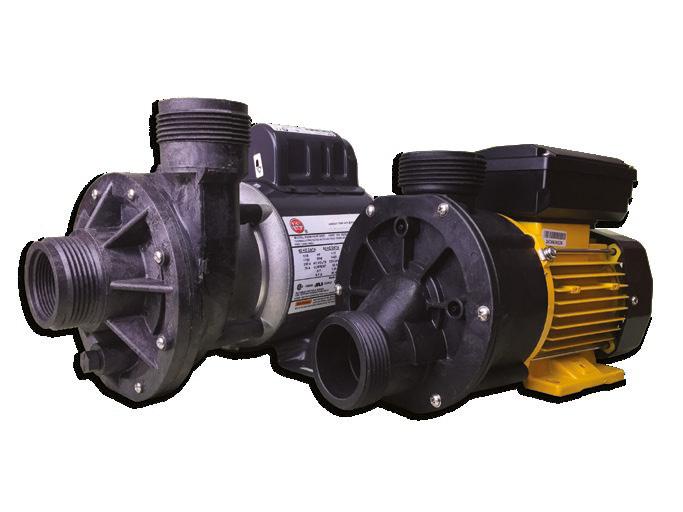

“Poolware also enables Swimart’s pool service technicians to obtain this information remotely through the recently developed cloud service.”
However, to further develop the technological expertise and infrastructure necessary to manufacture WiFi-enabled products and ultimately an IoT platform, Waterco combined its industry
experience as a heritage brand with the agility of a start-up.
“Since assembling a team of specialised software engineers and cloud architects over the past four years, the company has achieved a few significant tech milestones,” he says.
“This includes engineering a WiFi board that can be customised and adapted to different equipment, developing new production tools to facilitate uploading new device firmware and device commissioning, creating a robust device registry that has the relevant information to understand and talk to many different products, as well as building a raft of digital tools that simulate production and real-world use.
“This professional testing capability is integrated throughout a product’s entire development cycle, which helps to identify issues early.”
access controls in alignment with AWS best practices, securing device connections and data with mutual authentication and end-to-end encryption, along with a host of manufacturing and inventory tools to allow for device commissioning, lifecycle management, unique configuration, and quality assurance processes during firmware deployment.
By working closely with AWS advanced consulting partner DNX Solutions, Dawson and his team have been building cloud-connected systems that address the complexity that comes with computing across multiple domains.
“The number of individual components has grown, more applications and services are being deployed to production daily, and infrastructure has needed to be spun up, scaled and taken down frequently,” he explains.
One of the best tools in the modern development arsenal to deal with this complexity is called Infrastructure as Code (IaC), whereby managing and provisioning of infrastructure components is achieved through programmatic means rather than manual processes.
“With IaC, configuration files containing your infrastructure and system specifications are created, which makes it easier to edit and distribute configurations as well as allowing for work across team members,” he says.
Without an IaC practice in place, it becomes increasingly difficult to manage the sheer size of today’s cloud and IoT applications.
To build an even more solid cloud infrastructure on Amazon Web Services (AWS), Waterco’s software engineers needed to provide an effective platform to support both new and existing products that go beyond the home WiFi network and into internet-enabled systems that are secure and high performance.
“Add that to a litany of IoT challenges that come with the territory — unique device security considerations, low unit cost requirements, embedded device operating systems that require very high reliability, less than ideal WiFi signal environments, regular home WiFi dropouts, complexities in managing Over the Air (OTA) updates across a large fleet of varied devices, the weather and elements — and you have a dynamic digital landscape that tests even the most experienced of product development teams,” Dawson explains.
The plan was to develop the internet-enabled smarts for new and existing Waterco products, along with an industrial scale cloud platform to manage devices and user accounts.
This requires modern solutions for embedded systems, implementing clear and robust
“This is where DNX has excelled,” says Dawson. “They know how to leverage IaC at a professional level and have fast-tracked the Waterco development project by many months. And by partnering with them from the design and architecture stages, we have been able to develop an entire IoT platform that can now be spun up from scratch with the virtual push of a button.”
Think of it this way: imagine designing your dream home with an architect and then instead of building all the various pieces manually, you create a machine that builds the home for you.
“The house could be built again and again and repaired if elements needed updating or changing in the future,” he says.
This is the way of the future. n
www.ascon.com.au
www.astralpool.com.au

www.davey.com.au
www.dnx.solutions
www.fluidra.com
www.pentair.com
www.seko.com
www.waterco.com.au
“By 2030, China alone will have five billion IoT connected consumer devices.”
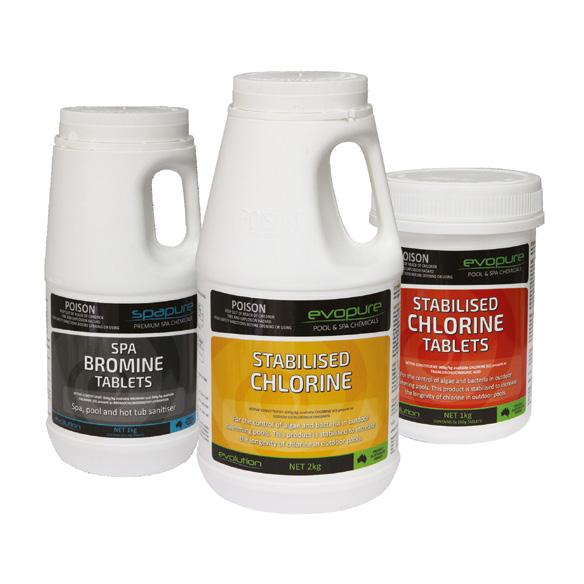


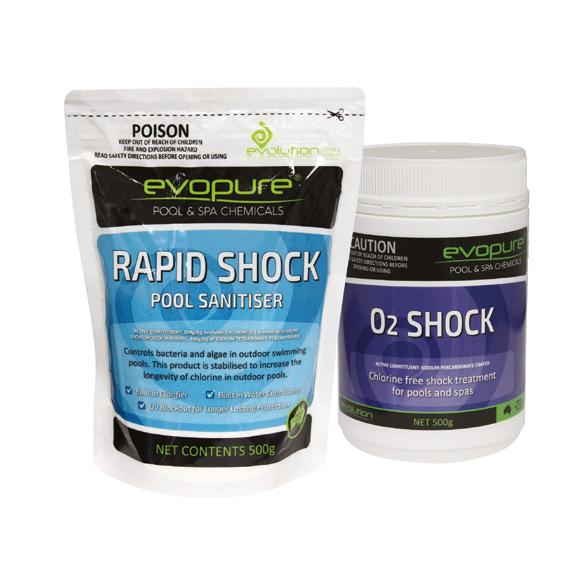
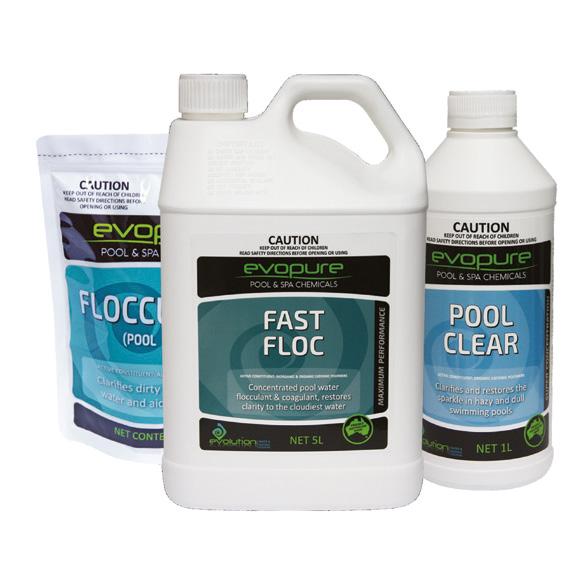

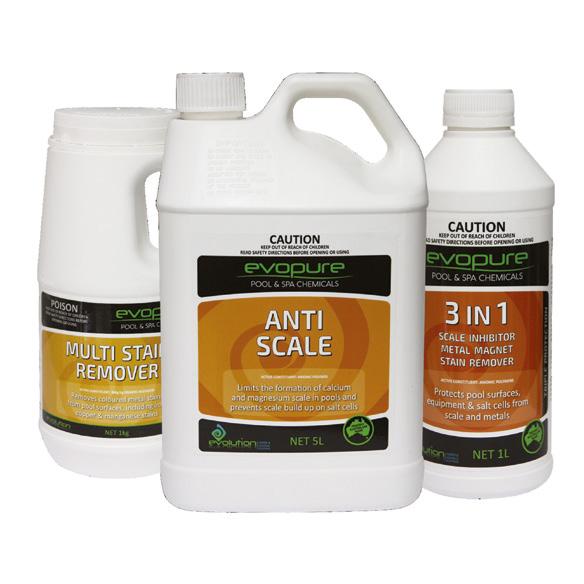
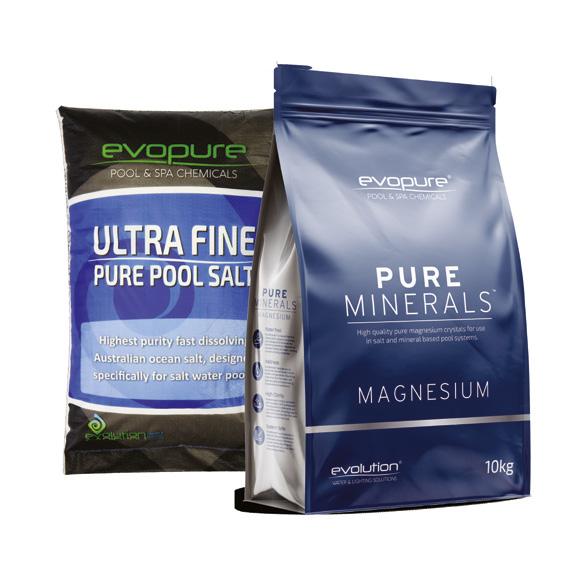
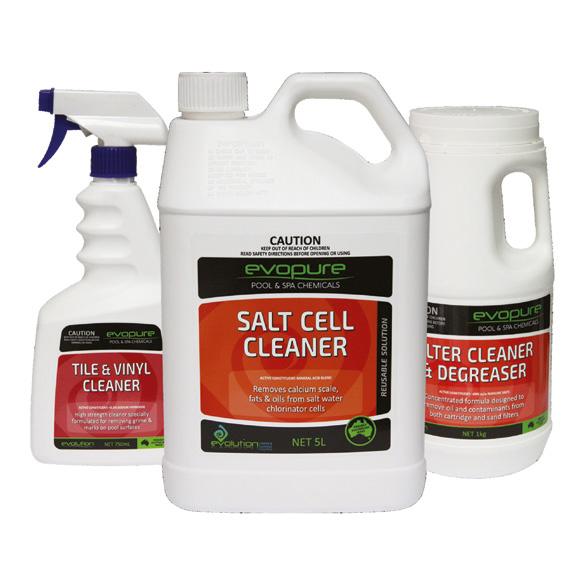
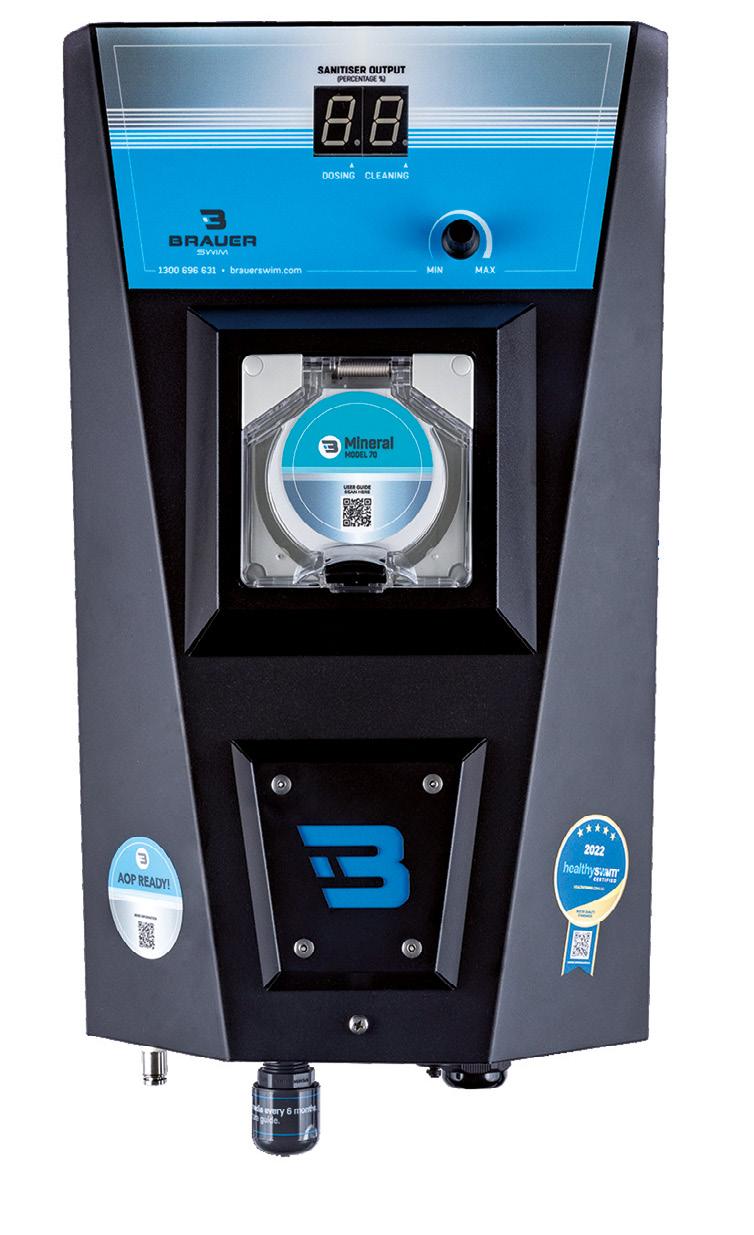
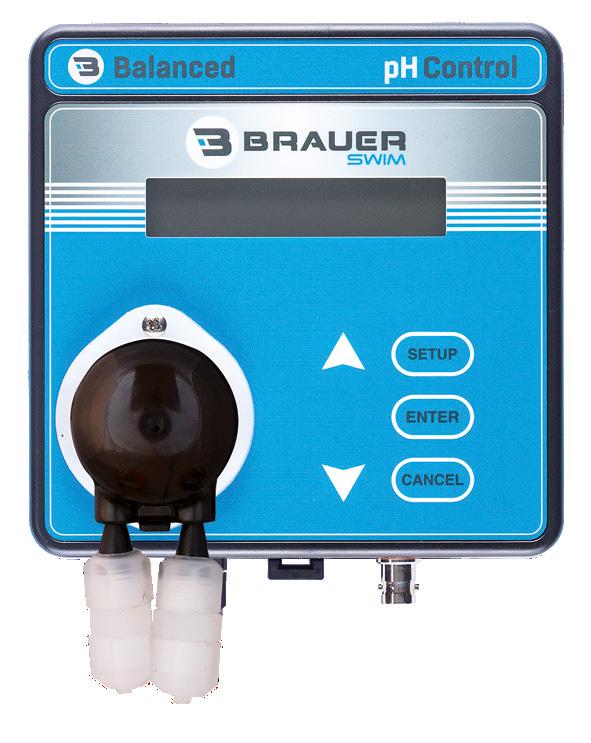
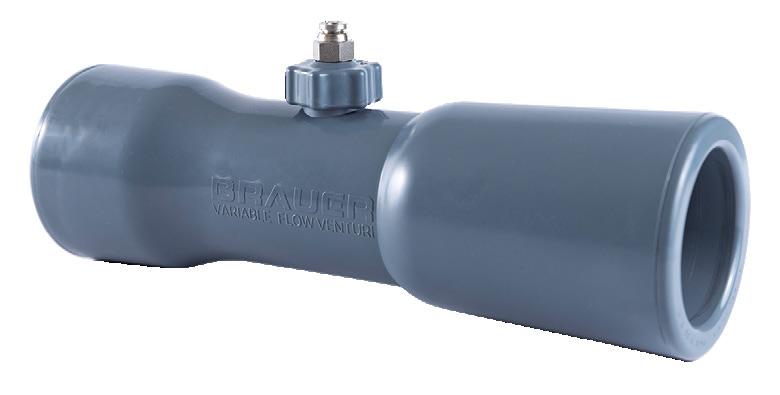
Over the coming editions, SPLASH! will be looking at manufacturing in Australia and New Zealand. We’ll look at the how companies with local facilities are managing to compete with offshore manufacturers, and what are the obstacles and benefits of being Aussie- and Kiwi-made. First up is Fluidra, whose local manufacturing credentials go back more than a quarter-century.
Brendan Butler is among the most knowledgeable people in the Australian pool industry manufacturing sector. His enthusiasm is contagious, and his insights are based on decades of experience.
Butler, Fluidra operations manager for the Southern Hemisphere, is based in the Keysborough manufacturing facility in Victoria – Fluidra’s largest single facility globally.
He started his industry manufacturing journey with Hurlcon back in September 2000, at the 3000 square metre facility at Samantha Court in Knoxfield.
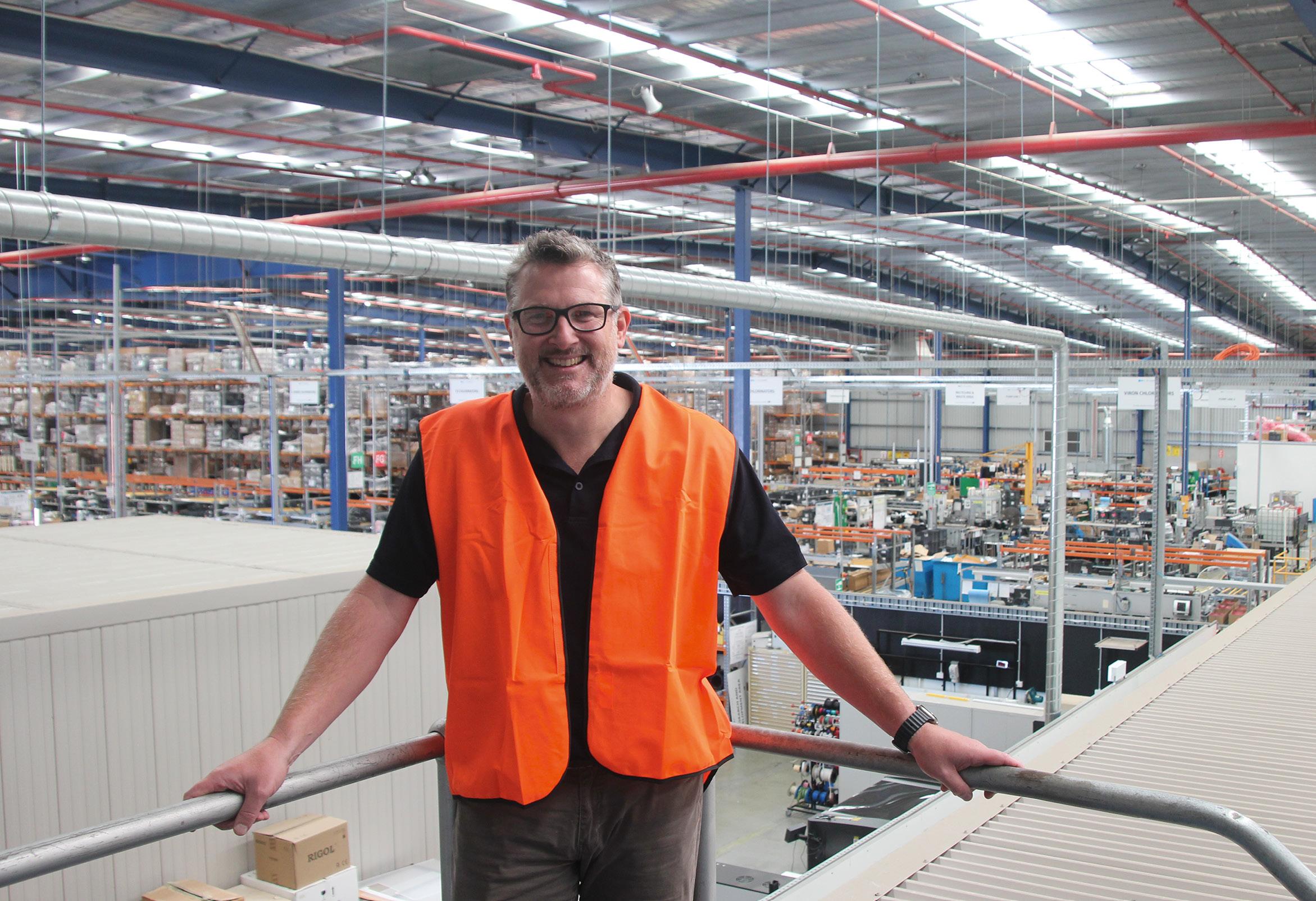
“At that stage, we were manufacturing gas heaters – we’d just invested in a rotational moulder
and had a small sheet metal plant,” he recalls.
Unfortunately, a fire burnt the factory completely to the ground. Luckily, most of their moulding was being done externally at that stage, so the tools weren’t damaged by the fire, but the sheet metal facility, the rotational moulding and everything else was completely destroyed.
They moved to the old Linda electric blanket factory in Noble Park, opening the doors very late in 2000, and were building heat pumps by early January.
“We were trying to get product back into the market to support our customers, because they’d supported us so much during that time,” he says.
The Noble Park facility was much
bigger – 5000 square metres with two facilities side by side.

“It was the only facility that Peter and Alistair could find that actually had enough gas for our rotation moulding requirements, but also the electricity for injection moulding and other things that we had in our in vision,” he says.
Eventually they bought an additional building but it still wasn’t enough space for the expanding business, which by then had begun exporting to the US.
In 2006, Hurlcon was acquired by Fluidra and renamed AstralPool Australia. While Peter Wallace remained at the helm, Brad Weir moved away from the business at this time. Wallace eventually stood down in late 2016, after the move to Keysborough.
By 2016 they’d been at Noble Park for 16 years. It was a residential zone and they were working 24 hours a day, so the neighbours were putting up with noise in the middle of the night as well as constant truck traffic.
The site was also restricted to a standard single driveway for trucks, and with about 20,000 truck movements a year – requiring risky reversing to exit, and restricting the access of larger B-doubles with containers.
A move was needed and they did it in style, going from 9000 square metres of floor space in Noble Park to 20,000 square metres of floor space in Keysborough.
Fluidra built a high tech facility on leased space in southeast Melbourne, a total investment of close to $50 million.
With the completed merger of Fluidra and Zodiac in 2018, the business became a global behemoth holding an enormous product catalogue, and the Australian entity became known as Fluidra Australia.
Sixty per cent of Fluidra’s product range sold into Australia is made in Keysborough. Butler says the only things they sell but don’t make are sand, salt and glass media, robot cleaners under various brands, and heat pumps.
“We made heat pumps in the past back in the old Noble Park facility. We stopped making them at the change of the R22 to be R410 gas, and we’ve been importing heat pumps ever since from different companies.
“Everything at Keysborough is 100 per cent designed, developed and made here locally for the Australian market,” he says.
“The exception is our pressure pump sold under the Zodiac brand – every other product that you’ll see here under the AstralPool brand or the Zodiac brand is made only for the Australian market, designed and developed here locally, so it’s not made anywhere else in the world.”
Those Keysborough-made products include about 70,000 pool pumps per year, 35,000 to 40,000 salt chlorinators per year, and 30,000 cartridge and media filters per year.
“And then there’s obviously a whole bunch of other products,” he says. “We produce about 4.5 million injection moulded components each year here in Keysborough. That number is big, but of course some of the items could be quite small.”
On top of what they make for the Australian market, Keysborough is making pool equipment for a growing export market.
Most exports go to the local region, with New Zealand a large market followed by Vietnam, Thailand, Singapore and even China.
“In fact, a lot of the products we export into China have to have an Australian component,” says Butler. “For example, if it’s got a Chinese motor on the pump, they won’t take it.”
The Australian facility also exports to the Middle East and, even though Fluidra’s head office is in Barcelona, exports salt chlorinators, pool pumps and cartridge filters into Europe.
In total, Fluidra Australia employs between 450 and 500 people depending on the time of the year, covering everyone from finance, sales and service, to manufacturing and logistics.
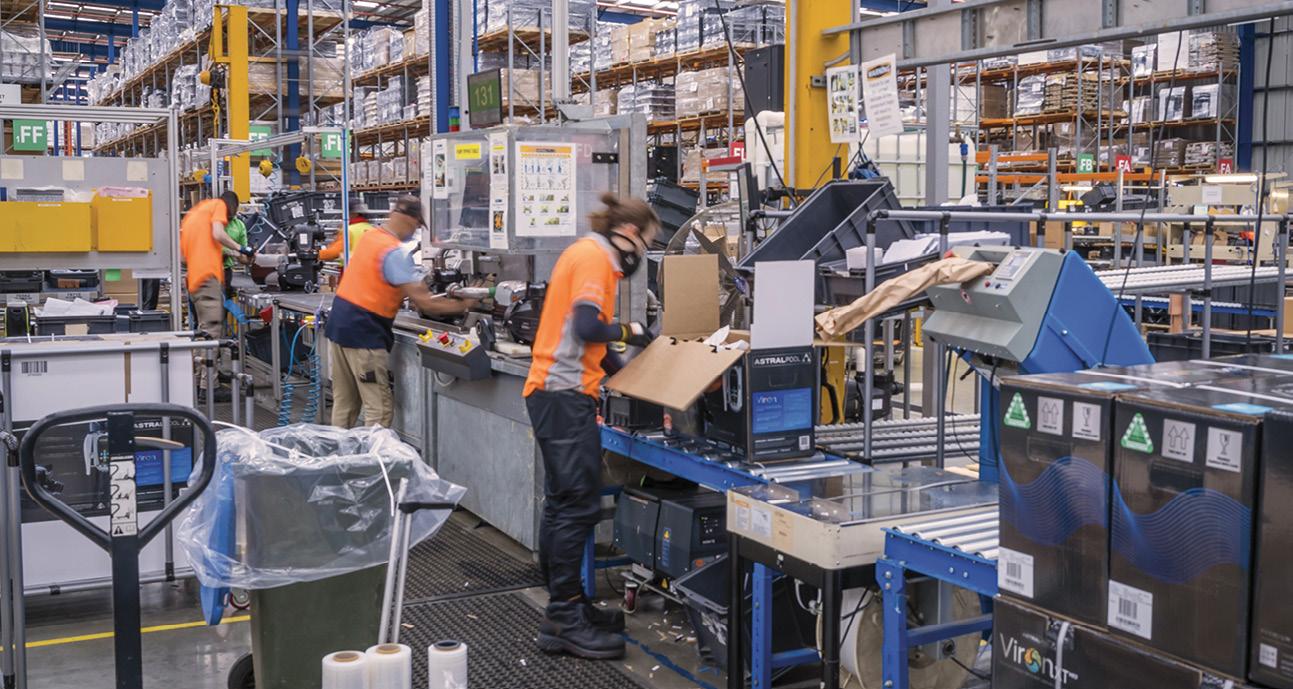
Swimming pool equipment is a very seasonal business, and manufacturing staff ranges from 95 staff up to 130 during different times of the year.
Partly to overcome this seasonality, Fluidra has tried to limit the dependency on skilled labour, in place of unskilled repeatable tasks than can be easily learned by seasonal staff, or staff moving between departments.
One way they have managed this is by creating jigs and “poka-yokes”.
Another way is by investing in systems to make it easier for staff to know where everything is no matter where they are on the factory floor – even coming down to having colour coded hi-vis vests to denote roles.
The aim is to enable staff to quickly learn new tasks, for those tasks to be repeatable, and for mistakes to be minimised if not eliminated.
“We’ve invested heavily in repeatable tasks and getting away from manual tasks that are not repeatable,” says Butler.
He describes the example of their old generation cartridge filter they’d been making for 20 years from four pieces of injection moulded ABS plastic. They would have preferred to use polypropylene, but because of the size of their injection moulding machine, it had to be made in four parts and glued together – and polypropylene couldn’t be successfully glued.
“Each of these filters has two-and-a-half metres of glue joint which has to be manually applied by a skilled operator every day. That’s not repeatable, and if someone’s sick or on leave,
there is always a risk there that you can have inconsistencies,” he says.
The solution came when they invested in new technology, replacing the old 450 tonne injection moulding machine with a new 2200 tonne machine that could form the filter body in a single polypropylene piece.
Similarly, they have moved away from spot welding, which requires a skilled operator, to clenching and other mechanical fastening systems.
Butler believes the investment in machinery and technology has been recouped by savings in the manufacturing process, improved quality reliability and the ability to gear up when required.


“One of the things that was drummed into me from the very start here was to spend money where you need to spend money, but don’t waste it in other areas,” he says.
One way to manage the cost of new technology is to purchase wisely.
“All of our injection moulding machinery comes from China. There are different levels of quality you get out of China, and we’ve gone middle to top quality – it’s typically less than 50 per cent of the cost of getting the machines out of Europe.”
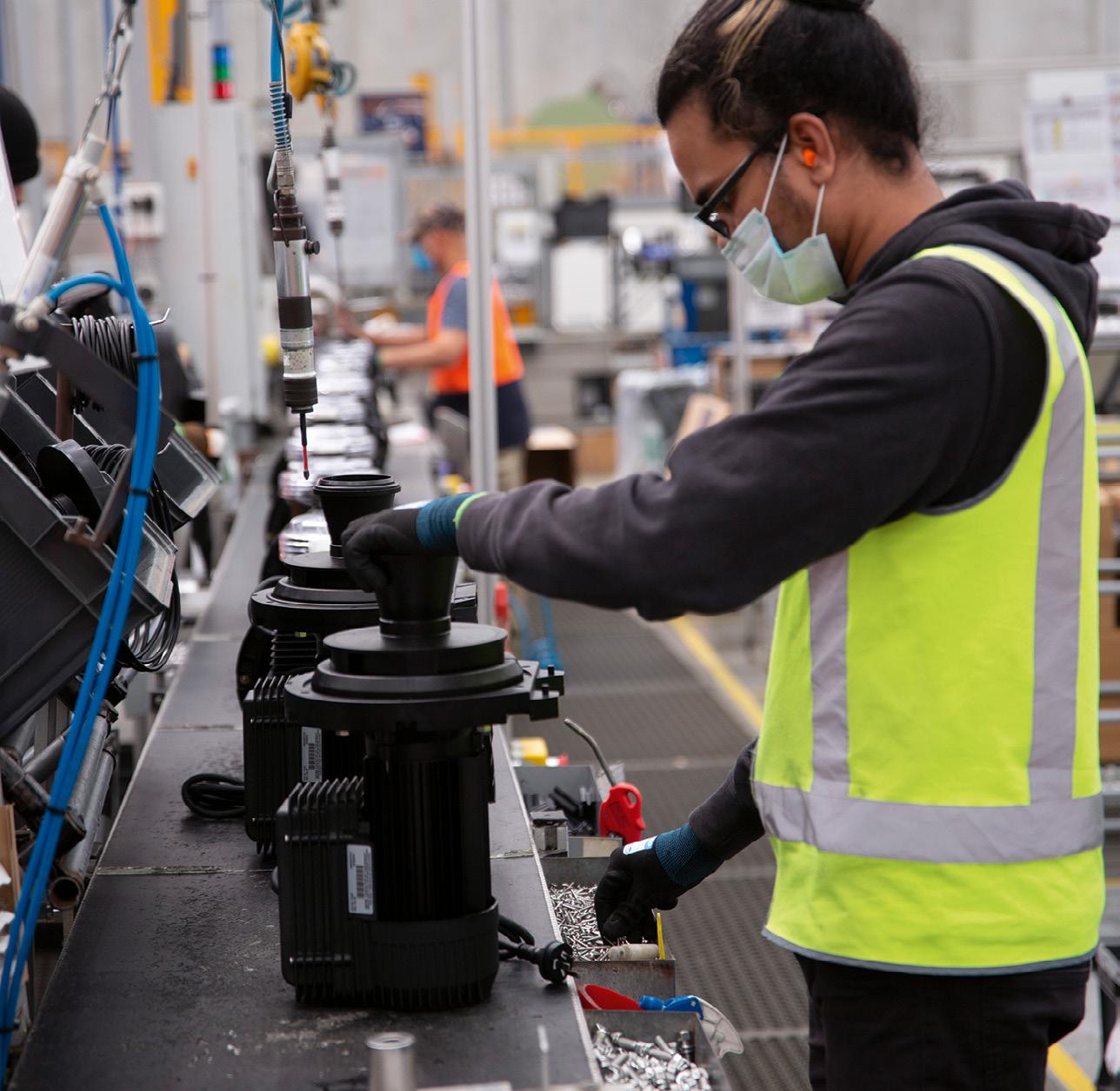
Butler says the added expense of buying European machinery would, if nothing else, make it problematic to upgrade the machines in a timely manner.
After due diligence, they purchased Chen Hsong moulding machines through local supplier Applied Machinery, who they’ve been working with for a long period of time.
These decisions have helped their local manufacturing plant remain competitive with Asian manufacturing.
The advantages of local manufacturing Butler is an enthusiastic advocate for local manufacturing, and is keen to explain the benefits for his business and the industry as a whole.

With his long and very relevant experience, he believes it is still competitive to manufacture in Australia compared to Asia.
“Fluidra and manufacturing in Australia have gone hand-in-hand for more than 25 years,” he says.
He adds that Fluidra maintained a local manufacturing footprint even as Australia as a whole started to go down the path of low cost Asian manufacturing.
“Some others took a risk back then and imported some really high volume, low, low spec, low tolerance components out of those countries,” he says.
But Fluidra held fast, with a foundation of local manufacturing based on vertical integration.
“We weren’t buying components and just assembling – we were making everything. And because we’re making everything we weren’t giving away 20 per cent margin for someone to do an injection moulding and 20 per cent margin for someone to powder coat sheet metal. And because we added value to every step of the chain, we stayed competitive with the likes of China.
“All the products are designed or developed for the Australian market, first and foremost. A major benefit through our vertically integrated manufacturing facility is that we own the full product design, with the complete components manufacturing and finished goods assembly in a single location that is operated directly by Fluidra Australia.
“This allows us to better control the end-to-end manufacturing process, coupled with direct oversight of the quality of the components and finished goods that are produced in Keysborough.”
Manufacturing locally and close to the market also gives them shorter lead times.
“So whether it’s to manufacture or to get it to our distribution centres around Australia, we’re only working in weeks, not in months.”
Additionally it enables them to pivot more quickly when needed, such as during the covid pandemic, and to make some OEM products and small run products to order.
Fluidra sources 25 per cent to 30 per cent of their products and components through local suppliers.
“If you look at some of our local suppliers, we’ve been dealing with them for 20-odd years. Our resins for example. We use roughly 1000 tonnes of plastic resin a year, most of that comes from local suppliers who compound it for us locally, put in additives, UVstabilisers, glass and other bits and pieces.”
Butler says that additionally to the people directly employed a Keysborough, the network extrapolates out to a few thousand by the time they get to the end of the supply chain.
Another benefit of local suppliers is that they can support them with just-in-time supply.
“If we brought everything in from overseas, we’d have to stock two or three months’ worth of inventory – we’d need another factory just to hold all the inventory plus a huge amount of capital to fund it.”
However, he sees the negative effects from the demise of Australian manufacturing in general.
“Whether it’s the car industry or any other industry, it has flow-on effects,” he says.
“All the mechanisms that support those industries: machinery suppliers, people who are selling spare parts, machinery service – they’ve all been impacted.
“So if we go and buy an injection moulding machine, there aren’t six or seven different suppliers in Australia anymore, there’s one or two. And if you want to go and get our torque-controlled nut runners, no one has them in Australia anymore. No one stocks those things that were easy to get when automotive existed.”
While 60 per cent of Fluidra’s products sold into the market are locally made, that leaves 40 per cent that are imported, as well as some components that have to be brought in.
Given the issues with shipping during and post covid, Butler thinks the prevalence of just-in-time supply may need to revert for some importers to hold more inventory.
“One of the things covid taught us was that for the last 50 or 60 years, global shipping has become very, very delicate. We still have huge lead time issues, getting things out of the US – and just getting them internally to a port on the east or the west coast is sometimes just as long as it takes to actually ship the products from the US to here!”
He says while it’s been a challenge, Asia has improved dramatically and Europe is starting to improve as well.
“But covid taught us that global supply chains are very, very stretched. We were somewhat shielded in covid – I could count on two hands the number of times we were actually impacted through our suppliers domestically not being able to support us.
“We probably had to spend a fair bit more on air freight than we would have liked on components and so forth, but that was partly driven by the exponential sales growth we had during covid.
“I think importers are going to have to hold more stock if they want to maintain consistency.”
Fluidra has expanded its supply network since the merger with Zodiac, with distribution centres (DCs) in Keysborough Victoria, Smithfield in Sydney, Willawong in Queensland as well as larger facilities in South Australia and Western Australia. This has led to a different distribution model.
“We used to deliver to those facilities almost on a daily basis. Now we supply those guys at least twice a week, but definitely not on a daily basis – because we hold more stock, we don’t need to supply them as frequently.
“Most of the time, products are either imported directly to the DCs or if it’s a manufactured item, they’ll be manufactured here and then sent to the appropriate Pro Centre.
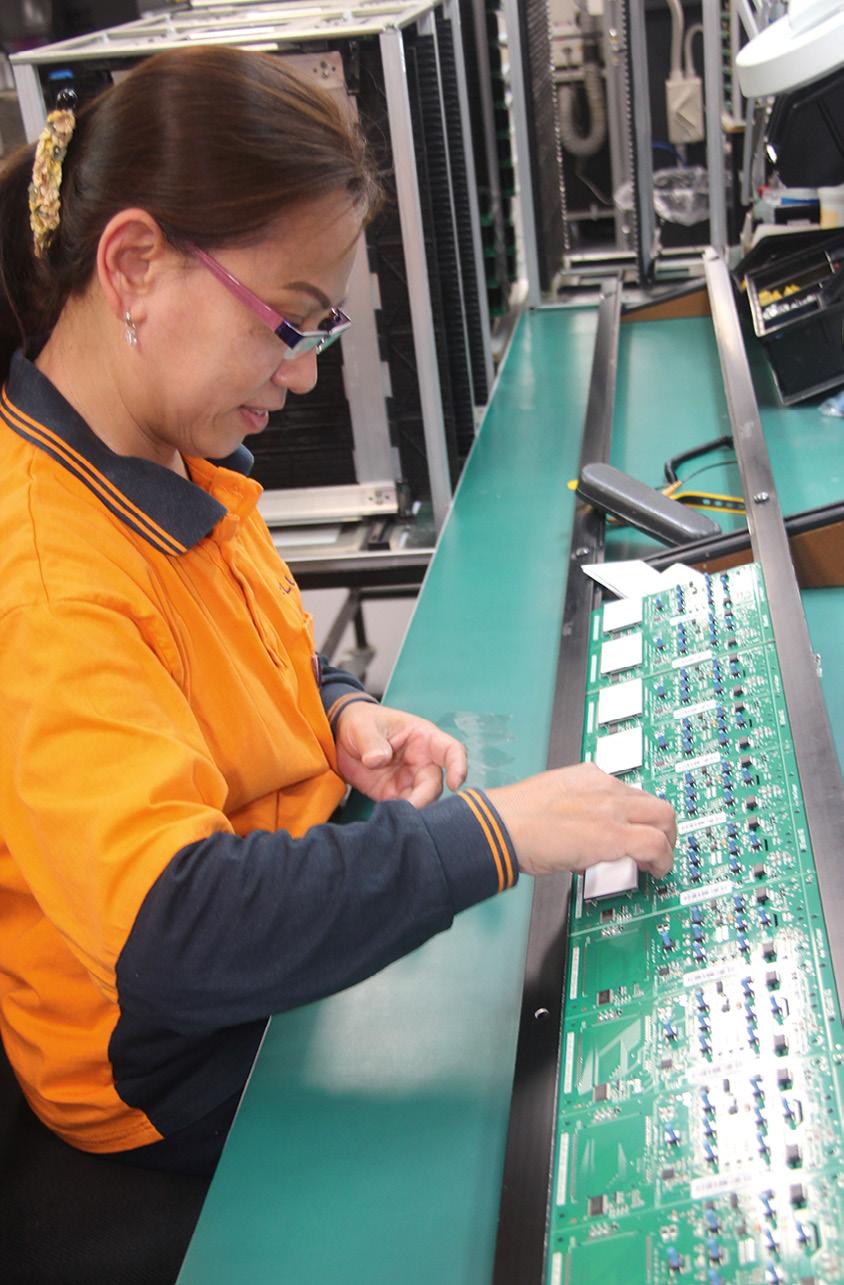
“And that allowed us to keep going where supply and getting products made overseas was really challenging throughout covid.”
For the local supply they are somewhat protected because their manufacturing is very vertically integrated.
“We take raw resin, we turn it into an injection moulded components. We take bars of brass, and we machine them to make inserts that go into injection moulding or into the products themselves. We do our own sheet metal and powder coating internally. We’re trying to do everything we can in-house to eliminate external influences as much as possible.”
As well as issues with covid, the Ukraine invasion and tensions in Europe have exacerbated cost and supply pressures for the entire industry. For example, a very large percentage of the world’s titanium comes out of Russia, so that’s been a real challenge for salt chlorinator production.
Inflation has also caused difficulties, with spending soaring above expectations from only a year before.
Butler says transport was probably one of the biggest issues they faced recently, with 40foot container prices going from $US1500 up to $US10,000 and even reaching as high as $US15,000.
“And that’s all well and good when you could fit hundreds or thousands of SKUs in a container. But if you’re importing big products such as heat pumps or filters, it adds up really quickly,” he says.
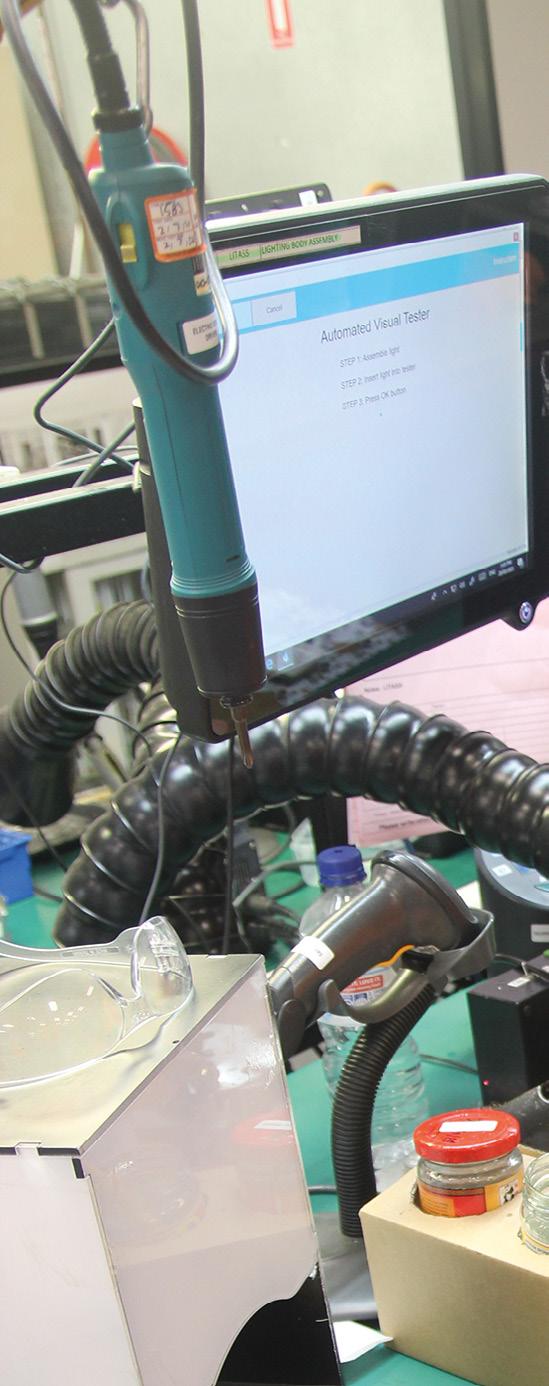
“So freight and a cost pressure on components and raw materials has been a big challenge. It’s normalising now, but not necessarily returning to where it was.
“Freight is starting to normalise coming in from overseas, but in domestic freight the pricing in Australia hasn’t necessarily come down. And it’s still very challenging to get staff, and the trucking industry is in that position as well, struggling to get drivers and so forth.”
He says it is improving, but he doesn’t see an end
to it. Commodity prices are starting to come back, but ruthenium is more problematic.
“Copper, aluminium, resins – they’ve all been moving on the downward trend. Ruthenium, which is the main ingredient in salt chlorinators, has started to decline. But it hasn’t moved since January. It’s the single longest time I can find in the last three years where the price has not moved up or down for that particular commodity.”
The other headwind that all business have been suffering with lately is the labour shortage.
“The past three years have been by far the hardest, from a labour point of view – whether that’s attracting new staff or retaining staff, there’s just been fewer staff available. And it’s not just an industry issue, it’s an Australian issue,” he says.
Over the past 18 months, Fluidra Australia’s People & Culture team under Emma Baldock have been putting together initiatives to help them become an employer of choice, and in the process help them attract and retain staff.
“Flexibility is one of the first things new employees ask about in their interview. And if you don’t offer it, the other person who’s interviewing them will.
“And wages have been a challenge. The federal government’s minimum wage increase last year was 5.2 per cent. I think that’s one of the largest ones I’ve seen in 20 years, and I’d be surprised if it’s not the same sort of numbering this year.
“But are wages going up because of inflation or because there’s just not enough people for jobs? The reality is most people in Australia could leave their job today and go to another job and get more money. That’s just the reality.”
Butler says while recruiting has been a challenge, Fluidra have a very long-term base
of employees at Keysborough, with an average tenure in the factory of seven or eight years – with the management also having been in place for significant periods of time.
“Over the past few years we’ve lost staff as everyone has, but we’ve worked very hard to keep our staff and we’ve been incredibly grateful that the longevity of our staff has made life somewhat less complicated,” he says.
The most recent addition to the Keysborough plant is the printed circuit board assembly (PCBA) facility. This shores up their vertical manufacturing strategy by making their own circuit boards assemblies which play a crucial role in pretty much every piece of equipment.

The ability to make their own circuit board assemblies follows their acquisition of local PCB producer Fabtronics in 2019.
“Fabtronics had been one of our most important and largest suppliers and business partners for a very long time, from back in the early 2000s. For us they were two things: they were our supplier of PCBs, printed circuit boards, but they were also our main support in R&D.
“Historically, we would do a lot of the R&D here ourselves – all the mechanical and the functional design development. But Fabtronics would write the code and so forth from an electronics point of view.”
In 2022, they relocated Fabtronics from Braeside into a purpose-built 1000-square metre staticcontrolled, temperature-controlled, humiditycontrolled cleanroom at Keysborough.
“It was it was a very large investment but it brought a fair bit of margin back into our products, when we’ve been under huge pressure as everyone has been over the past few years. So it’s helped us control costs during a very trying time.
Now they buy “blank” PCBs from China, then put them through surface-mount machines to load resistors, transistors, LEDs and other components on them. Some big components need to be manually loaded, including big capacitors and transformers.
After assembly, they load the firmware and carry out extensive testing, before installing them on the assembly line.
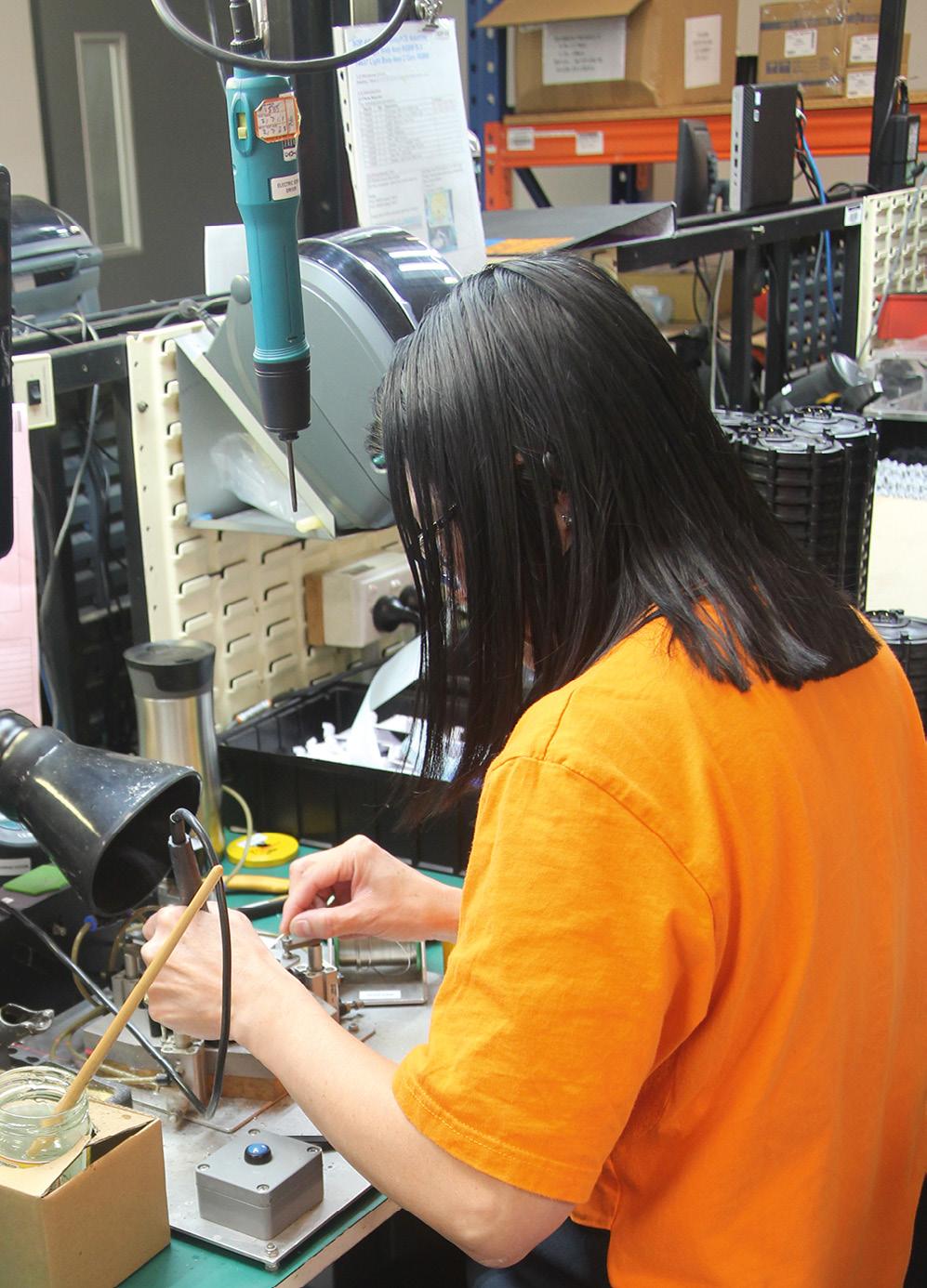
“If you think of a salt chlorinator, it’s the user panel, it’s the power board. If you think of a gas heater, it’s the main user panel and brain. If you think about a Connect-10 controller it’s the main board; inside a variable speed pump, it’s the main drive controller,” says Butler.
“So pretty much anything we make here has got a printed circuit board in it, we’re making it in-house.”
With purchasing the components, particularly the semiconductors, they need to work 18 to 24 months in advance.
“Once you place the order, it’s in the system and it gets delivered. So you try and use a crystal ball to see a long way in advance. Our procurement and the purchasing departments have been working their absolute backsides off over the past couple of years.”
They also make some PCBAs for external companies, including major European suppliers in the HVAC industry who are not big enough in this market to set up their own facility.
Butler says one benefit of that external work is the exposure to new technologies, and bringing in R&D from other industries which has positively influenced their approach to some products, including Halo.
Butler says that while Fluidra has been manufacturing in Australia for between 25 and 30 years, they have been investing even more over the past five years.
“I’m not saying more than ever – but more than in a very long time. We’ve invested very heavily and we’ve got a state-of-the-art facility that is second-to-none.
“In fact, it’s the largest single facility that Fluidra owns globally. It’s bigger than Spain, as far as a single plant goes, and we’re one of the only plants in the group that manufactures very vertically.”
He says that each Fluidra factory in Spain is dedicated to a specific task: one factory does injection moulding, one factory does lights, one factory builds pumps, one factory does stainless steel.

“We’re unique here, and I think that set us up for a long path into the future.”
While the factory is busy, there is scope to ramp up capacity as demand increases.
“We work day shift in most areas and three shifts in injection moulding. So we have a huge amount of capacity still left within the business to ramp up more shifts,” he says.
Another factor that suggests longevity is Fluidra’s lean process improvement. Globally, Fluidra is trying to remove 100 million Euros of cost from the business, largely through simplification. This includes SKU (stock keeping unit) rationalisation, smarter procurement and product teardowns, with the aim of making their products simpler and cheaper to assemble.
Locally, Butler and his team have been working on getting the manufacturing process as smooth, lean and responsive as possible.
Three improvement processes he is passionate about are 5S, kaizen and daily progress meetings, all of which are starting to become second nature within the factory.
5S is about taking everything away from the area you don’t necessarily need. Kaizen is a Japanese strategy where employees at all levels of a company work together proactively to achieve regular,
incremental improvements to the manufacturing process, combining the collective talents to create a powerful engine for improvement.
“The guys have really got on board with this way of thinking and it’s helped improve our efficiencies dramatically. And we recognise and reward the staff who are helping us improve the business. “It also increases the quality of what we’re making. So there’s been huge investments predominantly in people getting the level of training and skill in their particular area.”
As mentioned above, due to the seasonal aspects of the staffing, many temp staff are often used. This means people aren’t always working in the same area, so Fluidra has worked on standardising processes to help with moving from one area to another.
“They need to have some sort of familiarisation,” he says.
“So, you know, all their cleaning boards are green, and then you can see them wherever you go. There are shadow boards for the tools, always in a set location. Even the spots for the bins are taped out. So it creates calmness in chaos. That’s been heavily adopted.
“As we’re starting to get all these things brought online, it’s making huge improvements in the factory.”
The other single biggest investment they’ve made in Keysborough is quality. Back in 2016 they only had one person running the whole quality department. Now they have eight people, led by Anita Bejic.
As a sign of how successful the facility is, Fluidra is looking at bringing more products currently made overseas back to be manufactured in Australia.

“All that investment and development bodes well for a long and prosperous future for Fluidra in Australia,” says Butler. n
SPLASH! will be continuing this series on local manufacturing over the next several editions. If you wish to contribute, please contact chrismaher@intermedia.com.au.
ABOVE This filter is made in four parts because of the limitations of the moulding machine at the time it was designed
BELOW:Following
investment in a larger injection moulding machine, the newer filter can be made in one piece, saving time and reducing the risk of errors

In the 2022 SPASA Australia National Pool & Spa Awards of Excellence, prestige Victorian pool builder Aloha Pools won several awards including Commercial Pool over $1 million, Commercial Pool under $1 million, Best Concrete Pool Builder and Business of the Year.
Aloha Pools is a third generation family pool construction business, holding a leading place in the Victorian market for 55 years.
The Fell family’s love affair with swimming pools started half a century ago, when Lindsay Fell’s general landscape construction business morphed into Aloha Pools.
Then in the 1970s, Lindsay passed the family business onto his son, Greg. Under the leadership of its second generation, Aloha redirected to face a coming change in the industry.
Greg Fell saw that swimming pools were not going to be restricted to the privileged few – the market was opening to the wider community. So, they focused specifically on swimming pool and spa construction, honing skills in every aspect of the construction process for the next 48 years.
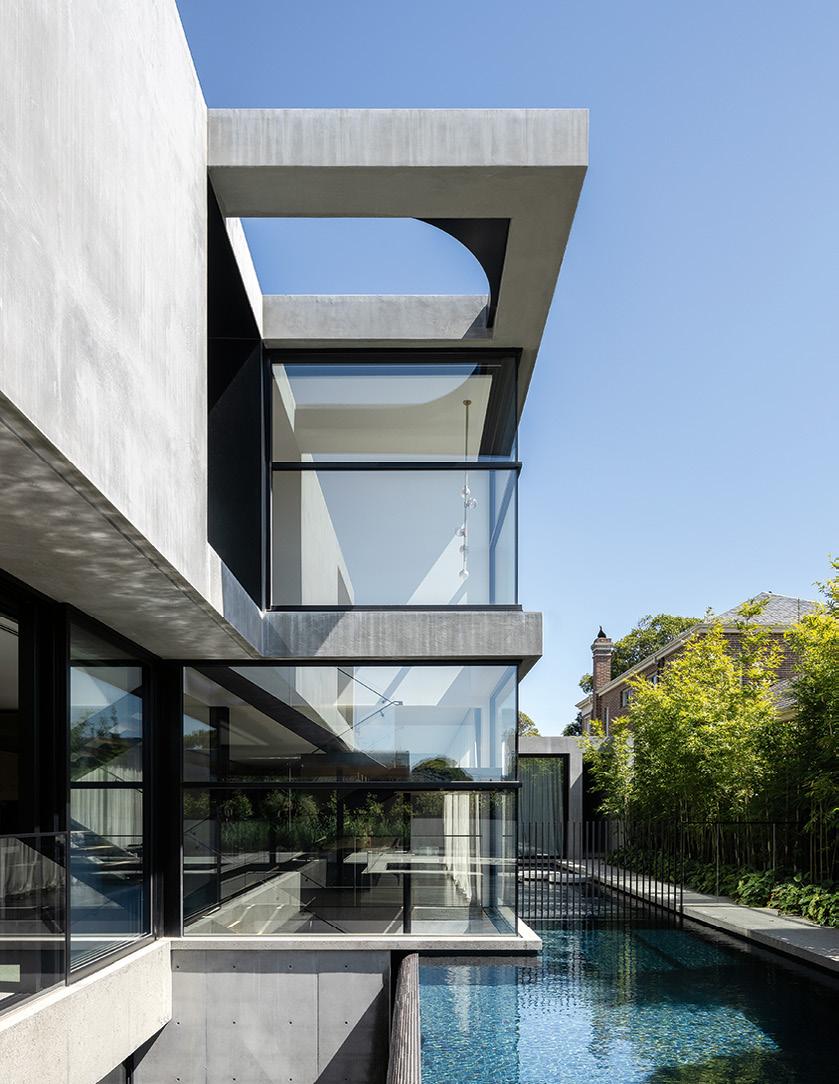

When Greg’s son Travis joined the business, Aloha added its third generation of pool builders.
Travis accelerated the growth of the business and enabled the Aloha Group to grow into a fully integrated construction conglomerate capable of delivering on every component of high end residential and commercial construction. Travis’
determination has allowed the Aloha Group of businesses to grow into a team of more than 80 design and construction professionals, all employed in-house.
Travis Fell says that the experience of three generations makes a difference. “Experience comes with time. It comes from hands-on learning and is refined by tried and tested methods. At Aloha Pools, we have more than 55 years of experience – and the design and construction of more than 5200 pools to draw from.
“This enables us to problem-solve and create solutions for complexities that arise. Experience tells us what works and what doesn’t. This knowledge has been passed down through the generations and shared with our team.”
He says that their designers, engineers and tradespeople all understand the importance of precision and quality.


“They have the ability to think innovatively to solve complex problems, work harmoniously and pay particular attention to the details.”
The industry seems to agree, with Aloha picking up more than 250 awards, making them the country’s most awarded pool builder.
Prominent landscape designer and author, Paul Bangay, also agrees. He has worked with Aloha for more than 20 years, and he says the pool builder is the only pool company he recommends to his high end clients.
ABOVE: This pool was suspended over the main entryway, requiring creative design, engineering and planning. The result is not just a spectacular pool, but a three-meter acrylic viewing window in its floor, filling the home’s entry with shimmering light

LEFT: The pool lounges are not only aesthetically appealing, they also offer an inviting relaxation point for hotel guests. The pool and spa are separate but appear as a seamless body of water
No1: This residence is celebrated for cohesively connecting the indoor-outdoor aesthetic. Water movement surrounds the entire three-level house with the incorporation of a cascading waterfall feature, integrating a fluid connection of spaces with light and shadow play
No2: This amazing project at the Marriot won the 2022 Commercial Pool over $1,000,000 category. The curved infinity edge pool appears to be floating amongst the sky and presents 270-degree sweeping views out towards the Bolte Bridge, Docklands and LaTrobe Street. A beautiful feature for the Marriot Hotel Docklands this pool has already become a destination for travellers within its own right

Hawthorn Park is one of only a handful a pools in the world that is suspended in the air, anchored between two high-rises. Aloha Pools worked tightly with the building project team to overcome factors such as acoustic isolation, lateral restraints, the expected deflection of the supporting beams under the load of the water, the weight of the structure, wind engineering, the integrity of the water-proofing liner and exact schematics due to the pre-ordering of acrylic panels and stainless steel systems
“They have proven to be reliable and efficient over these past two decades. As designers we only recommend the best-of-the-best contractors and Aloha is one of these.”
Travis Fell says Aloha is privileged to be able to do the level of work they do, to push boundaries and to aim for excellence in each and every project.
“Our main motivation remains the happiness and contentment of our clients—a smile, a handshake, a word of thanks. That’s what inspires us,” he says.
“We strive to perfect the balance between form and function on each of our projects. The aesthetics of the form must be supported by precision details in function.
“Achieving this balance involves understanding every single element of the craft. Our team gives full consideration to every project so that no element is overlooked. And by using tried and tested methods learned over decades, we can assure quality that will not fade.” n
Contact: www.alohapools.com.au
LEFT: Located in a semi-rural location in Melbourne’s east this luxury resort style pool, pond and spa was built with modern grandeur in mind. The swimming pool wraps itself alongside the home culminating in an impressive overflowing edge with a large acrylic viewing panel

RIGHT: Curatorial House Pool and Spa blurs the boundaries between art and interiors. With immaculate construction detailing, elegant playful materials, a calming colour palette and full-length spill-over acrylic panels resulted in a stunning reflective sculpture-like-structure where art is in sync with life
BELOW: Located in leafy Alphington, this impressive rooftop pool was designed to create the illusion of floating above the building as an impressive architectural element used to draw the city skyline into the development


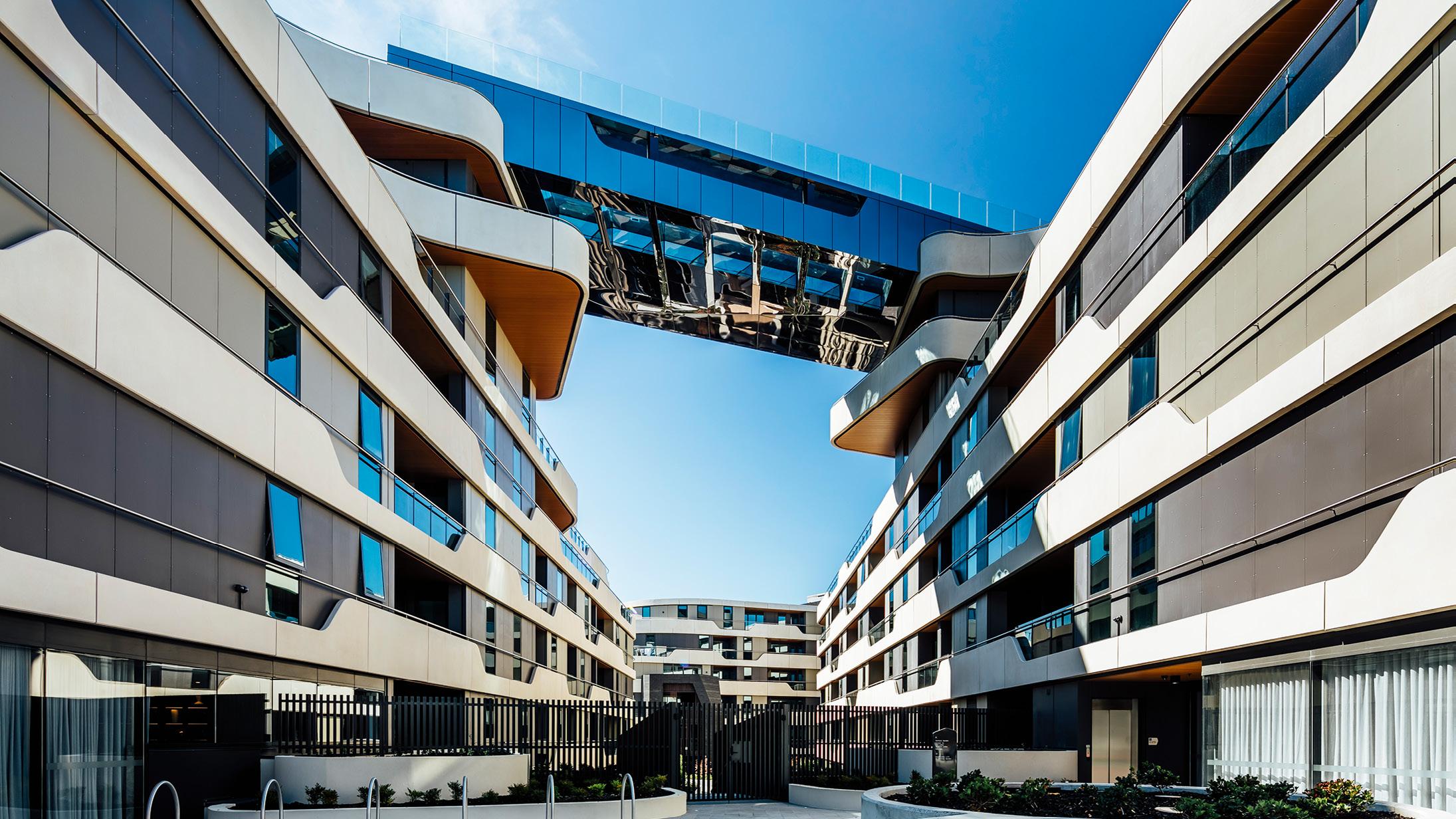
Where rustic industrial meets polished sophistication, Victoria & Vine pays homage to New York City’s meat-packing districts best hotels. Residents enjoy five-star hotel-like amenities with approximately 4500 sqm of secluded outdoor space. The luxury Sky Club Pool was designed with glass mosaic tiles and sunken lounges that create the illusion of floating above the water, for a secluded space of total relaxation and pleasure.
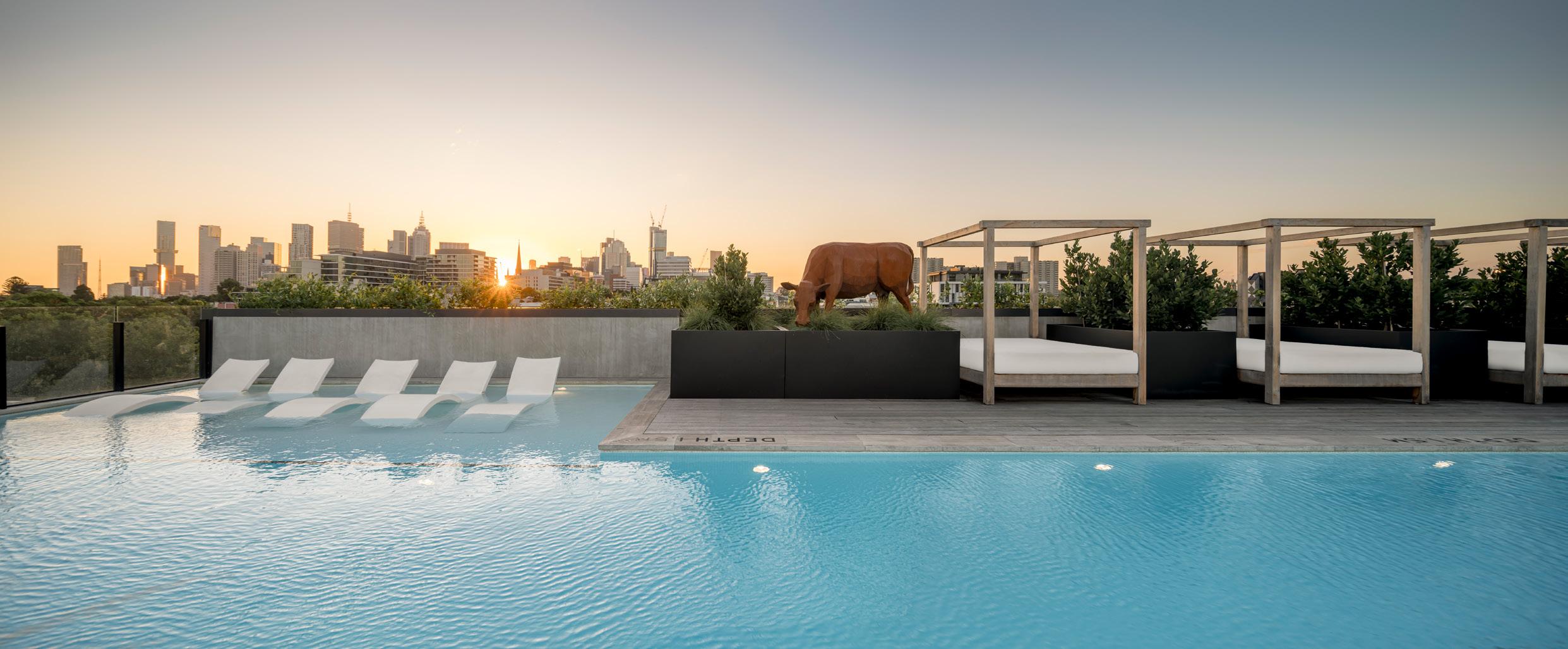

The program is based on the following units of competency;
• SISCAQU001 - Test pool water quality
The new Commercial Pool Technician Program (CPT) is proudly delivered by IRLearning and is endorsed by the peak swimming pool and spa industry body, SPASA Australia.
The Program meets the various requirements nationally for commercial pool technicians and those charged with maintaining lower risk levelled aquatic centres.

• SISCAQU003 - Maintain aquatic facility plant and equipment
• SISCAQU004 - Develop and implement pool water maintenance procedures
• SISCAQU005 - Develop and implement aquatic facility maintenance procedures
• BSBRSK401 - Identify risk and apply risk management processes From $380*


*Visit www.irlearning.com to check state and territory requirements.
IRLearning also offers the full Certificate III and Certificate IV in Swimming Pool and Spa Service - as in some states (Victoria and Queensland) for higher risk pools, operators require the full qualification.
Wherever you want to go, IRLearning will help you get there!


Qualified
and receive the Commercial Pool Technician Certificate.
Flexible delivery allows students to complete the CPT program via correspondence or face to face instruction (where offered).
The program covers:
• Correct water testing procedures and recording results
• Water quality issues and corrective actions
• Microbiological testing procedures and parameters of safe operation.
• Responses to various bather incidents – faecal and non-faecal
• Disinfection requirements for commercial operations
• Maintenance requirements of plant and equipment – including maintenance log completion and designing site-specific maintenance checklists and plans
• Troubleshooting plant and equipment issues – initiating appropriate corrective actions
• Record keeping for site-specific pool water testing and maintenance procedures
• Having site-specific identification and management process to eliminate or minimise risk

Inclusion
In April, Swimming Australia launched the Deadly Little Dolphins program at an event on the Gold Coast. The program is a national call to action to ensure Aboriginal and Torres Strait Islander children have access to learn to swim to improve their swimming and water safety skills.
First Nation Australians are disproportionately represented in drowning statistics, accounting for five per cent of all drownings, but are only three per cent of the population. Swimming Australia will partner with schools, swim schools, swimming pool operators, councils and community groups to deliver Deadly Little Dolphins programs across Australia.
Additionally, as Brisbane will be hosting the Olympics in 2032, Swimming Australia has taken the opportunity to implement a structured pathway to deliver the next generation’s Aboriginal and Torres Strait Islander sporting icon in Australia’s highest profile Olympic and Paralympic sport.
Eugenie Buckley, Swimming Australia CEO, says the program is specifically targeted at Aboriginal and Torres Strait Islanders, and has been designed by communities for communities to start to address some of the drowning rates amongst Aboriginal Torres Strait Islander communities.
“This is also a really critical first step in our pathway that we’ve got to our home Olympics and Paralympics in 2032. So we’re delighted to formally announce Deadly Little Dolphins,” she says.
Cameron Costello, Legacy Impact committee member and Quandamooka man, says that First Nations people have been practicing water safety and undertaking traditional games in water for tens of thousands of years.
“So it’s really important and a great honour to be involved in helping roll out this program which is about safety and access for First Nations people to the Deadly Little Dolphins swim programs, and also to see a pod of First Nations Dolphins carry through the 2032 games.”
Bianca Crisp is a First Nations Dolphins swimmer and proud Wiradjuri woman.
“My family is from Cowra down in New South Wales, but I was born on the Gold Coast and I’ve lived here my whole life. I think that Deadly Little Dolphins could really instil some grassroot beginnings for a lot of young kids I hope that I can be an inspiration to other young athletes and First Nations athletes coming through,” she says.
“If we had more Aboriginal and Torres Strait Islander athletes at Brisbane 2032 that would be amazing and a very proud moment. Making a team is a really proud moment for me and my culture and my family. It’s a really an important part of my life – growing up on the Gold Coast, but being disconnected from my culture and my family, through my journey I’ve just tried to reconnect as much as I can.

“I’m just so proud to be here. I think the Deadly Little Dolphins program is just so exciting and amazing.”
Contact: www.swimming.org.au
Derek Harbison of renewable energy consultants Negawatt Projects is organising two hypotheticals – one in Melbourne and one in Sydney – to discuss the premise of building a net zero aquatic centre.
The presenters will work through what that involves in
relation to their particular disciplines and experience. The information from each session will build into the final session, where the architects and engineers will flesh out what a centre like this will look like and what sort of energy performance it will have.
Aquatic centresThe fictitious regional town of Pax has committed to building a new aquatic centre. Pax has a population of 60,000 people and the new Splash Aquatic Centre will be the hub of the town. The pool committee in the town has committed to building the most energy efficient aquatic centre in Australia. In this event, the hypothetical Splash Aquatic Centre will be designed in one day, with input from council staff, centre managers, engineers and architects working at the cutting edge of these centres in Australia, NZ and the UK.
Information from the event will be used to produce a comprehensive guide for councils, engineers and architects who are planning to build high performing aquatic centres. The event is divided into four sessions which feed into the final design.
Guest presenters are leading experts in their field from Australia, New Zealand and England, including:
• Sarah Bond, Climate Action Lead, Sustainable Environment and Facilities, Yarra Ranges Council
• Paul Elshaug, Recreation Planner, Surf Coast Shire
• Sean Keown, Senior Climate and Sustainability Officer, Surf Coast Shire
• Barry Harrison, General Manager Aquatic Facilities, WynActive
• Cameron Giles, Swim School, Sales and Services Manager, WynActive
• Alek Olszeski, Manager, Aquatic Industry Services, Life Saving Victoria
• Stephen Platt, Engineering Lead for the St Sidwell’s Aquatic Centre, Arup Manchester UK (TBC)
• Nick Yannakis, Technical Director and Business Director of Aquatics, BECA
• Alan Pears AM, Senior Industry Fellow at RMIT, Fellow University of Melbourne
• Tammy Beck, Executive Director, Williams Ross Architects
• Stephen Maxwell, Director, Williams Ross Architects
• Michael Cook, Principal, Hunt Architects, Sydney
• Sean Keown, Senior Climate and Sustainability Officer, Surf Coast Shire
• Paul Elshaug, Recreation Planner, Surf Coast Shire
• Barry Harrison, General Manager Aquatic Facilities, WynActive

• Rick Edwards, Founder and Director, Environmental Technology Solutions
• Andy Marlow Director, Envirotecture and Passivhaus Design & Construct
• Simon Duck, Senior Manager Aquatics and Recreation, Inner West Council
• Zak Irfan, Technical Lead, Hunt Architects, Sydney Wednesday July 5, 10am to 4pm, The Independent Theatre, North Sydney https://events.humanitix.com/aquatic-centrehypothetical-sydney
Friday July 7, 10am to 4pm, Ivanhoe Girls Grammar School, Melbourne https://events.humanitix.com/aquatic-centrehypothetical-melbourne
More than 250 attendees from swim schools across the country gathered at Glenelg’s Stamford Grand to celebrate the Australian Swim Schools national excellence awards.
Hosted by the Australian Swim Schools Association (ASSA), the awards recognise the outstanding achievements of ASSA member swim schools across nine categories including inclusivity, sustainability, growth and talent.
The awards also saw four recipients inducted into the ASSA Hall of Fame for outstanding lifelong contribution to the industry. John and Barbara Carew were inducted into the Hall of Fame with a Pioneer award for their work in grassroots through to high performance swimming in Queensland. Barbara continues to teach at the age of 81 and has not missed a single swim term in 50 years, while their son David has taken over the running of John Carew Swim School in Indooroopilly, Queensland.
Upon accepting the award on behalf of herself and late husband John, Barbara admitted to being “utterly shocked” and left “speechless” for the first time in her life.
Geoff and Debbie Gill were also inducted into ASSA’s Hall of Fame with an award for outstanding contribution to the industry in recognition of their role in launching Geelong’s most prominent swim school.
Other notable award winners for the night included Rebecca Ross who received the Emerging Talent Award in recognition of her “lead from behind” approach which has seen the swim
Conferences
school achieve a record number of enrolments.
Parafield Gardens Swim School (SA) received the Inclusive Swimming Award for its Angelfish program – designed to teach children with physical, developmental or behavioural difficulties; and its Women’s Afghan swimming program – one of South Australia’s only Muslim Women’s learn to swim programs, dedicated to teaching vital swimming skills to the growing refugee community.
“The strength of this year’s nominations is a testament to the amazing work of our member schools across all categories, and is indicative of the continual improvement and maturity of our industry,” said ASSA general manager, Emily McNeill.
The full list of award recipients is as follows:
Inclusive Swimming Award – Parafield Gardens Swim School (SA)
Safer Swimming Award – Berrydale Swim School (VIC)
Community Service Award – Blue Dolphin Swim School (SA)
Outstanding Growth Award – Little Snappers Swim School (QLD)
Emerging Talent Award – Rebecca Ross (WA)
International Swim School Award – D Swim Academy (Malaysia)
Sustainability Award – SA Aquatic & Leisure Centre AND Paul Sadler Carrum Downs & Paul Sadler Swimland Westgate (SA & VIC)
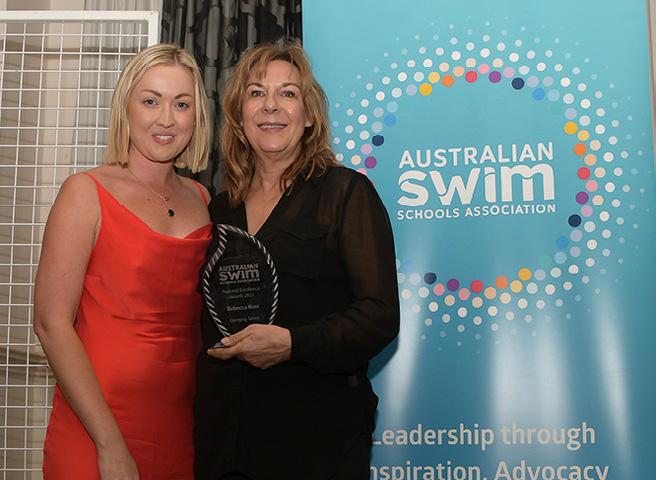
Swim School Award – Swim ARCademy (WA)
The awards ceremony coincided with ASSA’s annual national conference which had more than 350 delegates from across the nation coming together to discuss strategy, innovation and sustainability.
Following a covid-led hiatus, the New South Wales Country Pool Managers Conference (CPMC) is back up and running.
The next event will be held on Wednesday May 17 and Thursday May 18, 2023, at the Goulburn Workers Club.
The conference will include a visit to Goulburn Aquatic Centre; a presentation from NSW Health Department, senior policy advisor in the water unit, Leslie Jarvis, on the update of Public Swimming Pools & Spas
Advisory Document; a presentation from Stephen Sutton on changes to superannuation; Joel Nicholson presenting on microbiological testing; and Snr Constable Raymond discussing how to deal with the rise in antisocial behaviour.
The conference will also include a networking afternoon of either golf or bowls on the Wednesday, and a dinner on the Thursday night.
For more information please contact Kerry Lynch at kandmlynch@ optusnet.com.au or 0422 295 030.
Fluidra has continued their support of ASSA’s SaferWater Warriors. General manager Emily McNeill says Fluidra enables ASSA to spread their vital messages far and wide in an effort to reduce the number of incidents in and around the water. “We couldn’t continue doing the work we do without this support.”
An estimated 4.7 million children under 14 live in Australia, and Austswim aims for each and every one to be taught to swim. Austswim has trained more than 385,000 swim teachers over its 43 years of operation to aid that aim. The organisation has now partnered with Waterlink to work together to provide insights and opportunities on delivering a safe and comfortable environment for patrons to enjoy the use of commercial pools for pleasure, exercise and education.
Aquatic communities and businesses across Australia have helped fund lifesaving swimming lessons for up to 40 families across Australia as a result of Swim Coaches & Teachers Australia’s fundraising project Swim It Forward. The ground breaking project reached $50,000 in donations – the halfway mark to the total goal of $100,000, with 100 percent of collected donations being allocated toward funded lessons for families in need.
The amusement rides and devices committee (F24) of international standards organisation ASTM International has approved a new standard that will be used to collect gravitational force data for waterslides. The new standard (to be published as F3493) focuses on using humans fitted with measuring instruments to generate the G-force data.
“The new standard will be useful to designers as a tool for collecting and measuring accelerations on a waterslide to validate their calculations as they pertain to G-forces,” says ASTM member Andreas Tanzer. “This can also be globally used by inspectors and third party inspection agencies that validate rides and use data collected to ensure it meets existing water slide standards that have acceleration limits.”
Tanzer notes that the new standard will ensure consistent measurement of forces on a rider and removes interpretation of results based on different methods that are inconsistent with each other. The standard will measure forces that are actually felt by a rider, which directly relate to the maximum allowable forces prescribed in ASTM’s standard on classification, design, manufacture, construction and operation of water slide systems (F2376).
All interested parties are invited to join in the future development of F3493.
Contact: www.astm.org
Arihant’s Blizzard has won the Best Innovative Water Slide award at the IAAPI Exhibition 2023.
Blizzard waterslide is a proprietary attraction taking its inspiration from the Yin-Yang. It has received several accolades for being India’s first compound motion slide.
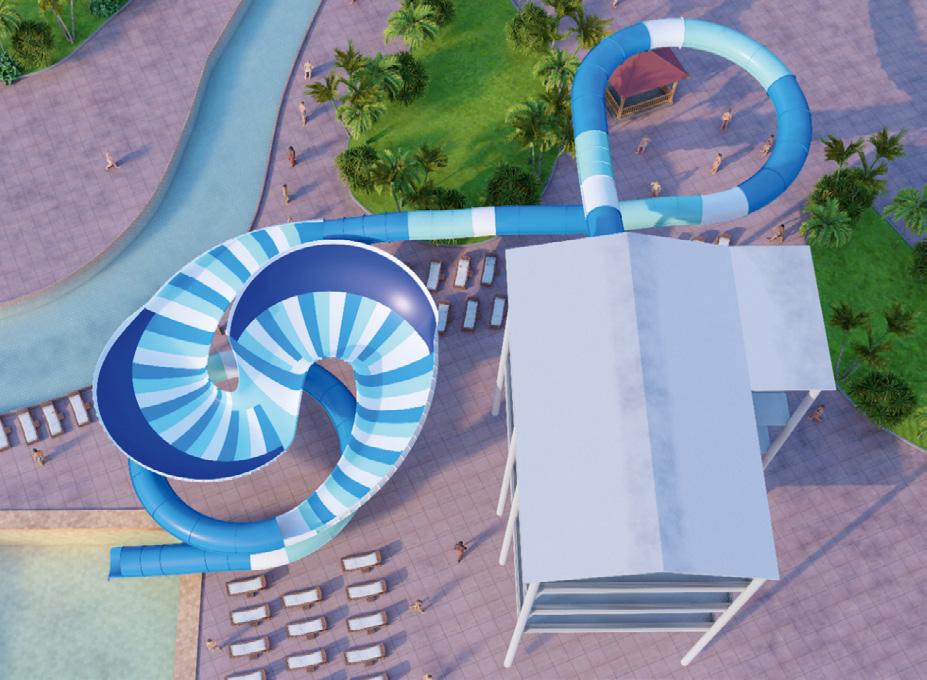
Neha Jain says the award recognises the innovative design, engineering, and manufacturing that went into creating the Blizzard.
“It took our team of experts several months of research and development, and testing, to develop the product,” Jain says.
“We take pride in our products and strive to ensure that they are of the highest quality in every aspect to provide our customers with an unmatched experience. We look forward to continuing to revolutionise the waterslide industry with our innovative solutions.”

After 55 years in operation and more than 11.5 million visitors passing through its gates, Sydney’s Ashfield Aquatic Centre closed its doors in 2018 to undertake the necessary investigations and preparatory work required as part of a multi-million-dollar redevelopment.
Rather than funding a short-term strategy to patch up the dilapidated centre, the plan was to future-proof the facility for many generations. Part of the extensive renovation included an impressive piece of technology for the outdoor pool that would allow the water level to be adjusted depending on the activity.
Known as a movable floor, the sophisticated Akvo Spiralifts system can be raised and lowered on demand, transforming the centre’s outdoor program pool into a multipurpose aquatic space.
“The commissioning of the floor was organised in early 2020 after the key planning phases for

Ashfield Aquatic Centre in conjunction with Inner West Council’s aquatics and planning team,” explains Ashfield Aquatic Centre operations team leader, Sebastian Pregelj.
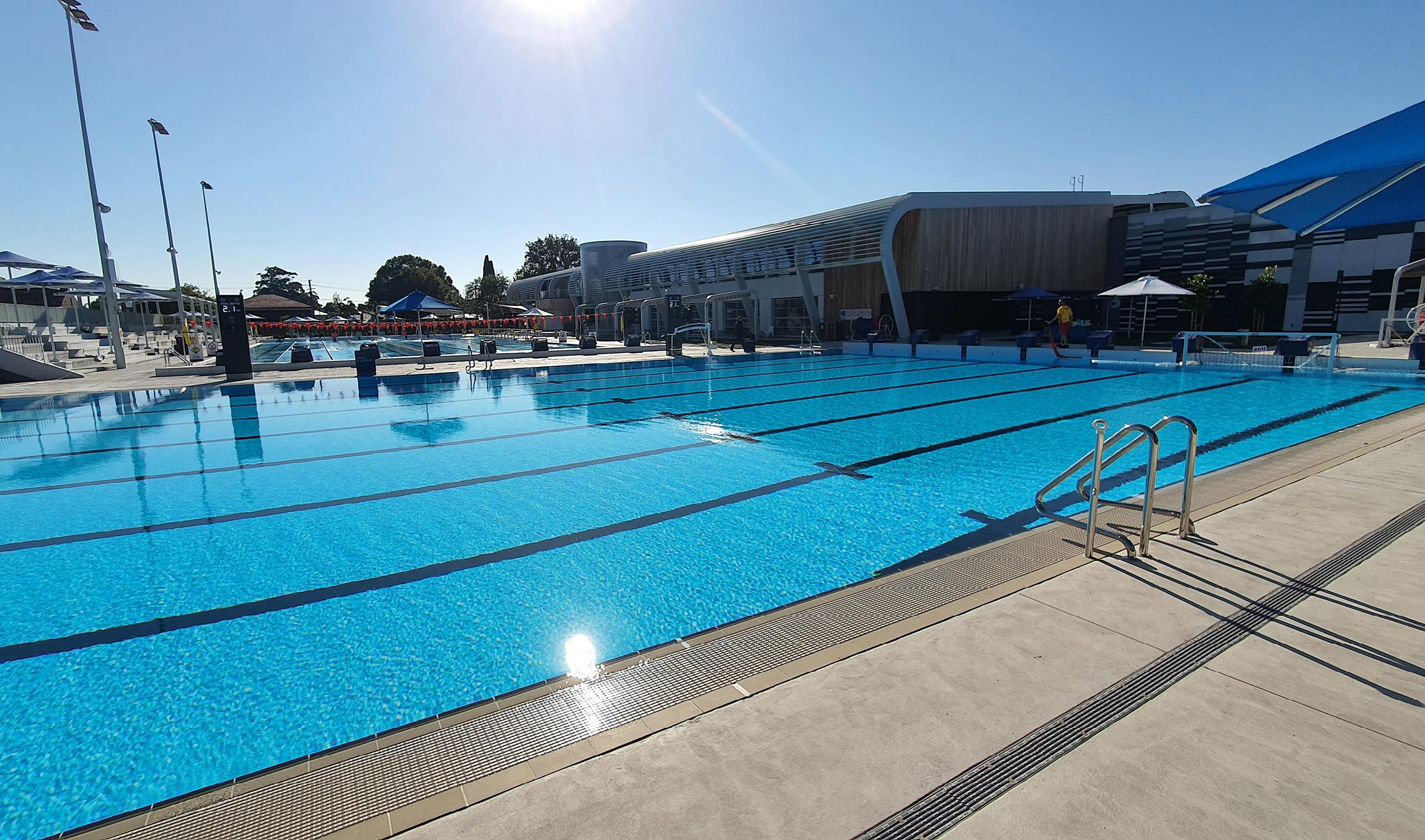
The floor itself was configured and installed by SR Smith’s engineering manager Ole Hoskinson and partners who configured a unique one-ofa-kind system that would provide a great many applications for public and private groups within the local community. Australian design elements were incorporated to present a fully functional movable floor and one-of-a-kind feature.
Once cleared of patrons, the floor is activated using a touch screen passcode and key held by an operator to optimise safety.
“Training duty managers or pool supervisors via safe work and safe operating procedures regarding the movable floor has been seamless due to the streamlined and user-friendly interface,” Pregelj says.
One example of how the technology caters to various uses is that when weak or non-swimmers are going to be using the facility, the pool can be set to a depth of 1.1-1.4 metres, so they’ll be in waist deep water.
“Another major benefit is the ability to safely eliminate the pool body when it is not in use by raising the floor to 0.0 and therefore eliminating the hazard, and no longer requiring specific lifeguard supervision,” says Pregelj.
The floor itself also acts as blanket for the pool overnight, which assists in reducing operational costs for heating in winter while also preventing chlorine loss through evaporation during the warmer months.
“The movable floor has been greatly utilised during our lifeguard inhouse in-service training as we can bring the floor to a depth where it is much easier to train and hone skills of a spinal
ABOVE: The Ashfield Aquatic Centre program pool BELOW: Setting up the movable floor at the Ashfield Aquatic Centreinjury response for example, with participants learning skills while standing,” he says.
“Since installation and operation, SR Smith, particularly Ole Hoskinson, have been incredibly generous and efficient with the information they impart to me and other operators. No request is too great, and Ole’s response times have always kept the floor operating soundly.”
At 680 square metres, Ashfield Aquatic Centre boasts one of the largest single spanning movable floors in Australia, which has allowed for a burgeoning water polo community in New South Wales to have more spaces to train, play and compete.
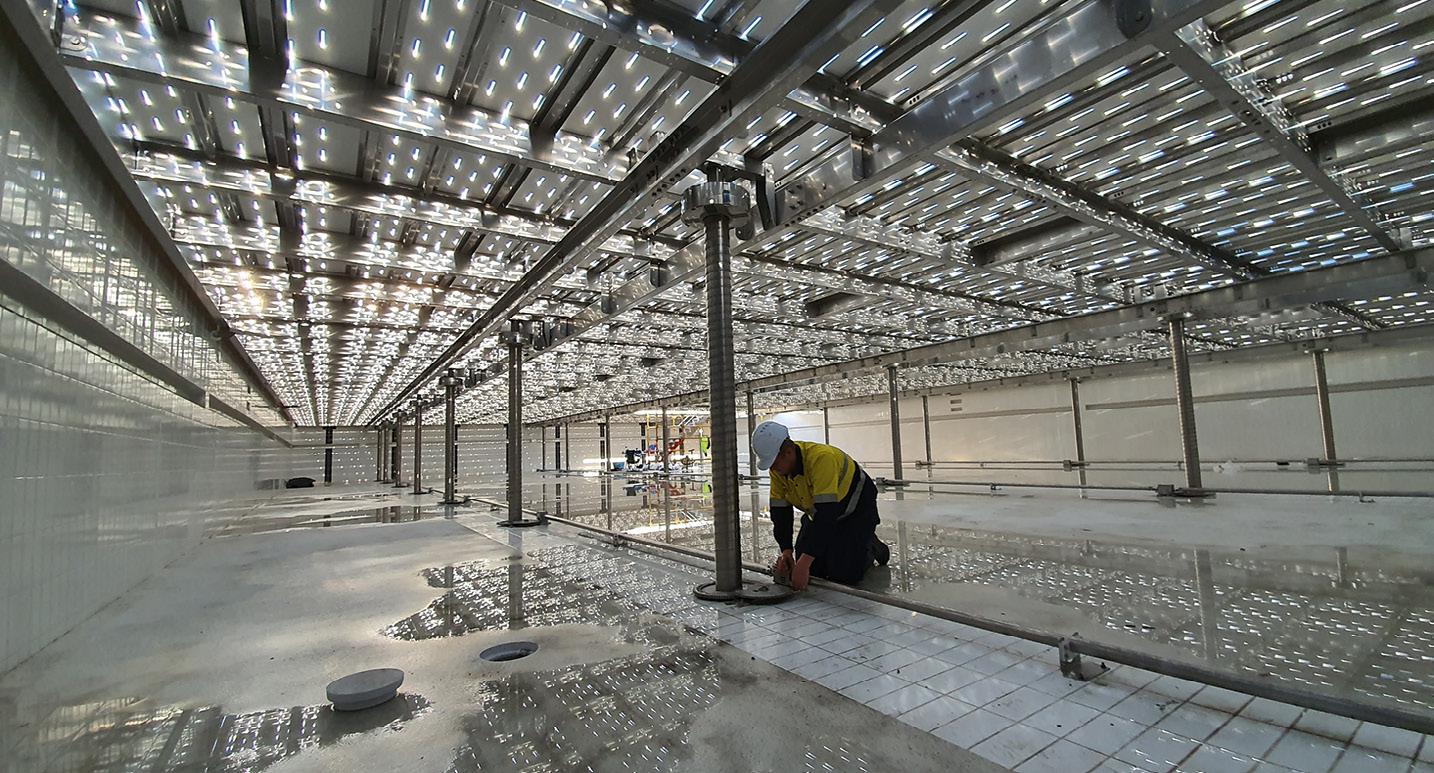
Thanks to the movable floor, hot summer nights find the program pool hosting fun outdoor movie experiences in a shallow play pool.
When the pool is closed, a complete safety hazard has been removed from the pool deck, allowing the operations to dial back deck-side staff.
Fluidra has been involved with movable floors long before acquiring SR Smith.
However, Hoskinson, who is Fluidra Australia Commercial’s engineering manager of special projects, says the strong commercial presence and success of the programming systems utilised by SR Smith Australia gave it an invaluable step forward in expanding technology and product options to their customers.
SR Smith partnered with Akvo Spiralift in 2016 to exclusively distribute within Australia and New Zealand and that partnership has grown to extend to other regions, with the support of Fluidra’s international reach.
“The Akvo system is a unique Spiralift actuator that takes proprietary mechanics to generate a lifting column by zipping two independent pieces together, similar to a zipper,” he explains.
“A single Spiralift actuator can compact tightly to under 600mm, and can become a column four metres high and capable of supporting substantial loads.”
A pattern of these actuators is positioned under a movable floor structure and interlinked to drive all together.
In preparation for an Akvo System to be installed, a small plant room near the pool is required and locations of the actuator placement must be relatively flat and free of debris.
“Overall, it’s the last piece of the pool to go in, so the entire shell can be finished and then the movable floor can be bolted into place,” says Hoskinson.

“The best part about the installation is commissioning the whole thing dry. No water is required to move the floor up or down, because it does not require water to float. At any time, the floor is structurally sound and safely locked at any position it is set to.”
An Akvo Spiralift can be typically installed in under three weeks, though Ashfield Aquatic Centre required five to six weeks due to a combination of its substantial size and covidrelated delays.
“Once installed, a floor can travel from zero to two metres in about six minutes,” he says.
Regarding the requirements for strength, durability and corrosion, 316L stainless steel is used in the substructure, including the actuators of the movable floor.
“A public pool might be paired with a plastic reinforced flooring with non-slip surface. Whereas the movable residential pool we are doing in Perth will have 40mm thick Italian tiles for a very high-end residence,” Hoskinson says.
“It’s a flexible system and the engineers at Akvo can accommodate most customer requirements with proper planning.”
 TOP LEFT: The setup progresses
TOP RIGHT: The floor is in place
TOP LEFT: The setup progresses
TOP RIGHT: The floor is in place
Gala Systems is a subsidiary of Group Paco, and like Akvo Spiralift, the company has been in the business of transformational stage designs since the 1980s. It has extended all the safety and engineering into the Akvo Spiralift division.
“Everything leaving the factory meets and exceed the requirements of EU Standard EN1345111, with secondary and tertiary safety checks from hardware to software,” says Hoskinson
Maxime Carpentier, director of business development, says the Spiralift is at the heart of Akvo’s movable pool floor.
“It is a compact lifting device that can be deployed up to five meters. It fits into less than 500mm, providing an expansion ratio up to 10:1,” he explains.
“Engineering optimises the amount of Spiralift units and structure design to provide the best overall solution for the customer. We can easily add a Spiralift unit for accessories or other custom design features as required. With this set-up, we have no size limitations (length nor width) and no-load limitations either as drive and structure are both calibrated accordingly.”
Originally designed for orchestra lifts in the 1980s, this powerful mechanical technology has since been used in a wide variety of applications, resulting in more than 30,000 units in operation throughout the world.
“Now adapted for aquatic environments, it allows the height of a pool floor to be adjusted on demand, in just minutes, at the touch of a button,” says Carpentier.
“Our solution is scalable and customisable. We can offer light loading capacities for aquatic activities floors. We can also meet heavy-duty commercial loading capacities for deck usage in hotels and other venues requiring the pool to disappear altogether.’’

MINERGENIX is formulated based on world's first scientific evidence that demonstrated magnesium absorption through skin.
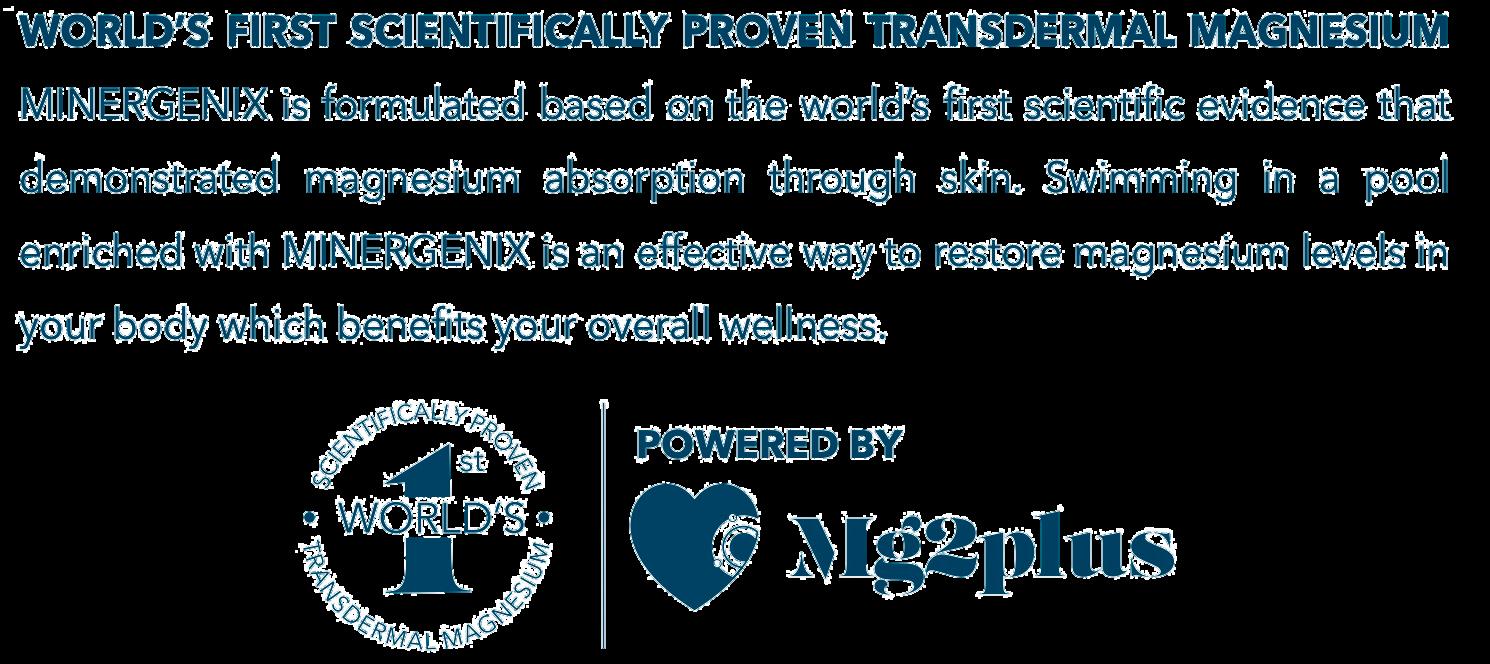

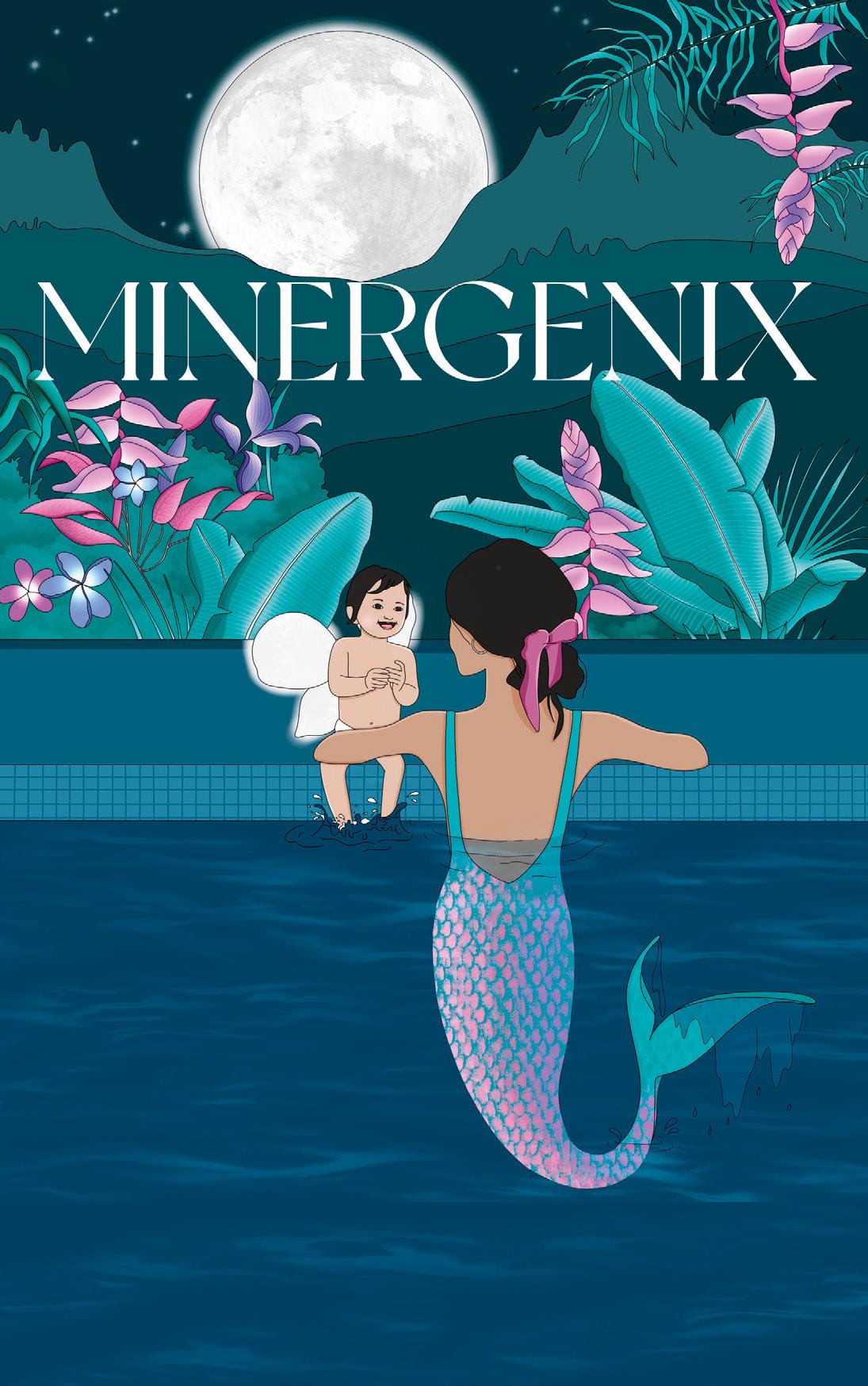
mg2plus.com.au

The only mineral blend for swimming pools formulated by magnesium expert, as intended by nature and science.
Once installed, a floor can travel from zero to two metres in about six minutes
Carpentier attributes the increasing demand for movable pool floors to its relative ease of operation and its none-to-low maintenance.
“The movable pool floor is both password and key protected for maximum security. The user can set a desired depth through the touchscreen which triggers the movement,” he explains.
“The system is quite simple to operate and doesn’t require much training — about 30 minutes to an hour is enough for an operator. As there is no yearly maintenance nor periodic adjustment required, providing the building operators with the necessary information to keep the system running is covered within an hour or so.
The Tieleman floating pool floor is an entirely different type of system.
A family-owned company based in the Netherlands, Tieleman Pool Technology has been

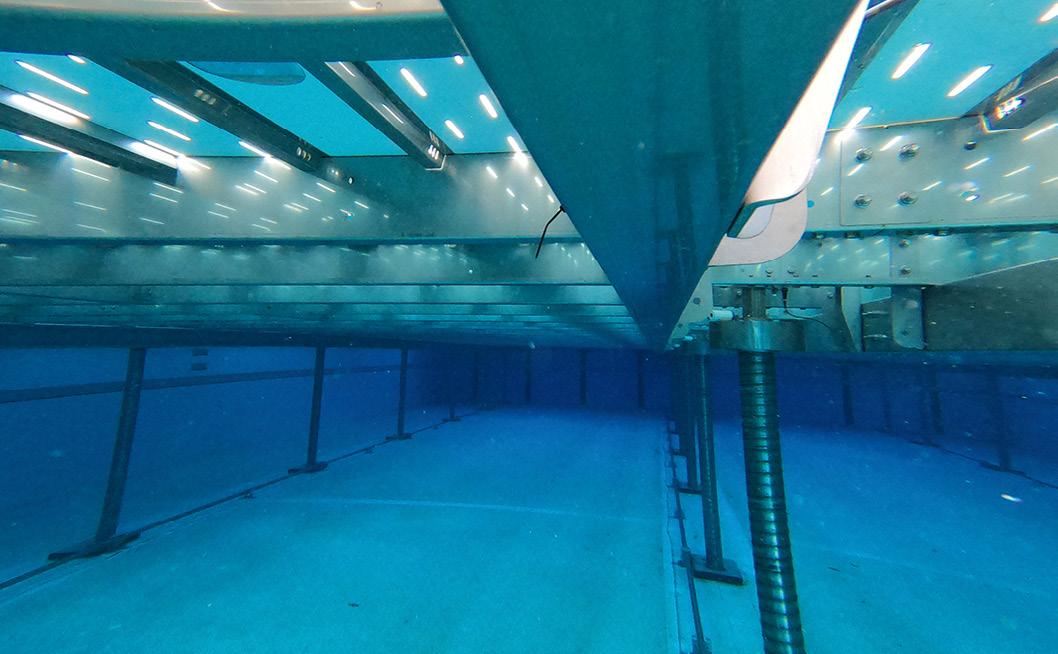


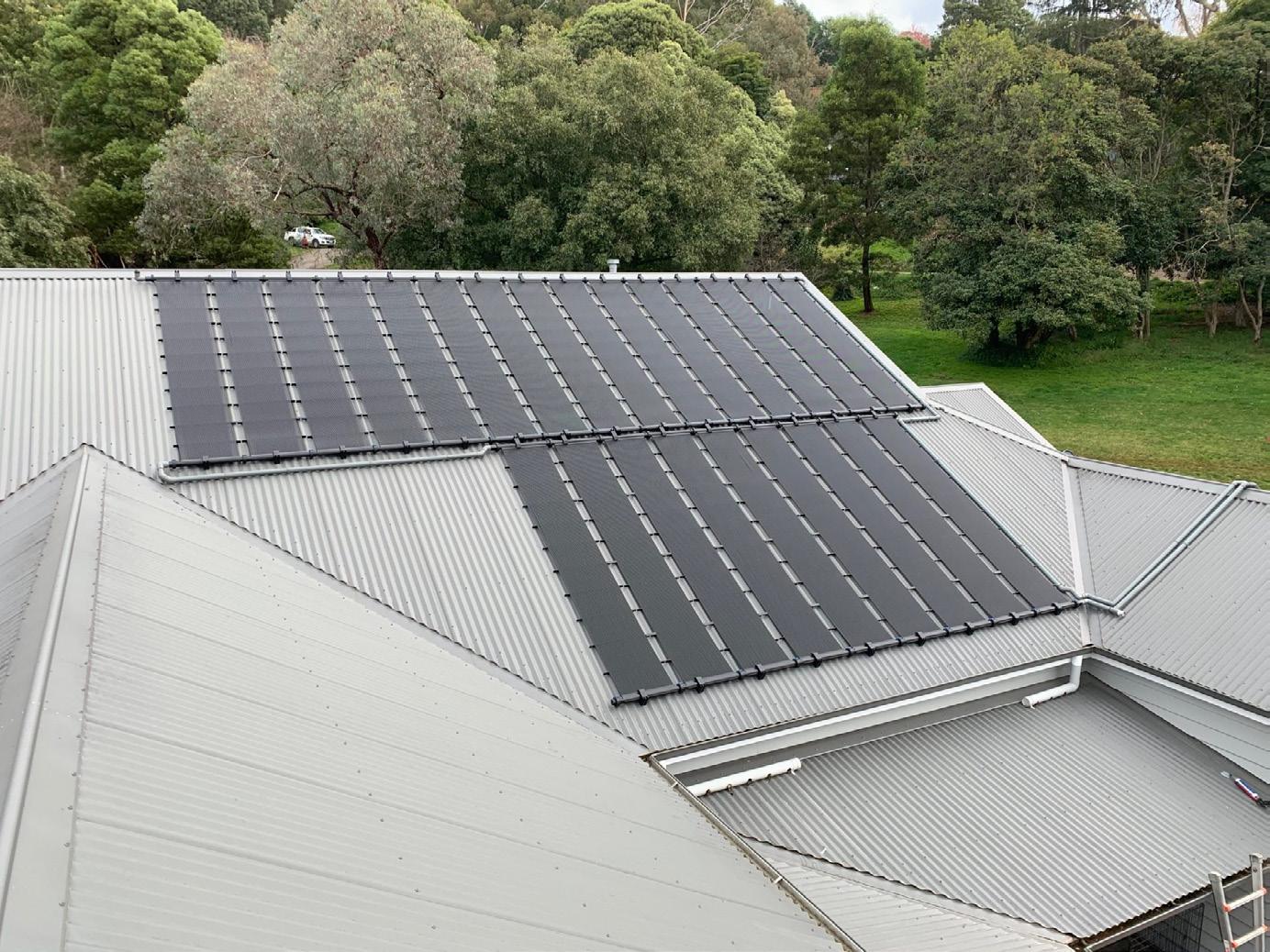
designing, engineering and maintaining high quality swimming pool solutions since 1970.





It originally started with movable floors for medical institutions as variation in depth is a key factor for successful hydrotherapy. However, over the past couple of years, the residential and aquatics markets have discovered the versatility and benefits of this high-tech pool feature.
“Over the years, the product has evolved into a state-of-the-art pool solution that is not only suitable for medical institutions but has also made its way into the aquatic and residential

market. Technology has been highly improved and there are countless add-on options for movable floors nowadays,” says Koen van Swaemen, marketing and communications manager at Tieleman.
“For example, we have already built several residential floors in the Netherlands, Belgium, England and Israel, and have projects coming up in Germany and the Bahamas.”
Swaemen. “In addition, the isolated surface of a movable floor prevents water evaporation, heat loss and contamination of the pool.”
The Tieleman movable floors have a high bearing capacity, starting at more than 100kg per square metre. The floating principle means that integrated in the structure are solid buoyancy devices that allow the pool floor to float to the surface. This means all technology is concealed within the frame of the movable floor and there are no cables along the pool wall, which ensures a high level of safety and a clean finish.
The Tieleman movable floor system consists of a marine-grade 316L stainless steel construction, which features a pulley system with a water-based hydraulic cylinder.
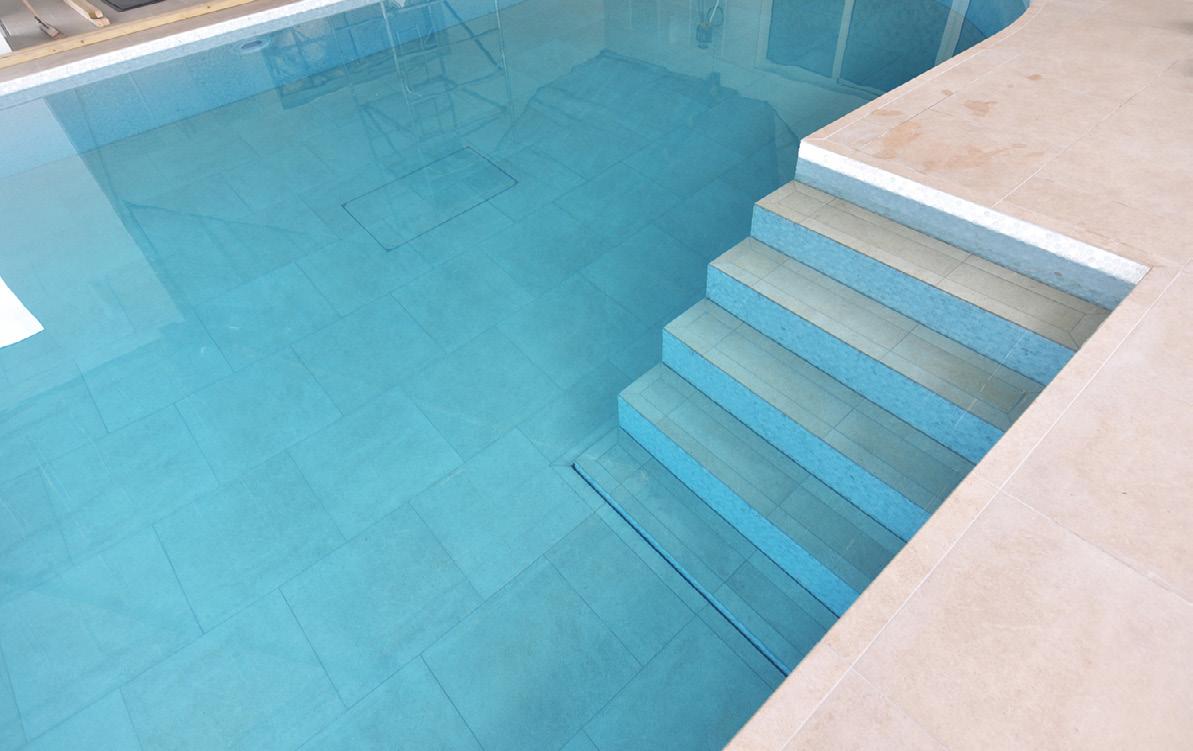

So, what are the benefits of a residential movable floor?
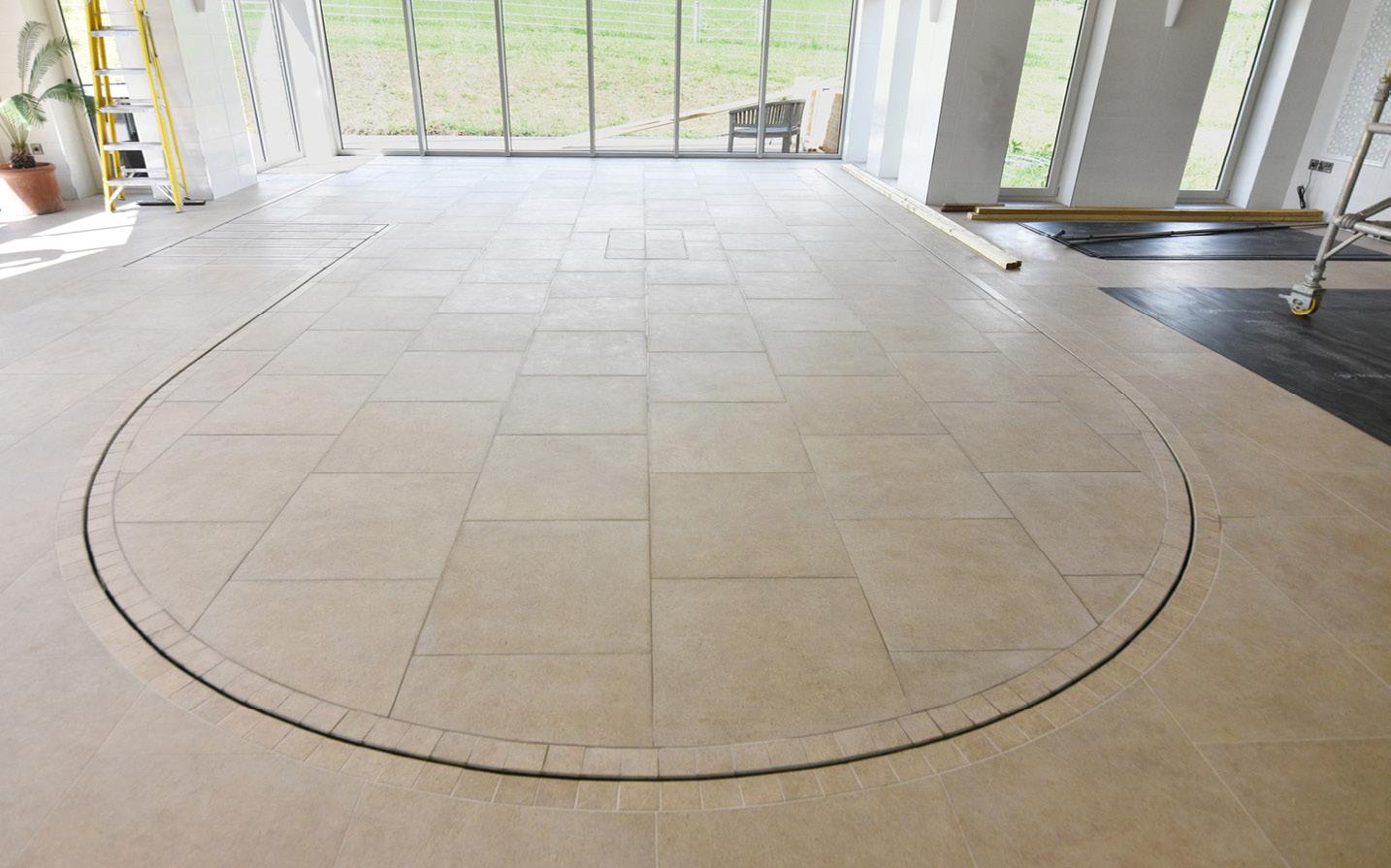
A movable floor enables you to transform your swimming pool into a multifunctional area that can be used for different activities. For example, at its highest position (closed), it can be turned into a patio, basketball court or party venue.
At a lower position, it can be used for mid-depth pool games and aquarobics, and fully down it creates a full-size swimming pool to splash or swim laps.
“In the closed position, the movable floor ensures ultimate safety as the pool is inaccessible for incorrect or unsupervised use,” says van
“For applications with highly corrosive environments, such as swimming pools, marine grade 316L stainless steel is far superior and will have an extended lifespan compared with 304-grade. And because we work with a water-based hydraulic cylinder, the risk of (oil) contamination to the basin is excluded,” he says.
Besides this, every Tieleman movable floor is customised to incorporate other ideas or options desired by the client, such as integrated stairs, integrated sun decks, lounge areas and swimout benches.
“That is why Tieleman is setting the bar when it comes to movable floors and associated options,” van Swaemen says. “The shape is only limited by the available space and additional features are engineered and designed to match the pool and its surroundings.”
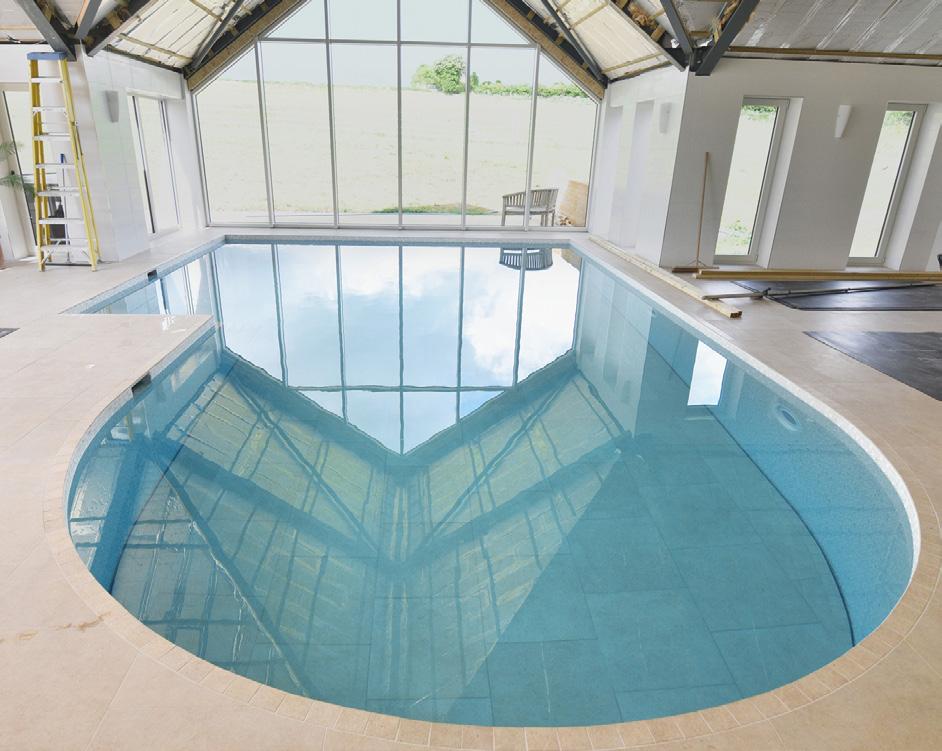 ABOVE: A Tieleman project in England with an 8.8m by 5.65m movable floor
ABOVE: A Tieleman project in England with an 8.8m by 5.65m movable floor
"In the closed position, the movable floor ensures ultimate safety as the pool is inaccessible."
If you’re looking for a pool or spa professional to assist with your business, the choice is clear.

SPASA members set themselves apart from the rest of the industry by setting standards of skill, workmanship and ethical business behaviour in the best interests of the pool and spa community.
Why trust anyone else?
The Tieleman system is controlled by means of a push button, touch screen or a mobile device. When you push the button to lower the floor, the water-based hydraulic cylinder pulls the movable floor underwater.
When the floor is moved, the water will gently flow through the small gap between
the floor and the pool wall. Within about five minutes your swimming hall, patio or living space is transformed into a full-size swimming pool.

“As the operation is convenient, it only takes several minutes to understand how to use the product safely. This allows medical institutions, hotels, public pools, sports centres, and residential clients to be able to use their floor in a flash,” says van Swaemen.
With few movable parts as possible, maintenance and wear are kept to a minimum.
“As a result, you only need to have maintenance performed by Tieleman Pool Technology once a year or once every two years,” he says. “During this time, the specialists of Tieleman, who are A1 certified divers, also dive under the movable floor. In this way, everything is checked and maintained in detail. Therefore, our floors have an average lifespan of up to 25 to 30 years.”
The finish of a residential movable floor deck is glass fibre reinforced plastic (GRP) with a roughened surface ready for tiling. Some options available are natural stone, mosaic and ceramic tiles.
Tieleman’s technology was used for one of Europe’s deepest diving pits, located in Enkhuizen, The Netherlands. The training centre for professional divers features a movable floor

that offers a safe solution to perform courses at specific training depths.
“This movable floor has a reach up to 21 metres and includes a section of the frame that can be removed, allowing divers to reach a maximum depth of 50 metres,” says van Swaemen.
“This just demonstrates how versatile a movable floor can be.”

Ideal for medical applications including aquatic therapy, movable pool floors can be adjusted with the simple press of a button. Because of the buoyancy of the water, the loading on patients’ joints can be reduced, which makes it easier for them to move about and practise exercises.
With age, height and agility determining the best depth to exercise in, this technology helps set the correct pool depth for any given client. The floor can also be raised easily to deck level, enabling patients to be safely and seamlessly transferred in and out of the rehabilitation pool.
“Our mechanism makes it possible to infinitely adjust the pool to any desired water depth,” says Koen van Swaemen.

“As a result, children can safely learn to swim and users in rehabilitation can perform exercises with varying degrees of muscle exertion.”
In addition to partition walls that enable different target groups to enter the pool safely at the same time, Tieleman also offers a tiltadjustment feature that provides patients with ascending and descending resistances during rehabilitation. n
ABOVE: The pool fully open
LEFT: Tieleman built a pool for the Royal Antwerp Football Club for players’ post-match recovery and hydrotherapy


Contacts:
www.akvospiralift.com
www.fluidra.com.au
www.galasystems.com
www.innerwest.nsw.gov.au
www.srsmith.com
www.tieleman.eu

Carol Jennings is a Canberra-based swimming instructor who has neurodivergent children. Her experiences led her to develop the WaterWombats swim program, which has been proving exceptionally successful.
Sadly, children living with autism spectrum disorder (ASD) are three times more likely to drown than their neurotypical peers.
In fact, statistics show 90 per cent of accidental deaths among children with autism are due to drowning. These frightening statistics make it imperative that prevention strategies are put in place, especially learning to swim.
“The statistics are very confronting,” says Carol Jennings, owner of the Water Wombats swim school.
“Many children on the autism spectrum are drawn to water,” she says. “This coupled with potentially limited environmental awareness and understanding of danger, and sometimes being prone to abscond or run away from safe environments, heavily impacts on the drowning or near drowning incidents.”
Jennings believes these drownings could be mitigated by having more tailored programs that specifically teach neurodivergent children in ways that enable them to learn according to their own preferences and abilities.
This would include more strategic collaboration with SwimSafer Week for Schools. Neurodivergent children need support to be able to participate in these programs, and if it is not available, they are often excluded. Support is typically one-onone, or the requirement for picture exchange communication cards (PECS).
“I think more education, training and support for swim schools to provide tailored programs is needed,” she says.
“There is really so much we can do as a community. It doesn’t have to cost a mint, it could be something small such as, for example, doing a Puggles training course – which is like
Auslan for swimming – to help non-verbal kids communicate, or having a session where parents can be in the pool – even for older kids.”

She says it’s also important that instructors are aware a child may need more time to process information and decode instructions in a noisy space.
“It’s not they are being naughty or ignoring them, it’s just hard for them to decipher all the sound. Things such as instruction, demonstration and PECS can help to decode the action that is required of them.”
The birth of WaterWombats Jennings has neurodiverse children with autism spectrum disorder (ASD). She became frustrated as they struggled with mainstream learn-to-swim programs.
“This was the catalyst to research what was out there, including different aquatic therapy models, and eventually starting WaterWombats,” she says.
“I have had swim coach qualifications for about
The Halliwick Concept was developed by the swimming instructor and engineer of hydromechanics, James McMillan MBE and his wife Phyl McMillan MBE in the late 1940s and early 1950s. It focusses on teaching people with physical and/or learning difficulties to participate in water activities, to move independently in water and to swim. The concept is based on hydrostatics, hydrodynamics, and body dynamics. The main goal is to encourage participation in water activities, to encourage independent movement, and to teach swimming through its ten point plan.
10 years, am an allied health community worker and have qualifications in Halliwick (advanced and instructor). I have a masters in disability and inclusion with autism specific certifications.”
She also is a student of Ai Chi, aqua yoga and Watsu, an extremely gentle form of therapeutic massage conducted in warm water, combining elements of Zen Shiatsu massage techniques, including muscle stretching joint mobilisation and movements.
The WaterWombats name was designed to be quirky, fun and identifiably Australian.
“The wombat in First Nations culture is a very wise, resilient, steadfast and determined creature. It is unique in so many ways. I appreciate those qualities and I think they fit the overall theme of what it takes to overcome adversity and challenges,” she says.
She says the predominate challenges for neurodivergent kids to learn at traditional swim schools are often related to the fact the centres are busy and noisy.
This can be overwhelming for a child who has auditory processing challenges or sound sensitivity. Lessons are also often fast paced and highly structured, which is extremely difficult if already overwhelmed by noise of the centre.
“We need to look at swim instruction through a different lens – it’s not just about being a physical movement coach. It’s a holistic practice of mind, body and environment. Relationship and trust in the instructor are so very important for the child to develop confidence in their own abilities – our kids are told that they ‘can’t’ way too often!”
The WaterWombats allied health based program is run by a multidisciplinary team.
“This means we can draw down on therapy frameworks such as exercise physiology and occupational therapy,” she says.
“We use a variety of techniques to teach the skills. Many children on the spectrum are visual learners – and swimming lessons are often full of verbal instructions. The team also have qualifications in aquatic therapy modalities such as Halliwick and Watsu.

“When the child enters the program, we look at their needs, strengths and personalities. From there we tailor and individualise a swimming plan for them which could include the use of key sign (Auslan) or PECS cards and allocate an instructor based on that profile.”
She believes every club or school could provide inclusive and adapted services – and the need is evident – diagnostic rates of autism are increasing, with recent figures stating 1 in 44 people are affected, and neurodivergence includes more people than just those with autism.
“We need to do more as an aquatic community to ensure our children learn lifesaving skills and have pathways to access sport and recreation with family and friends at the pool, beach or river,” she says.
“Teaching a child with autism to be safe around water is not just teaching a skill – it’s a holistic benefit to the family that may be afraid of leaving the house due to a child absconding and being attracted to water. Teaching a child is providing a family access to what we all take for granted – recreation, fun, community.”
She says that many families have come to her after a near miss.
“Both child and families are often traumatised. The fact we can rebuild the child’s confidence in themselves and build skills is rewarding and I think gives families hope that they can have a holiday at a resort or go to the beach without being terrified.”
A unique aspect of WaterWombats is they have a holistic program model that provides additional family support in the form of social work. They can provide services to link in with other programs, referrals and counselling.
“A parent recently thanked me for ‘giving their life back’. They were able to go to their family at Christmas and celebrate in the backyard with a barbecue and pool fun without being terrified.
“It was a wake up for me as often we don’t realise the ripple effect of our work. Full credit goes to that child for trusting in themselves, and in us, to move past the fear of water. And most of all to that mum who never gave up.”
Jennings is currently talking to a couple of swim clubs in New South Wales to provide consulting and support to improve their access to swimming for neurodivergent children, and is also looking at a potential expansion of WaterWombats into Victoria.
“We are open to working with schools and clubs to help them help their communities be safer, or who may want to have a WaterWombats program,” she says. n
Everyone’s brain operates differently. For the average individual, brain functions, behaviours and processing are expected to meet the milestones set by society for developmental growth. For those who veer outside of these parameters, their brain functions could be classified as neurodivergent.
Neurodivergent is a non-medical umbrella term that describes people with variation in their mental functions, and can include conditions such as autism spectrum disorder (ASD) and other neurological or developmental conditions such as attention-deficit/hyperactivity disorder (ADHD).
Autism Swim: autismswim.com.au
Puggles Swim Course: www.deafchildrenaustralia.org.au
SwimSafer Week: www.swimsafer.org.au
Water Wombats: www.waterwombats.com
“More education,training
andsupport
forswim schools
toprovide tailored programs is needed.”
TRADE
Gold Coast Convention & Exhibition Centre

LARGEST TRADE EXPO IN THE SOUTHERN HEMISPHERE
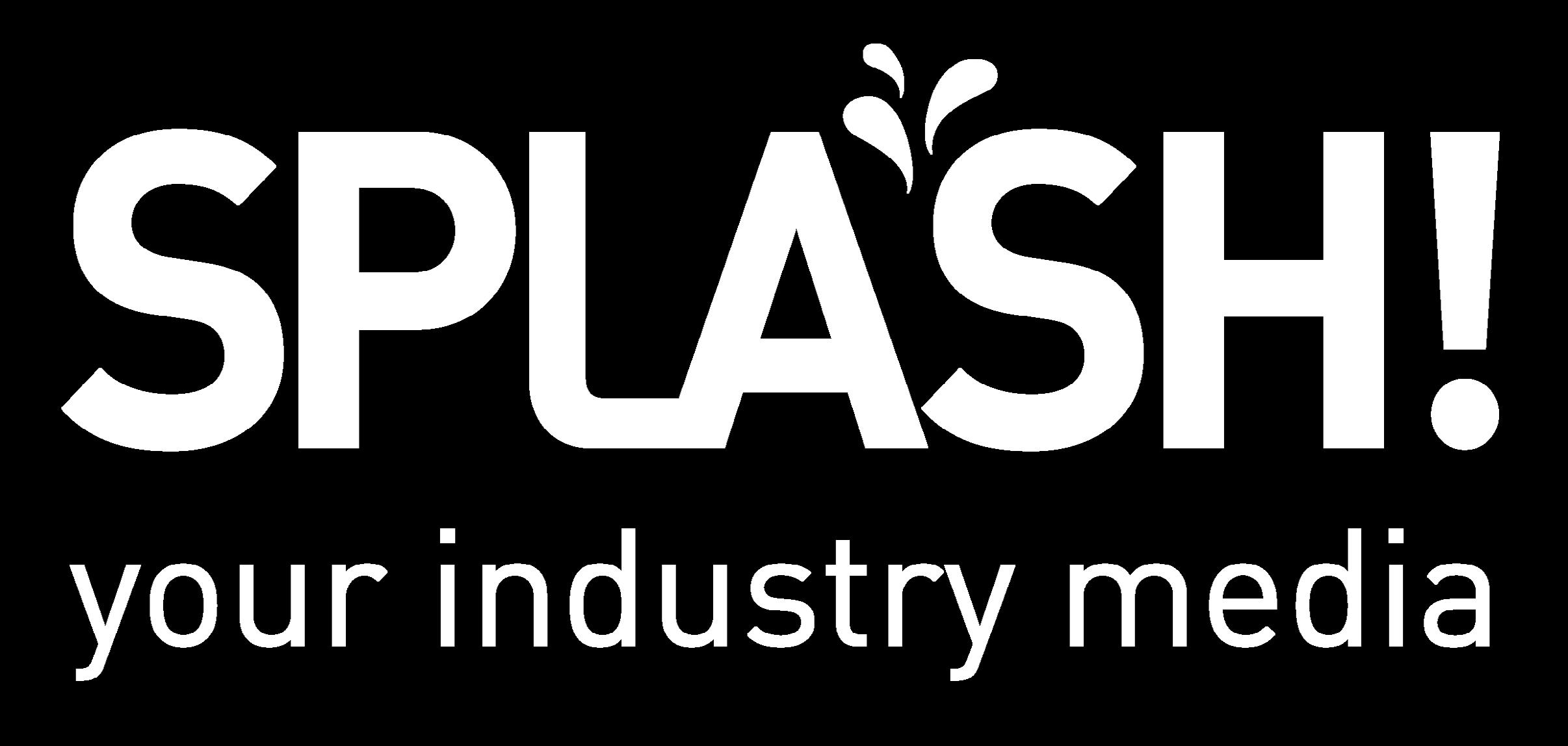
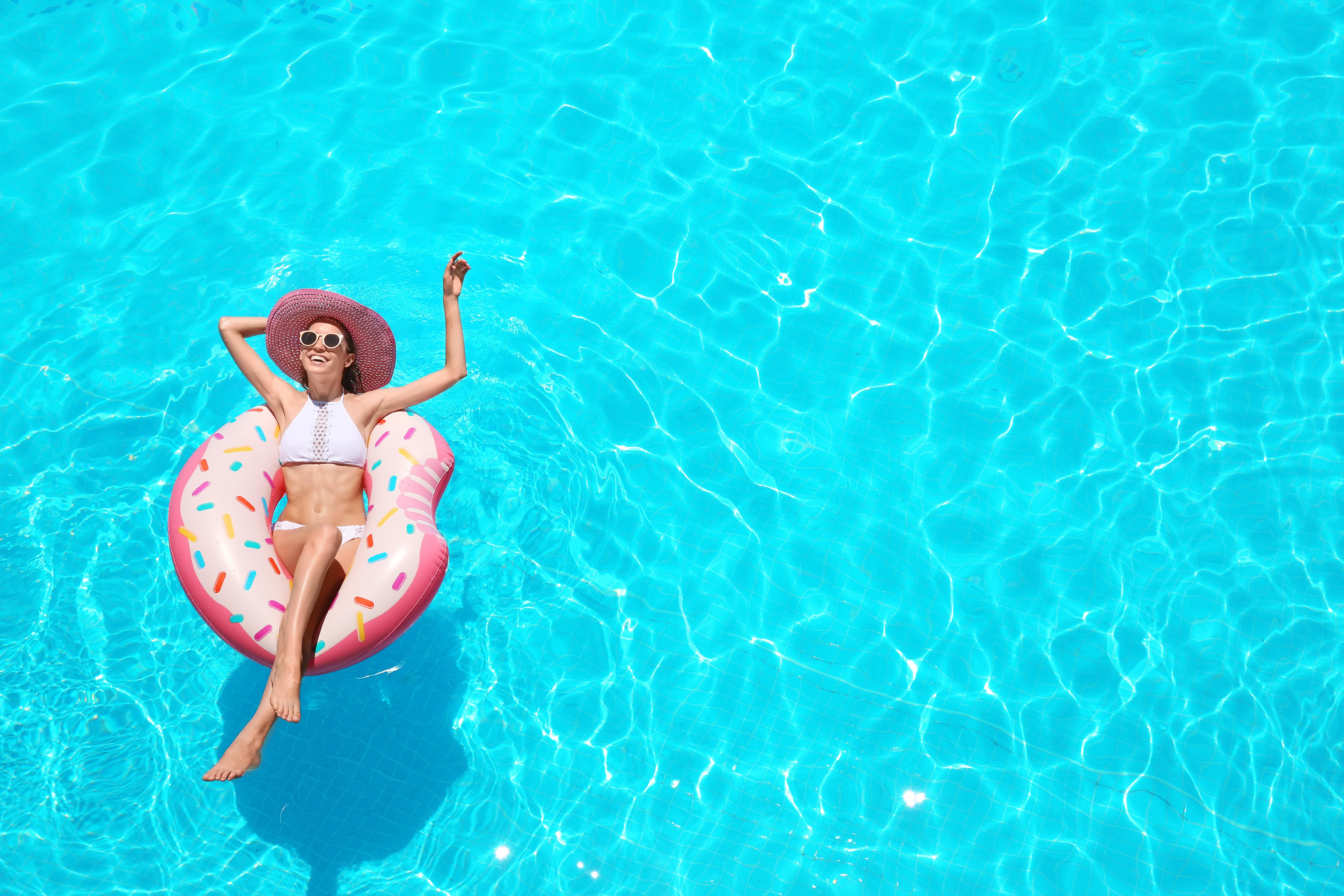
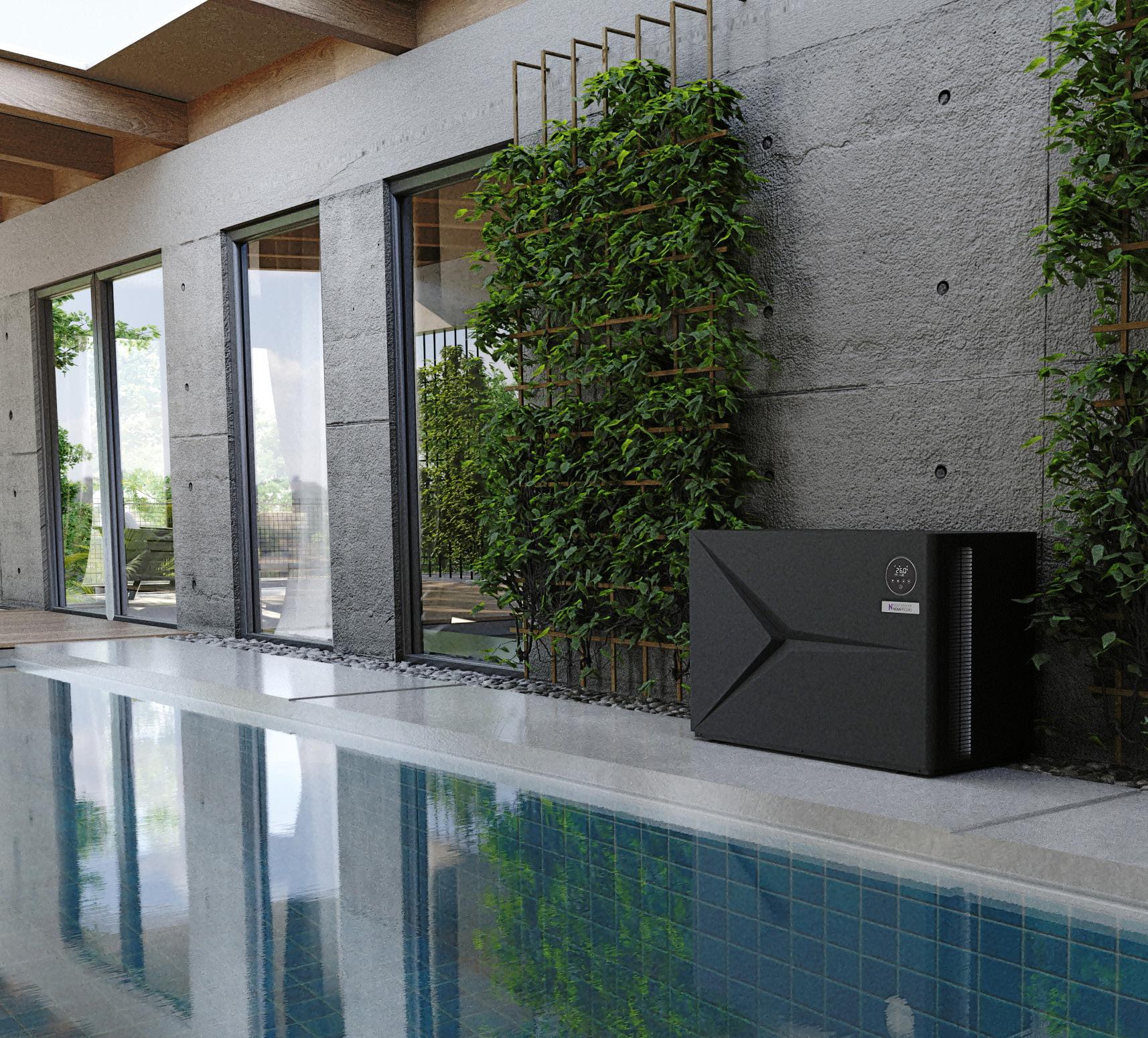
Supreme Heating’s new Nova-Pro290 is the Australian residential pool industry’s first heat pump that utilises R290 as a refrigerant.
Director Colin Mauger says Supreme is a company dedicated to environment-friendly solutions, and the Nova-Pro290 represents a significant step forward in sustainable pool heating technology.
R290 is a natural hydrocarbon (propane) that has dramatically lower global warming potential (GWP) than other commonly used refrigerants: current IPCC ratings rate it below 1 (actually 0.072), revised from an earlier, already very low rating of 3. This means
Propel yourself through the water with the push of a button. The Sublue Hagul EZ underwater scooter has a simple, smooth design and weighs just 3.5kg.
It can be used safely by children, beginners and even those who are not quite confident in the water – although the scooter is not a lifesaving or floating device and supervision is essential in these cases.
The scooter has an inbuilt lithium battery, lasting up to 50 minutes, providing plenty of time to enjoy an underwater adventure.
Speeds switch between four and five kmh, and you can speed along the surface or all the way down to 15 metres. Suitable for all ages, it can be used in the pool, on the beach or other bodies of water.
Contact: www.underwater.com.au
the Novapro290 will have a much lower impact on the environment than heat pumps using other refrigerants. The lower the rating, the less global warming impact. By comparison, other commonly used refrigerant R32 has a GWP rating of 771 (recently updated from 675). Additionally, R290 is highly energy-efficient, meaning lower energy bills for pool owners.
The Nova-Pro290 features a state-of-the-art compressor and heat exchanger, proving rapid and efficient pool water heating. It can be used for residential and commercial pools, has a sleek compact design and its side-discharge makes it a space saver for pool owners.
Contact: www.supremeheating.com.au


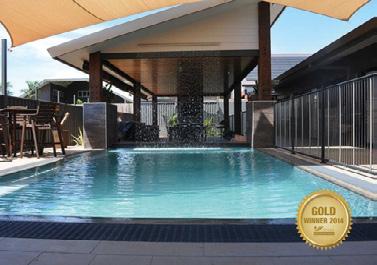


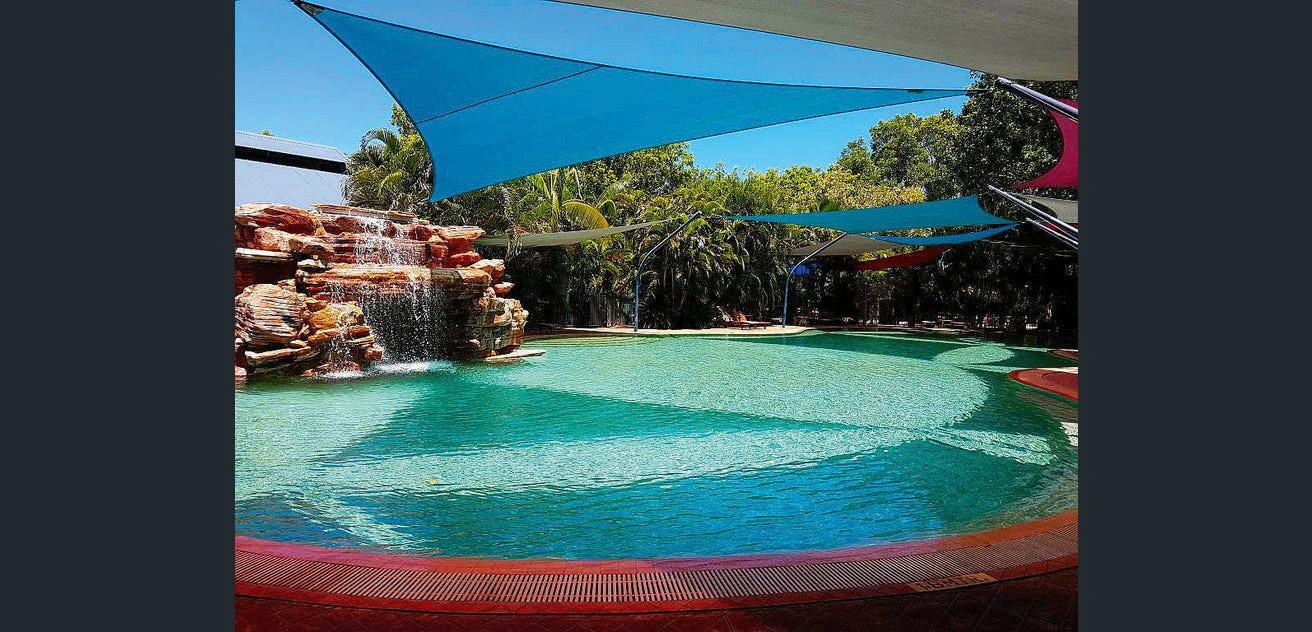
Palintest managing director Mark Davison says their new Lumiso Pooltest Expert is designed to allow easy results logging, automatically saving key information such as dates, times, user, and even labels, as well as supplementary information such as real time notes and pass or fail indications.
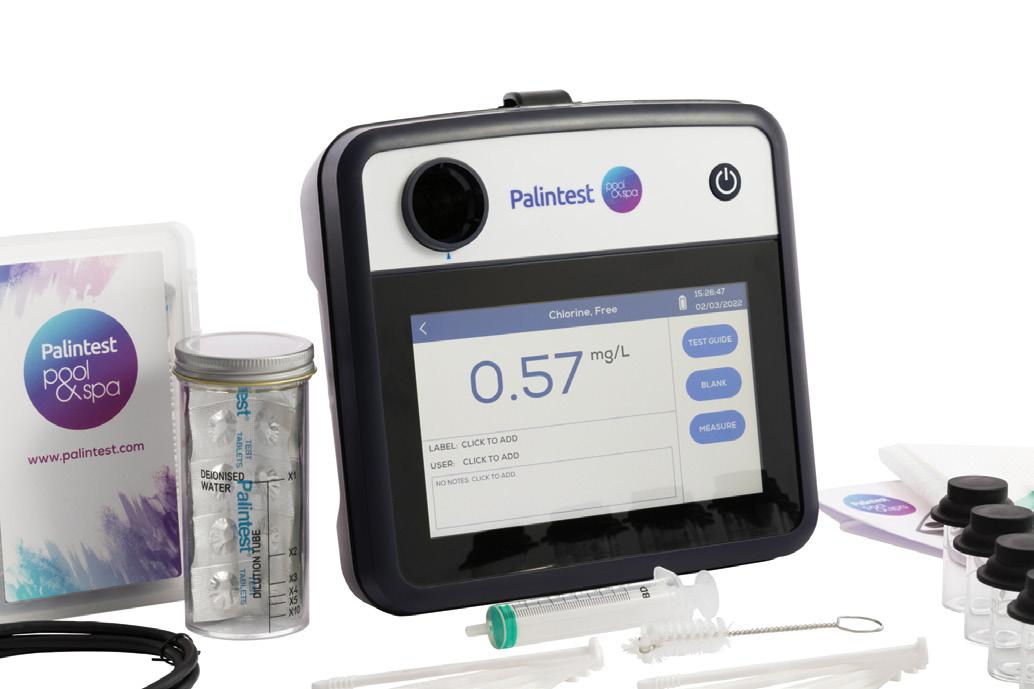
“These results are easily filtered on instrument by date, time, parameter and by pass and fail – spending time flicking through results is a thing of the past,” he says.
Contact: www.palintest.com.au


Australia has the highest rates of melanoma anywhere in the world, with Queensland the most affected state.
Bakslap was invented after Raphael McGowan’s sister passed away from a melanoma in the middle of her back. He decided to spread awareness of the danger while helping to protect swimmers and other people outdoors.
The Bakslap can apply sunscreen to that spot in the middle of your back that is always missed. The Bakslap is 37cm in length so swimmers can now get to every spot.
Contact: www.bakslap.com.au
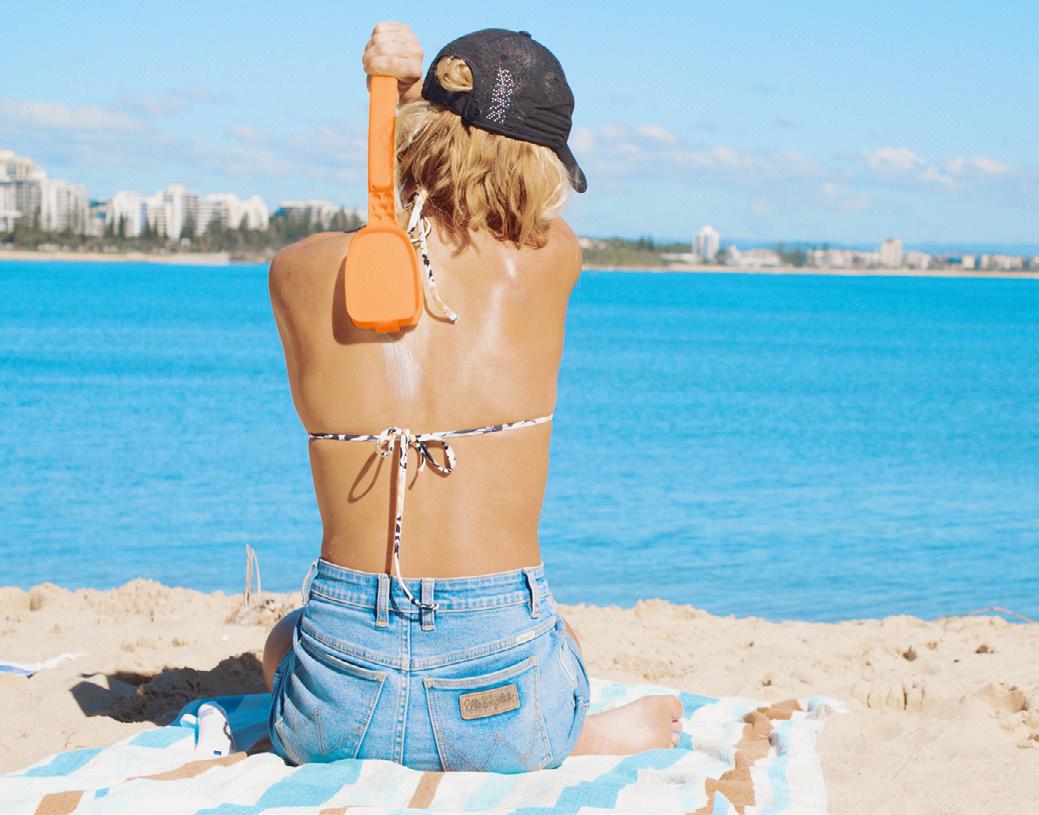
Please find enclosed my cheque/money order for $_________ payable to The Intermedia Group Pty. Ltd. OR please charge my:

Within Australia *
$AUD65.00 – 1 year, 6 issues
$AUD104.00 – 2 years, 12 issues – Save 20%
$AUD136.50 – 3 years, 18 issues – Save 30%
* Prices quoted include GST
Overseas Rates
New Zealand
$AUD75.00 – 1 year, 6 issues
Asia Pacific
$AUD80.00 – 1 year, 6 issues
All Other Countries
$AUD90.00 – 1 year, 6 issues
We are committed to handling your personal information in accordance with the privacy act.
Please Select one of the following:
Yes No - Please send me information about special offers and or events from SPLASH!
